NOTE: WE ARE HAVING A REDUCTION SALE ON THIS PAGE. ALL ITEMS ARE 30% REDUCED!!!
---
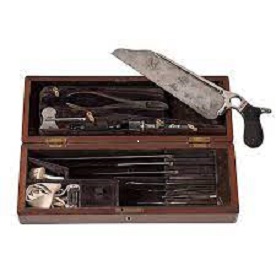
NOTE: WE ARE HAVING A REDUCTION SALE ON THIS PAGE. ALL ITEMS ARE 30% REDUCED!!!
---

Anything you like? STOCK REDUCTION ON THIS MEDICAL ITEMS PAGE. 30% OFF WHILE ITEMS LAST. INQUIRE! Email us at tc1861@yahoo.com or ted.caldwell@comcast.net Thanks!
---------------------------------------------------------------------------------------------------------------------------------------------------------
TC
Pill roller
Offered is a nice example of a 19th Century Pharmacy "tool of the trade" known as a pill machine but often referred to as a pill roller. Pill machines were designed to enhance the productivity of the early pharmacist, and this design was, indeed, popular for many, many years. This pill machine is designed with 24 tubes for medicine-making. The condition is very good, having a nice patina showing its age and use. It is constructed of walnut and embellished with brass edge guards as well as brass grooved molds. The paddle is in as good a shape as the base. The base measures approximately 12 1/2" L x nearly 8" W x 1 3/4" H at the foot end otherwise it measures 1 inch thick. I have seen a pill roller just like this one several times on Gunsmoke where Doc Adams was producing pills! An apothecary classic, ready for your collection! $150.00
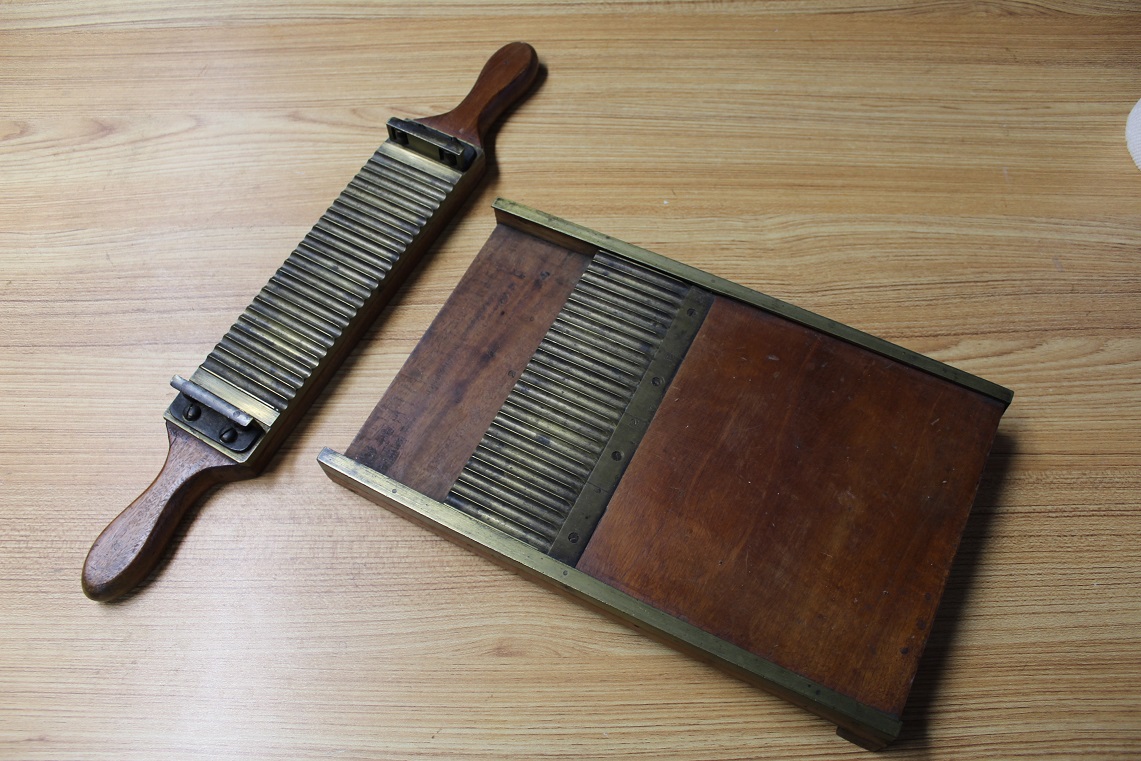
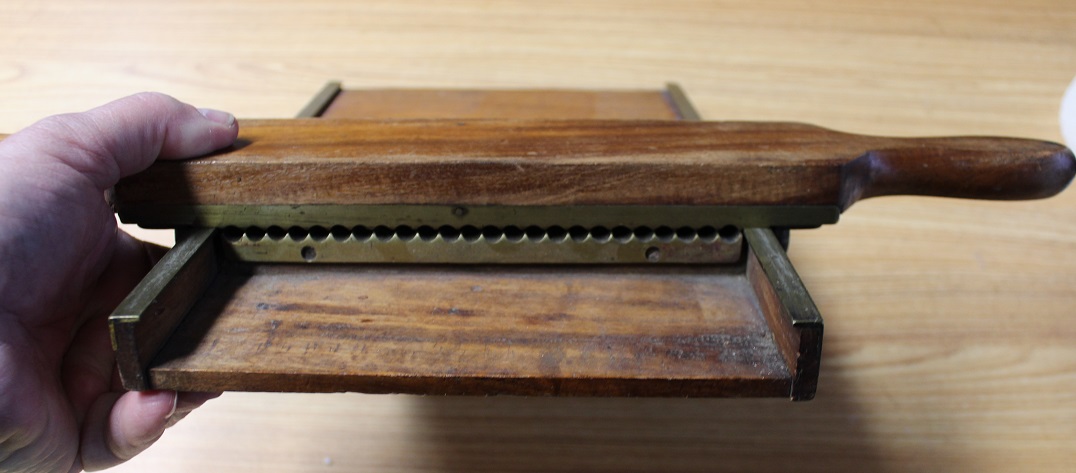
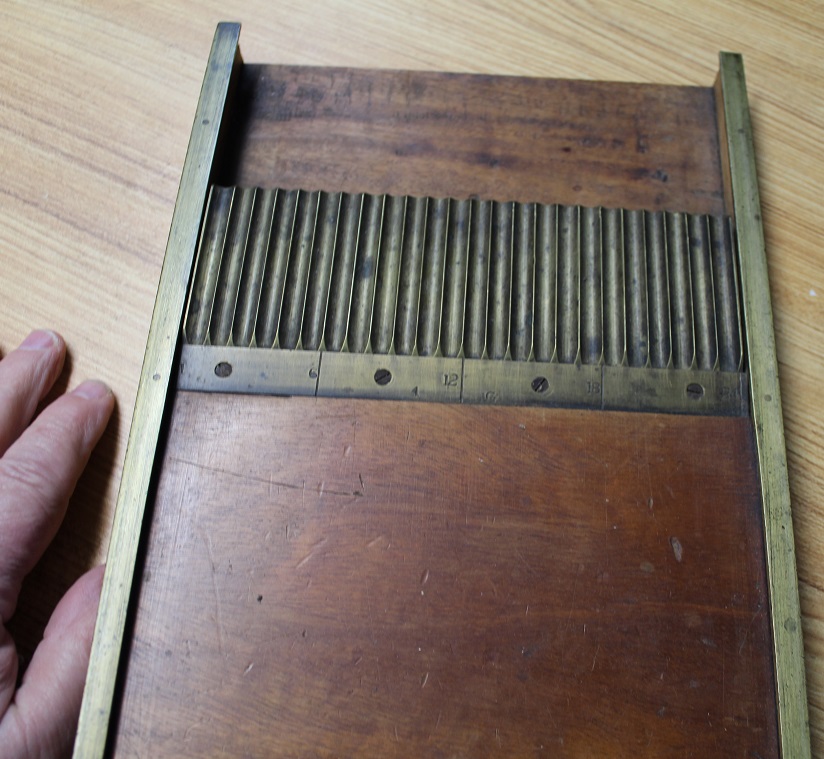
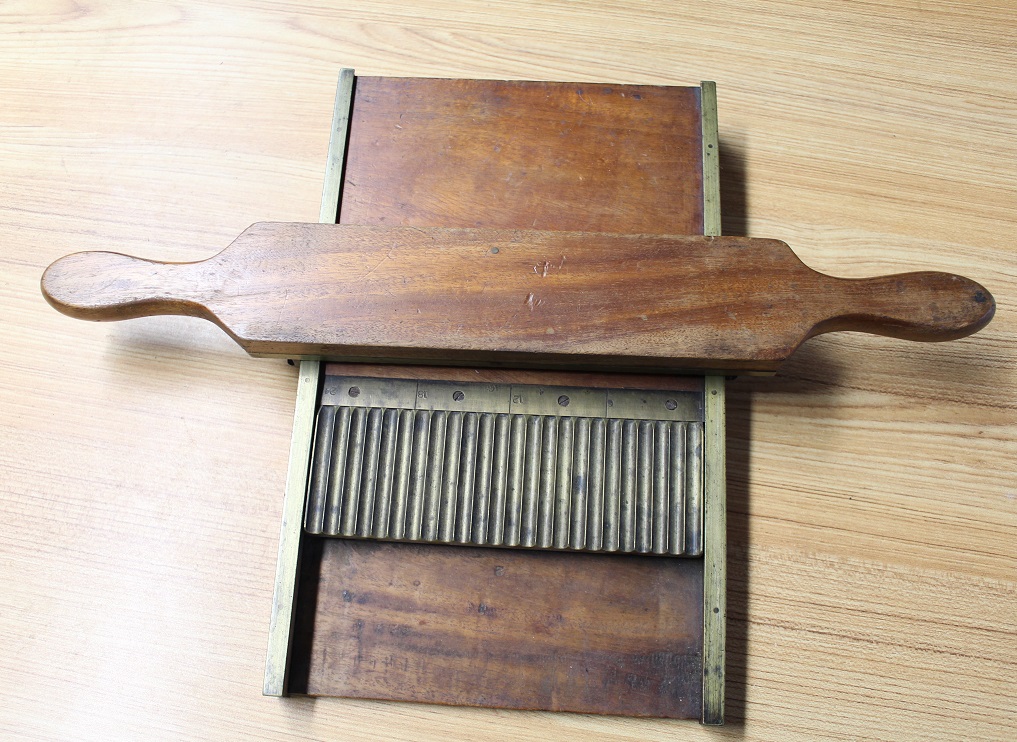
__________________________________________________________________________________________
TC Mortars and Pestles
Here we have a small collection of porcelain and 1 glass mortar and pestles used in medicine manufacturer. These 4 were used by a Civil War Reenactment Doctor in his performances. A is porcelain/stoneware and measures nearly 5 inches across with a 4 3/4 inch long pestle. B is also heavy porcelain/stoneware being about 4 3/4 inches across with a 5 3/4 inch pestle. C is a glass mortar being 3 3/4 inches across with some roughness in the bottom of the glass and a 5 1/4 inch molded pestle and last D is an old porcelain/stoneware mortar with some damage to the rim and no pestle. D measures about 4 inches across and is stamped on the bottom ACID PROOF. A Mortar and pestle is a set of two simple tools used from the Stone Age to the present day to prepare ingredients or substances by crushing and grinding them into a fine paste or powder in the kitchen, laboratory, and pharmacy. The mortar is characteristically a bowl, typically made of hard wood, metal, ceramic, or hard stone such as granite. The pestle is a blunt, club-shaped object. The substance to be ground, which may be wet or dry, is placed in the mortar where the pestle is pounded, pressed, and rotated into the substance until the desired texture is achieved. Native Americans used mortars and pestles to grind grain for cooking. $30 each for the larger ones, $20 for the glass one and $10 for the one marked Acid Proof.
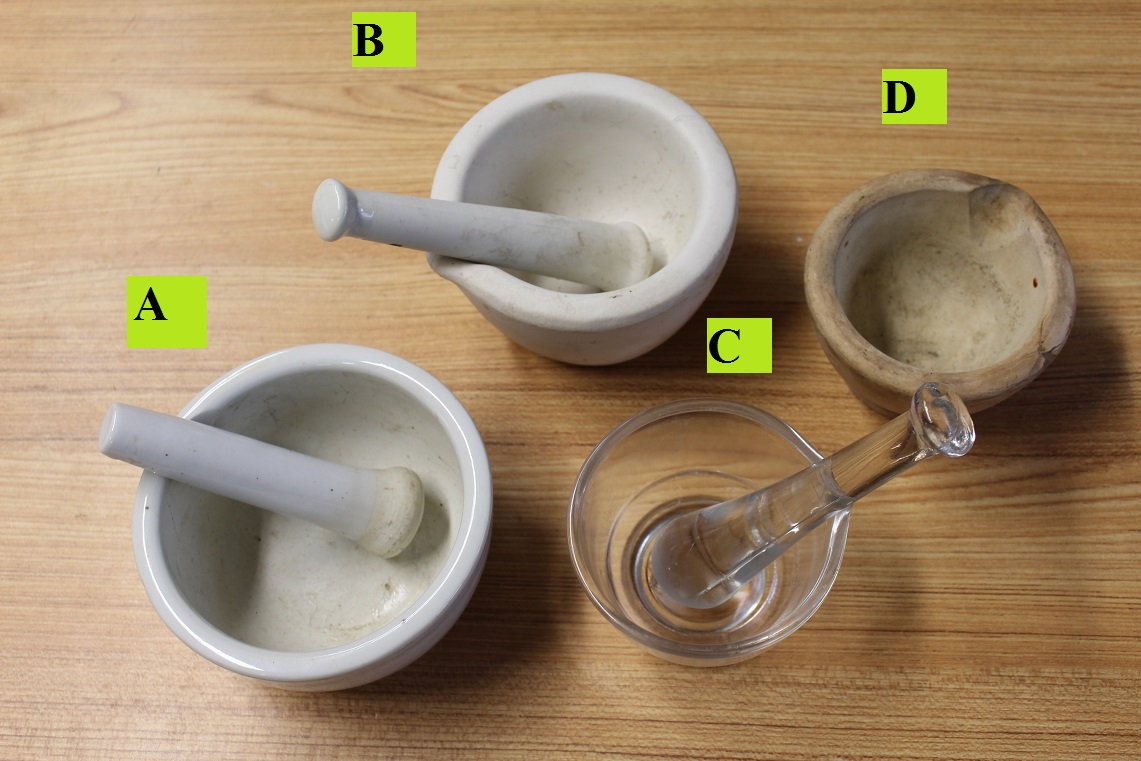
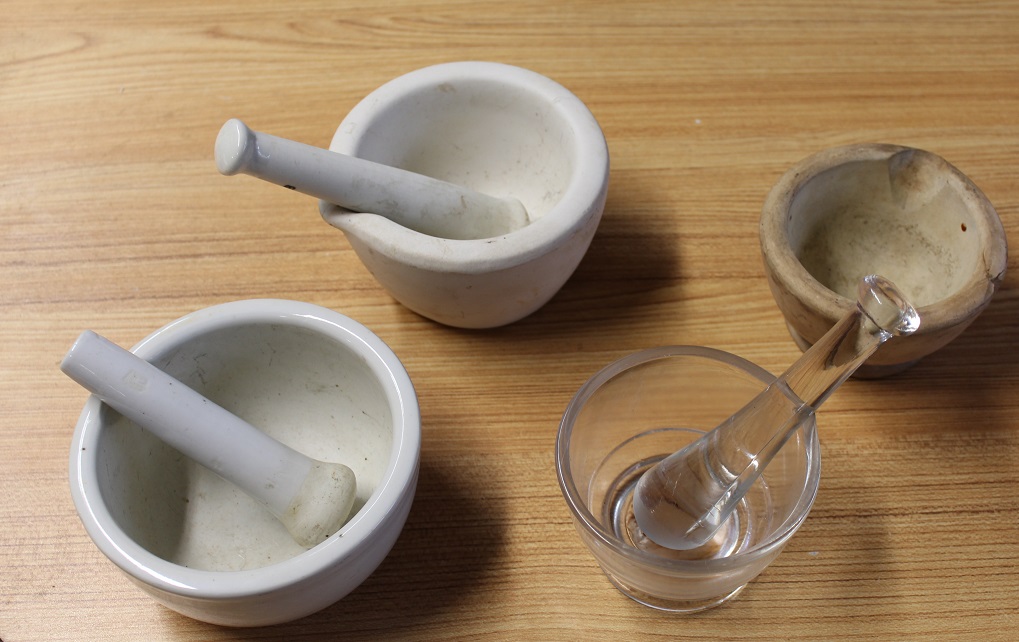
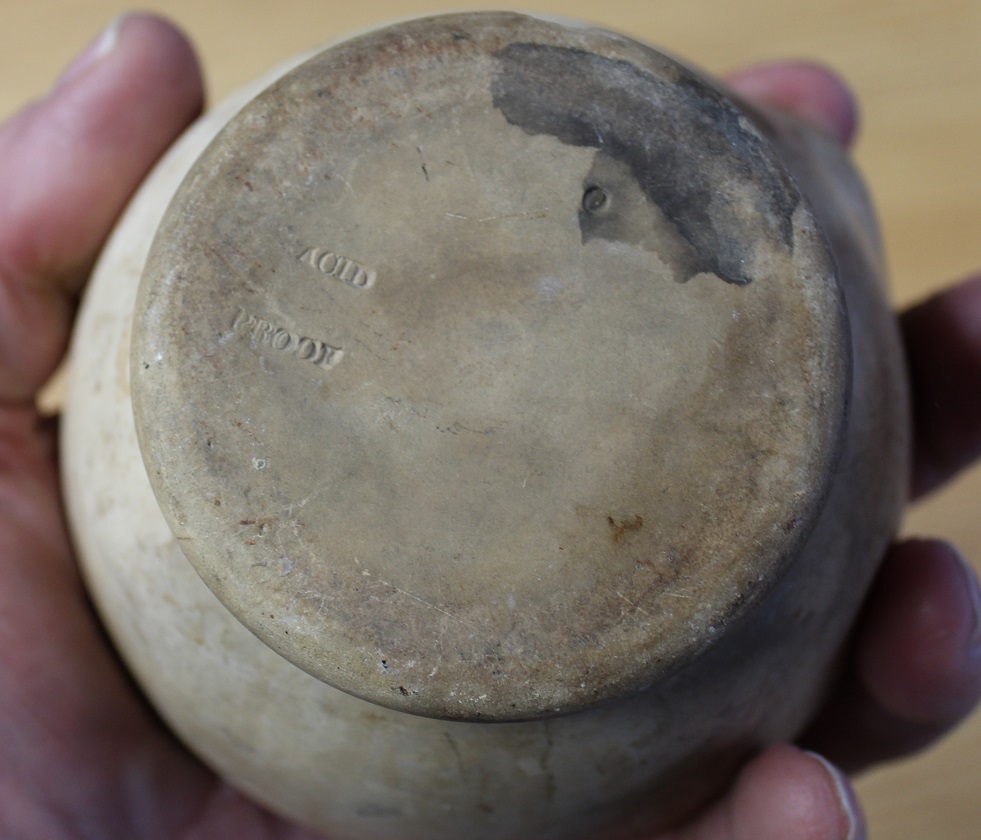
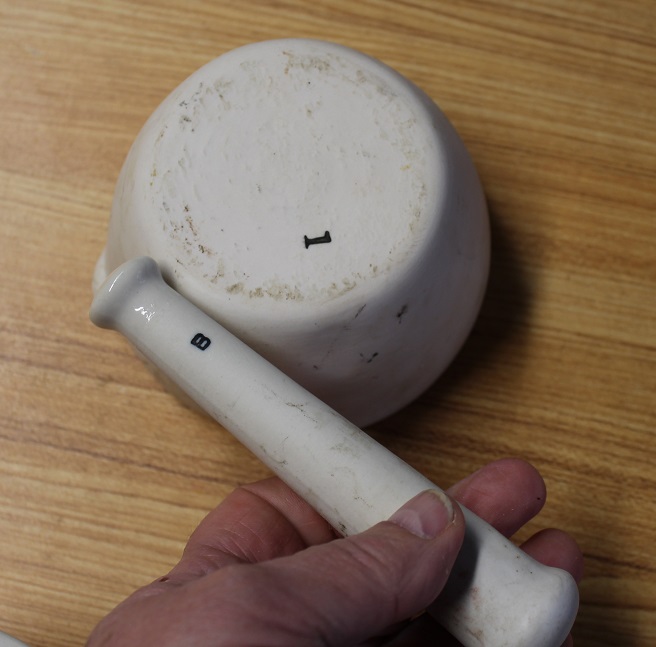
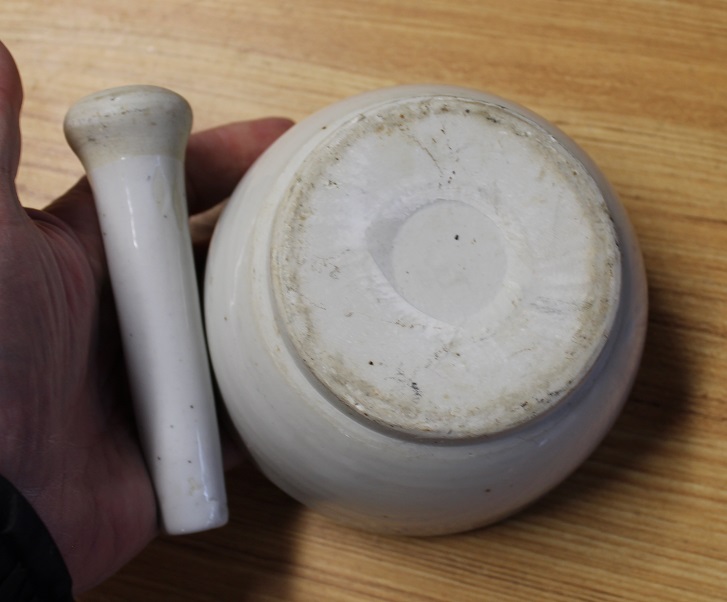
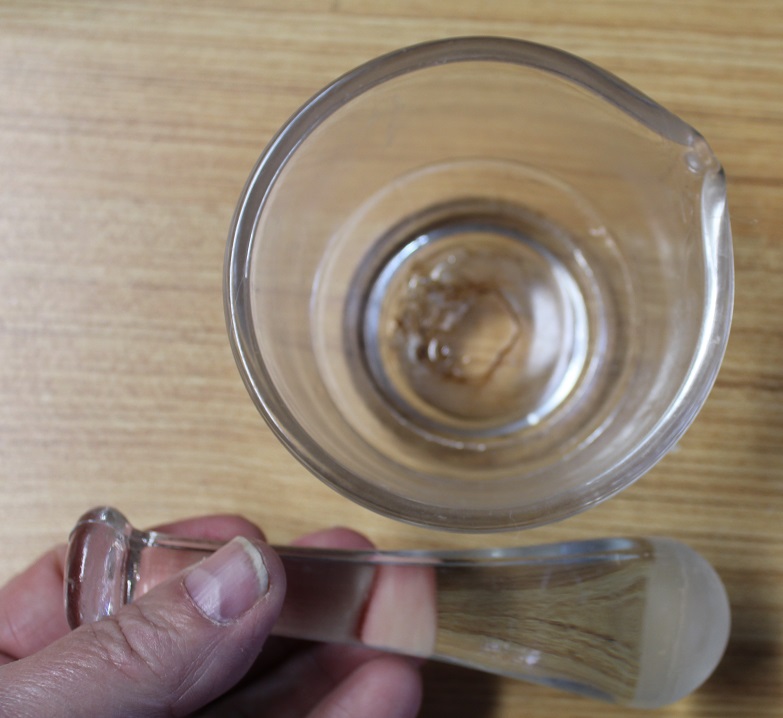
__________________________________________________________________________________________
TC invalid feeders
Here we have 3 of these porcelin invalid feeders. These fine porcelain feeders are all in good condition. They were filled with soup or broth and then could be feed to a person laying down. This would allow to feed a wounded , sick person with out them having to lean up or get up and without spill food over the patient. These were also used to feed young children, infants and elderly folks. These have been seen with military stamping and Red Cross markings on them. Great for a medical display or even a early military / medical display. Invalid feeders were used from the 17th century until the 1930s to feed both invalids and infants when they were unable to feed themselves. A mixture called pap was made using bread, honey, and milk and used to feed the sick. Feeders such as these were also used to administer liquid medicines. The smaller feeders are about 6 inches long and 2 1/4 inches across while the larger one is 4 inches across not counting the handle and 5 2/4 inches long including the spout. $30 each for the smaller ones and $45.00 for the larger one. Take a look at the pics! No breaks, cracks or chips!!
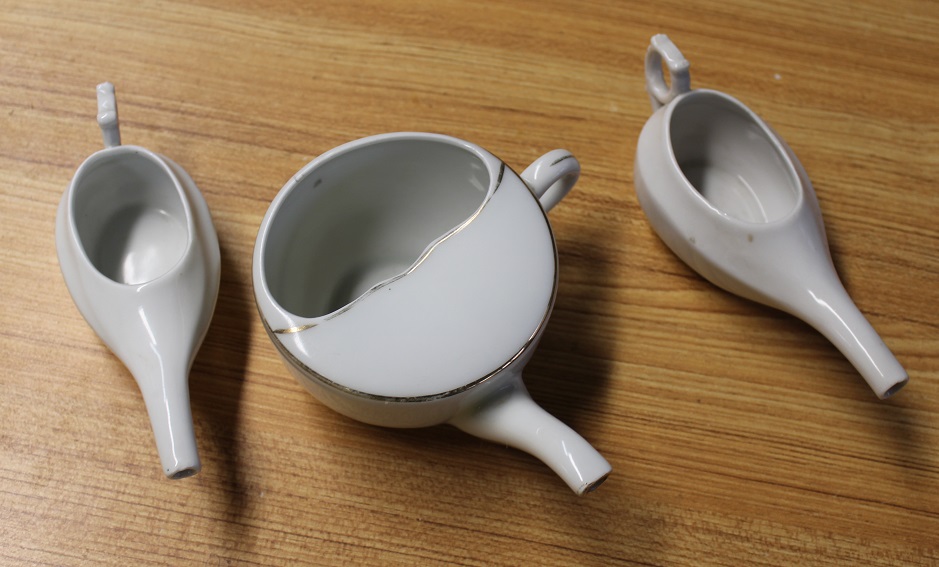



__________________________________________________________________________________________
TC pain
Here is what we call a "pain" bullet. I suppose bullets could be used to bite down on when there was no anesthetic but it's not likely. The myth about “biting the bullet” may have come from the fact that only a low dose of anesthetic was used during the Civil War, just enough to make the patient insensitive to pain. Surgeons worked quickly and could complete a major operation in a matter of minutes. Many men moaned and moved about due to the agitating effects of a light dose of anesthetic and some had to be held down by assistants, but they were unconscious and could not feel pain. Outside observers may have assumed that the men were being operated upon with no anesthetic, not understanding that the groans and thrashing movements were caused by the chloroform or ether. Never the less we have a bullet here that looks to have been chewed on. Many were chewed on by animals but this has spots that definitely look like a molar chomped down on it. You decide for yourself. Comes in a glass medical vial with screw on lid. $35.00
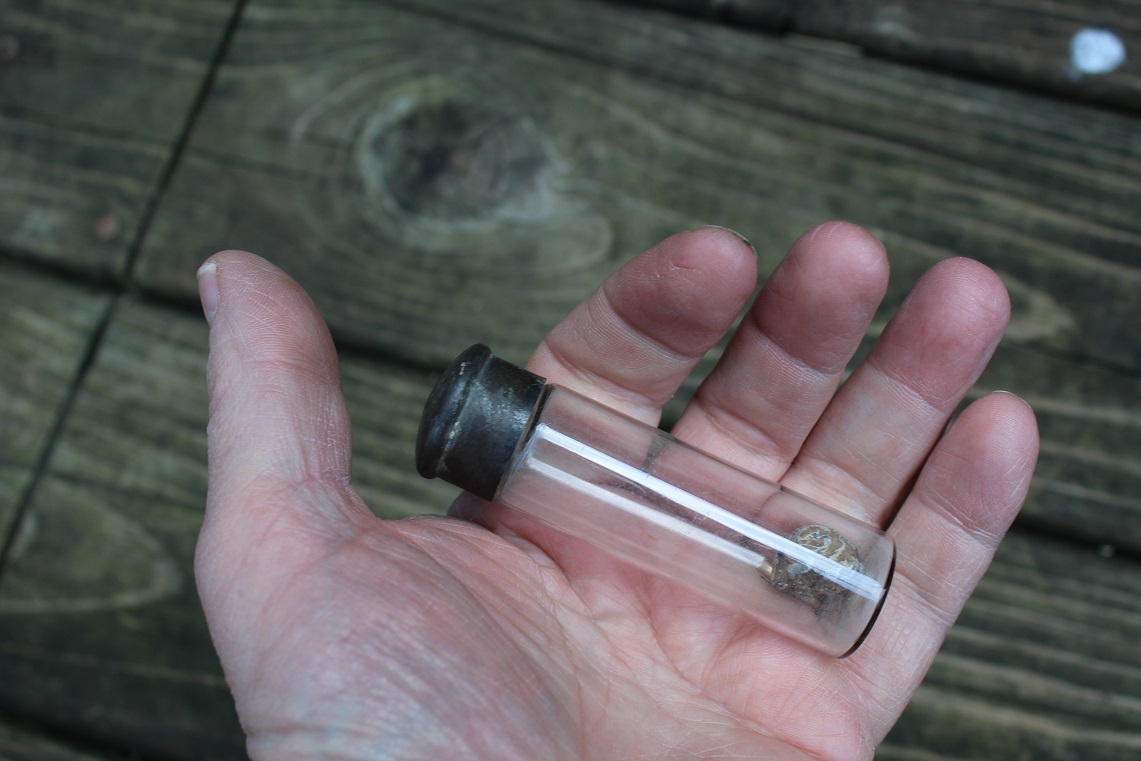
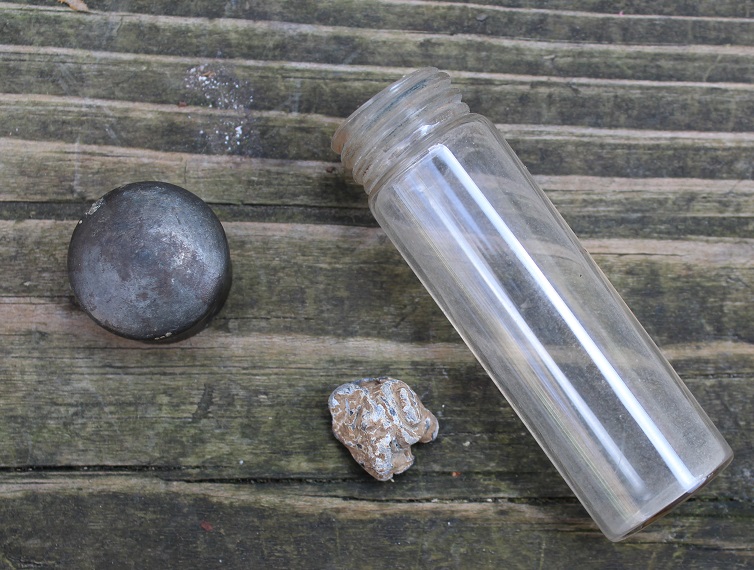
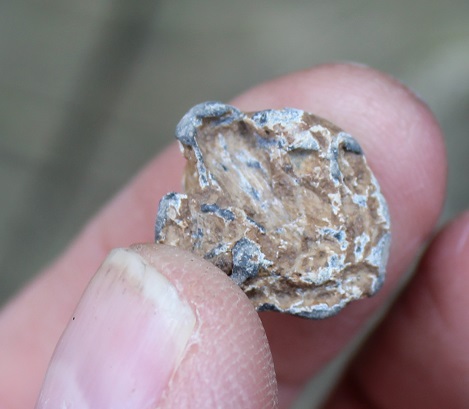
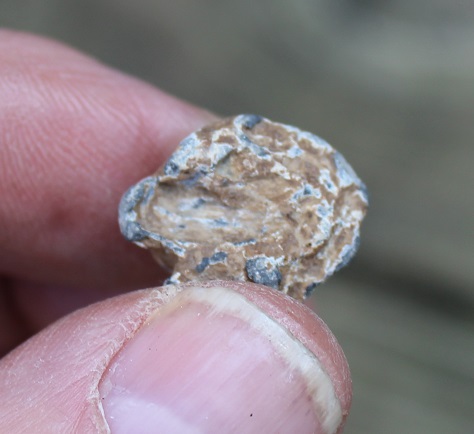
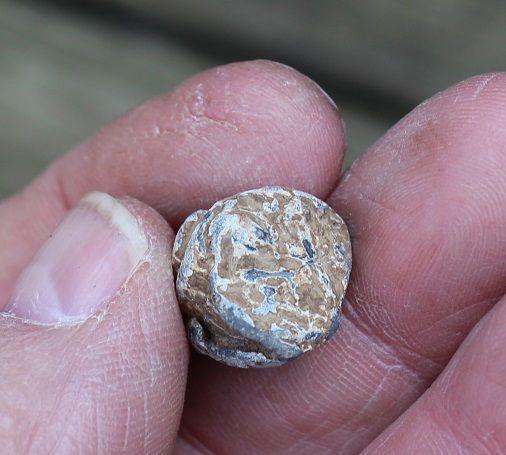
__________________________________________________________________________________________
tc
Here we have an Antique Cast Iron Apothecary Pharmacy Cork Press. Doctors and pharmacists used these presses to resize corks so that they would fit in the bottles and vials that they needed them to fit in. This one is in excellent condition! $85.00
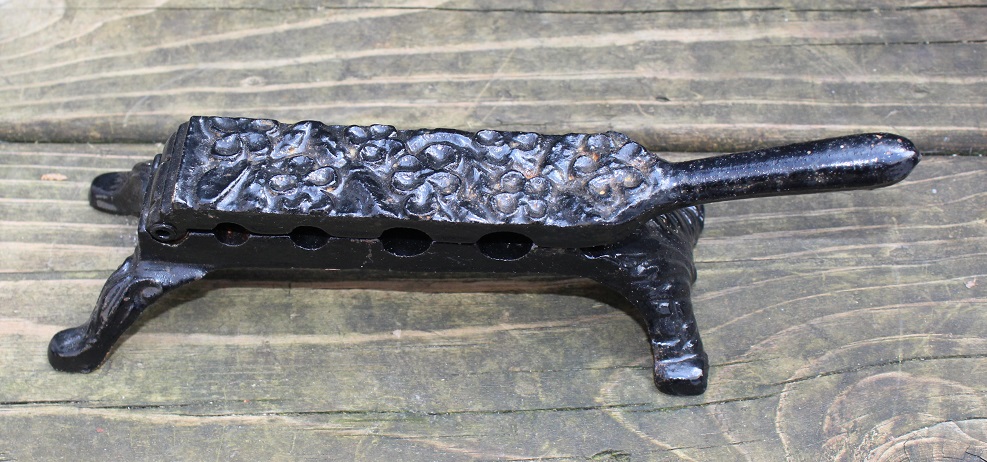
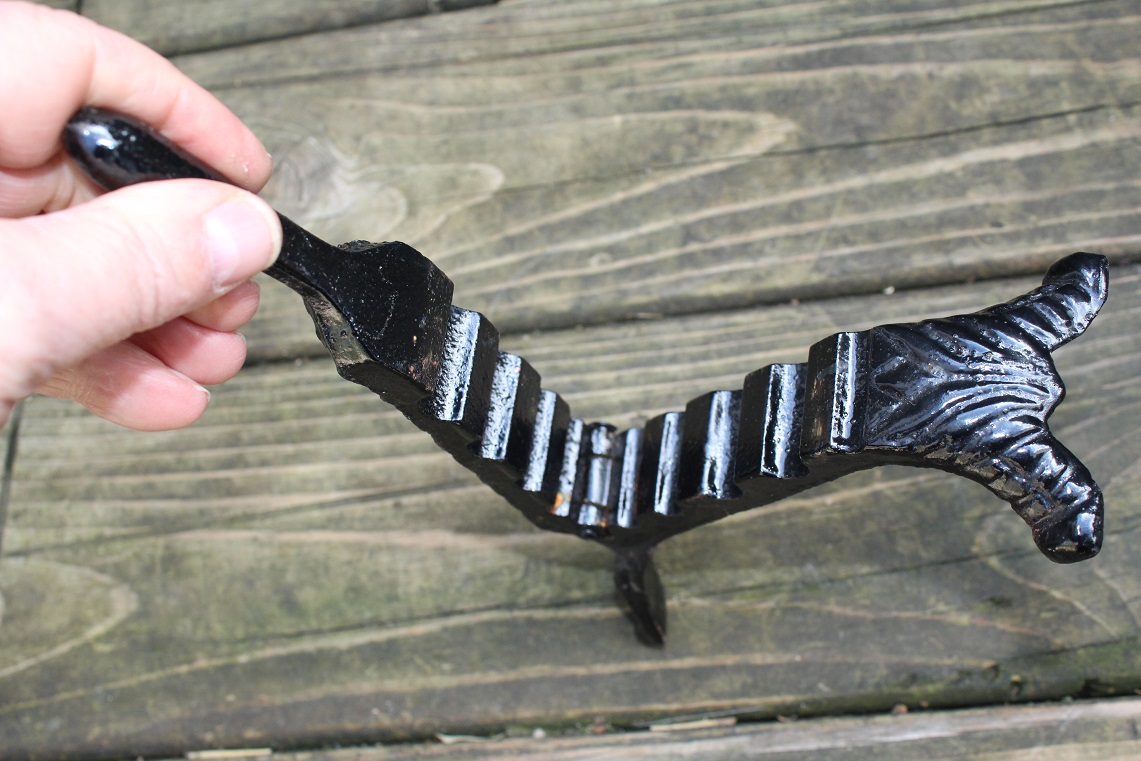
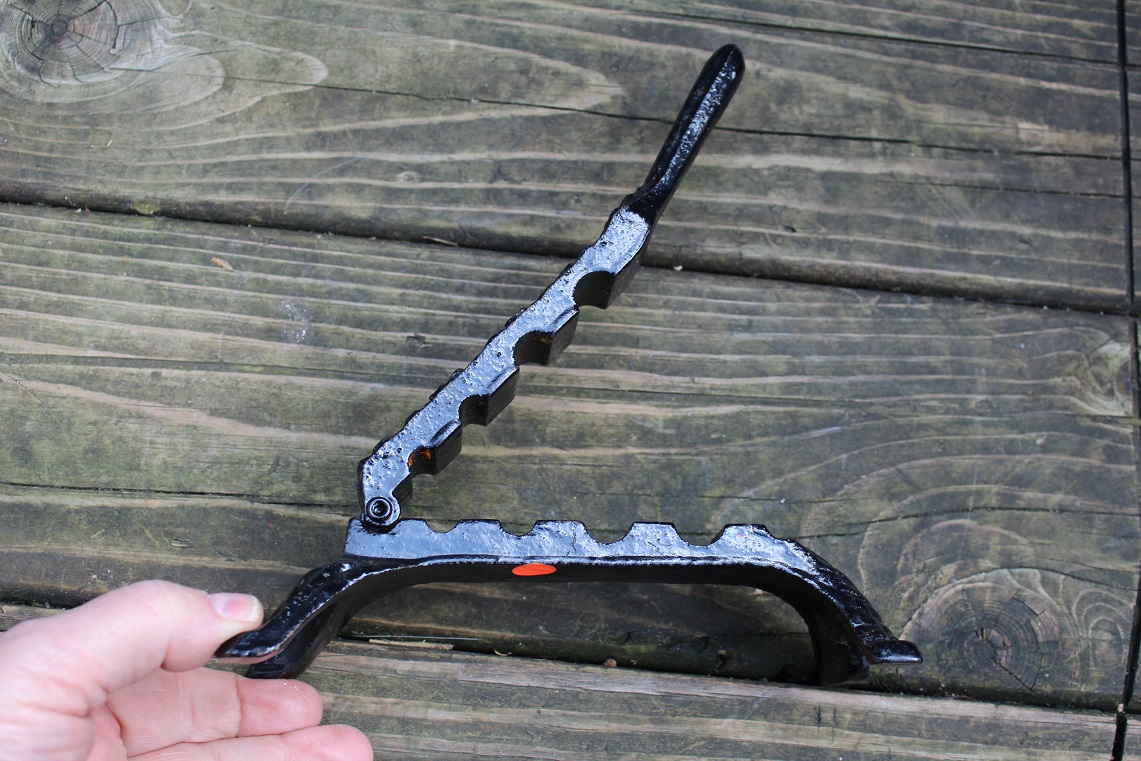
__________________________________________________________________________________________
TC 1
Here is a Late 19th century Doctor's medical powders/pill kit with glass vials. This kit dates from 1886 to after the first of the 20th century. There are 3 larger glass containers and 6 smaller round vials that contain some powders and pills. The vials have mostly pewter tops but a few have steel screw on tops. Check out the pics! The leather case for these vials is not too bad but definitely not perfect. Has a shield embossed in the leather. $95.00
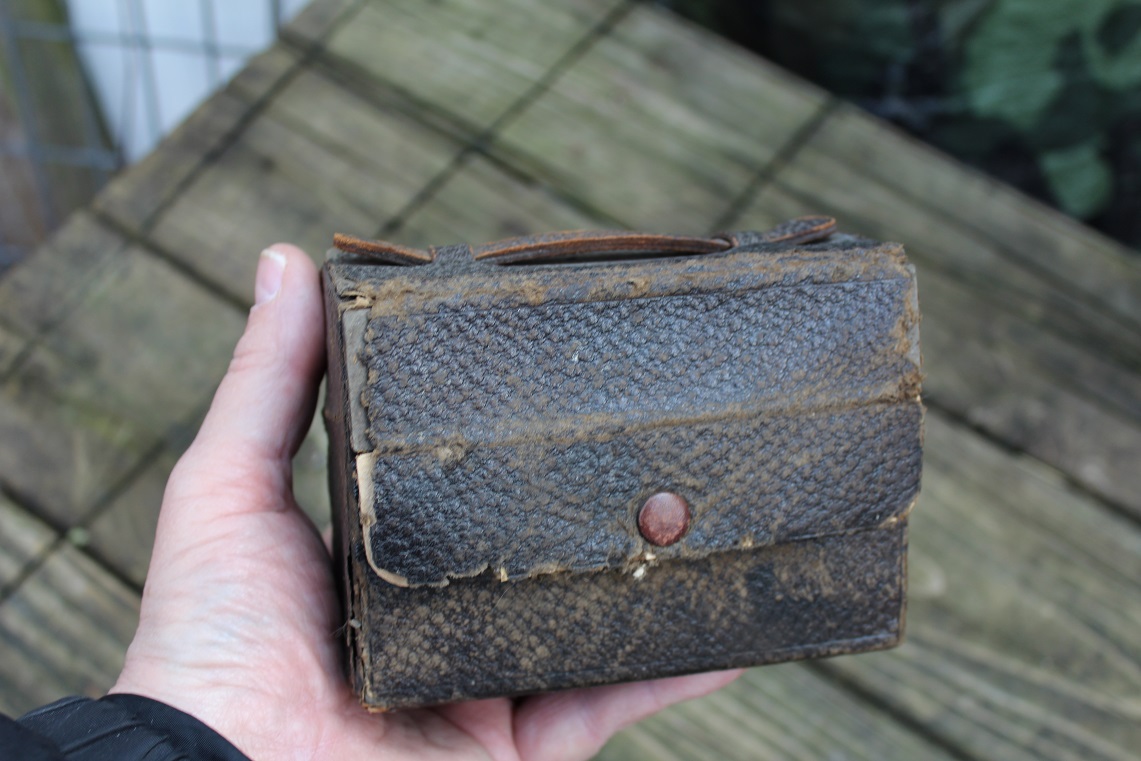
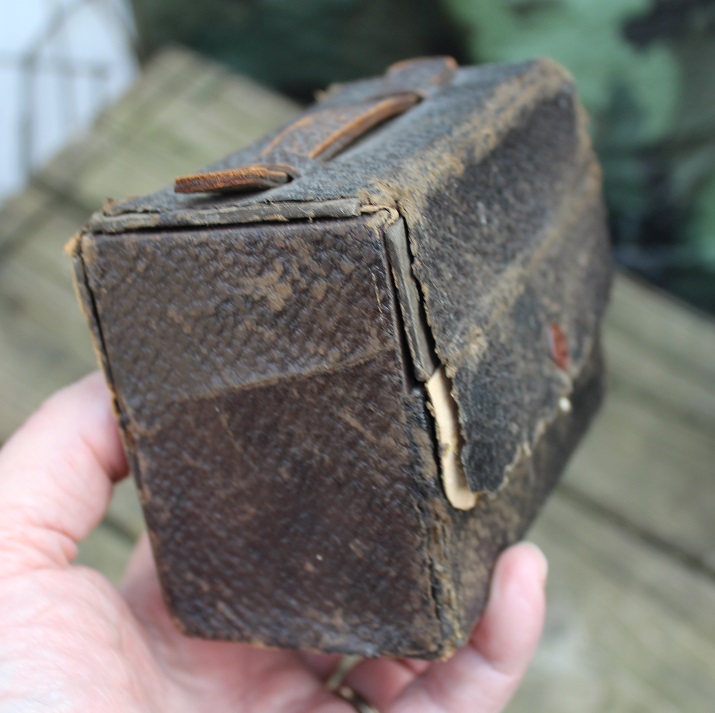
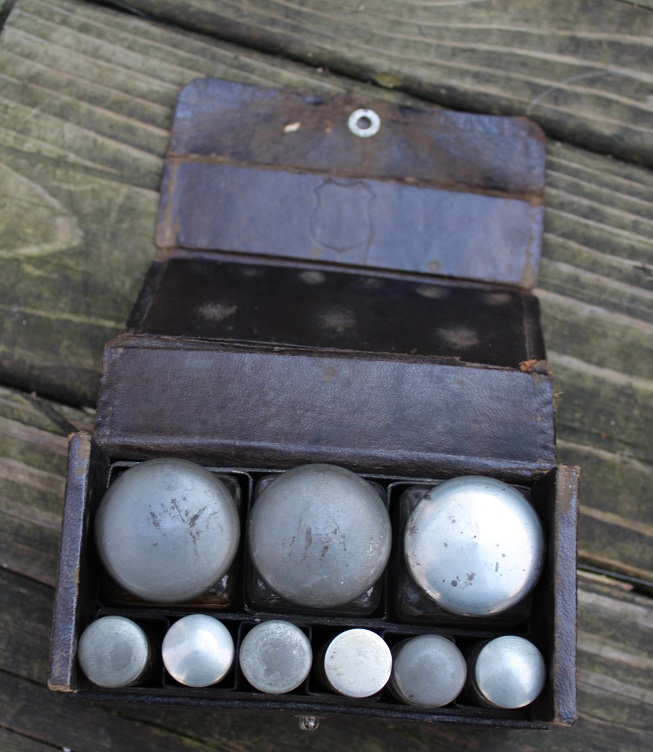
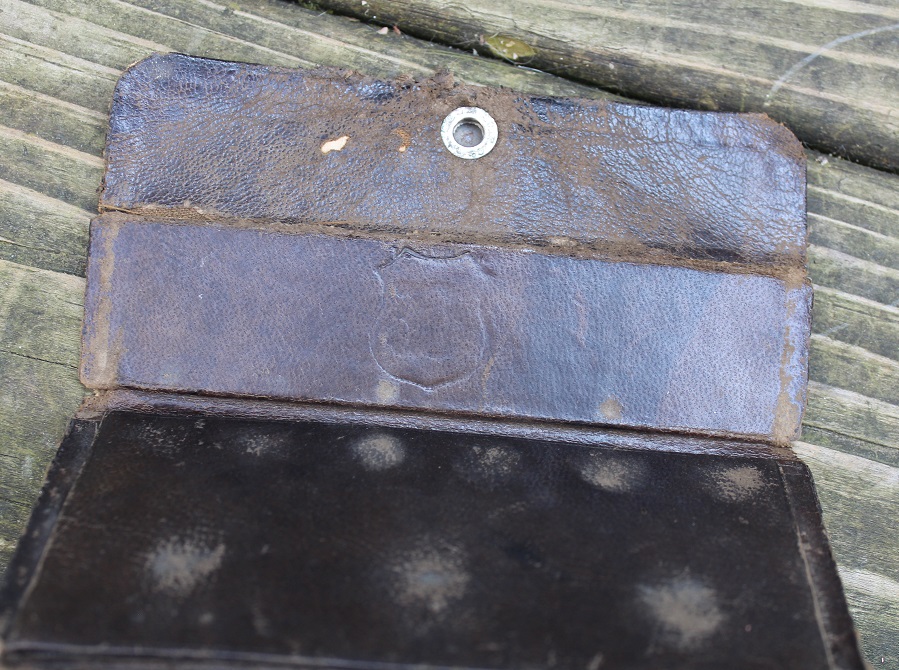
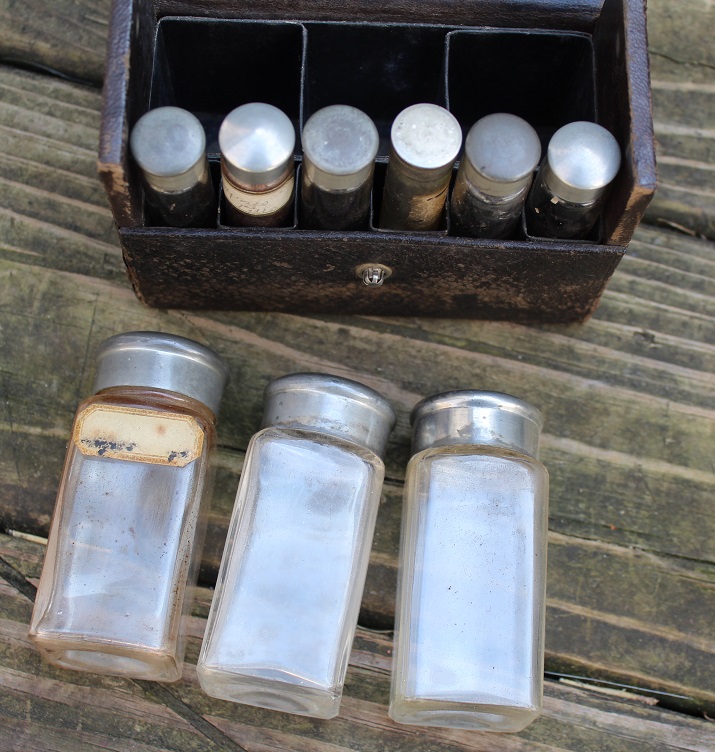
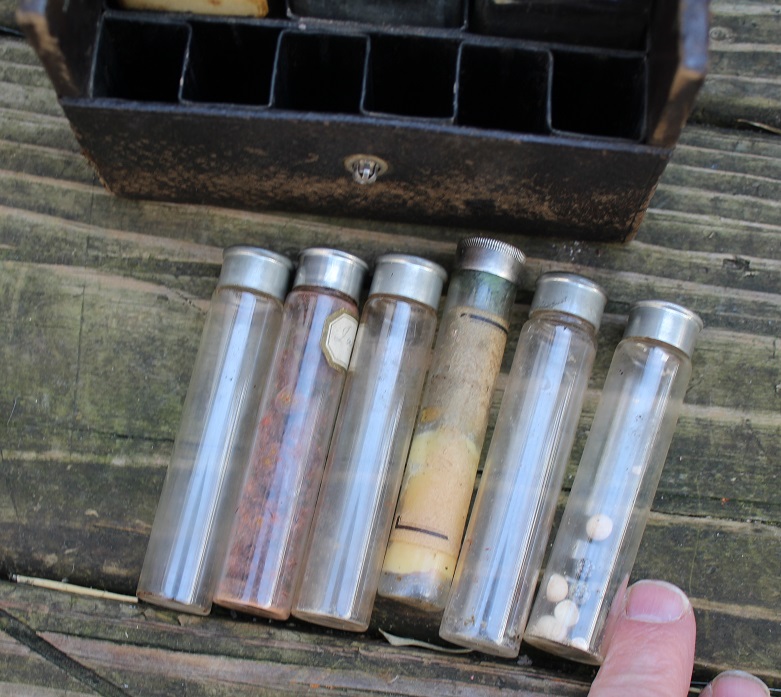
__________________________________________________________________________________________
TC 2
Here is another Late 19th century Doctor's medical powders/pill kit with glass vials. This kit dates from 1886 to after the first of the 20th century. There are 10 larger glass containers and all have labels on them. The vials have steel screw on tops but not pewter. Check out the pics! The leather case for these vials is worn but definitely still serviceable. The vials are 3 1/8ths inches tall no counting the caps. $95.00
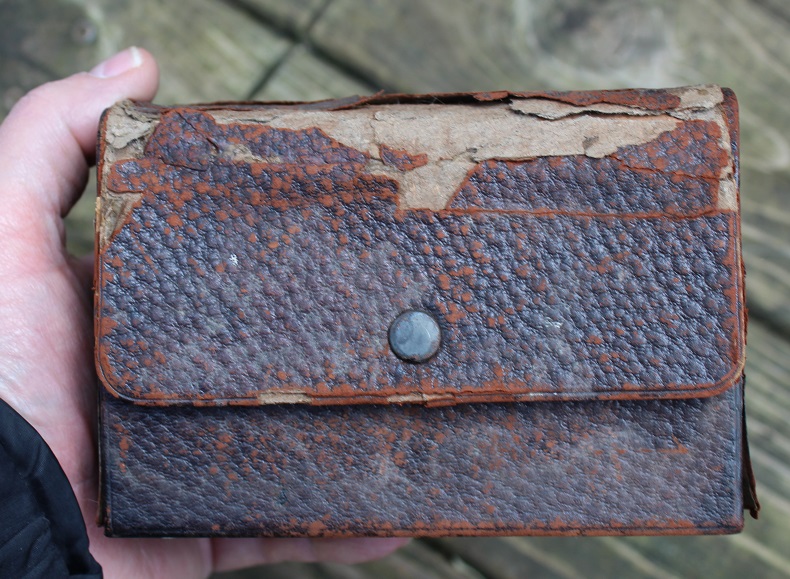
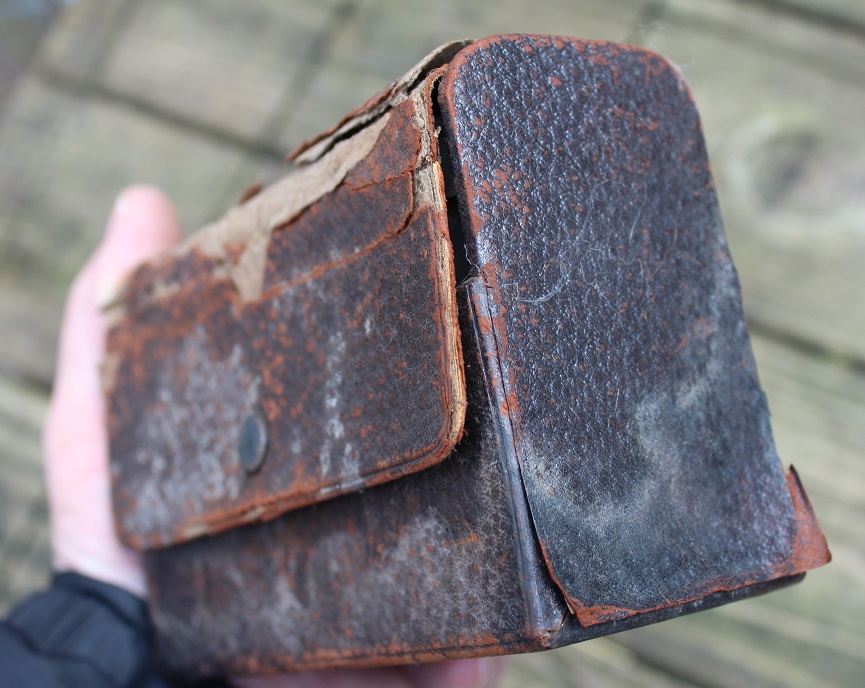
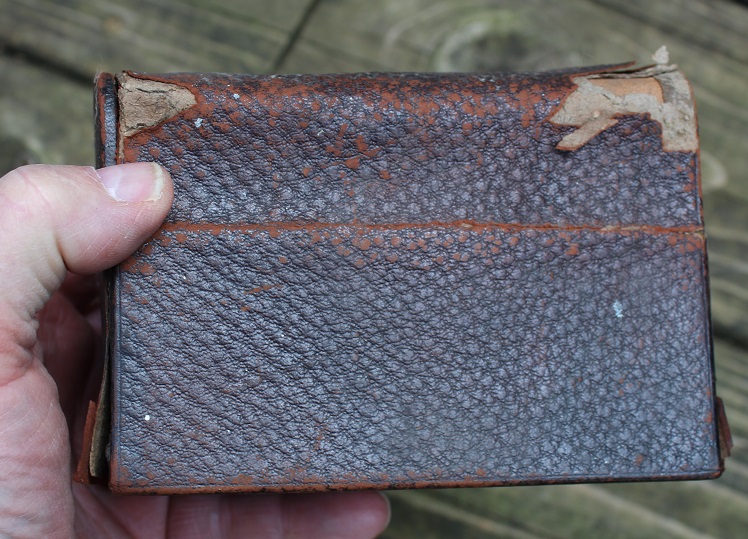
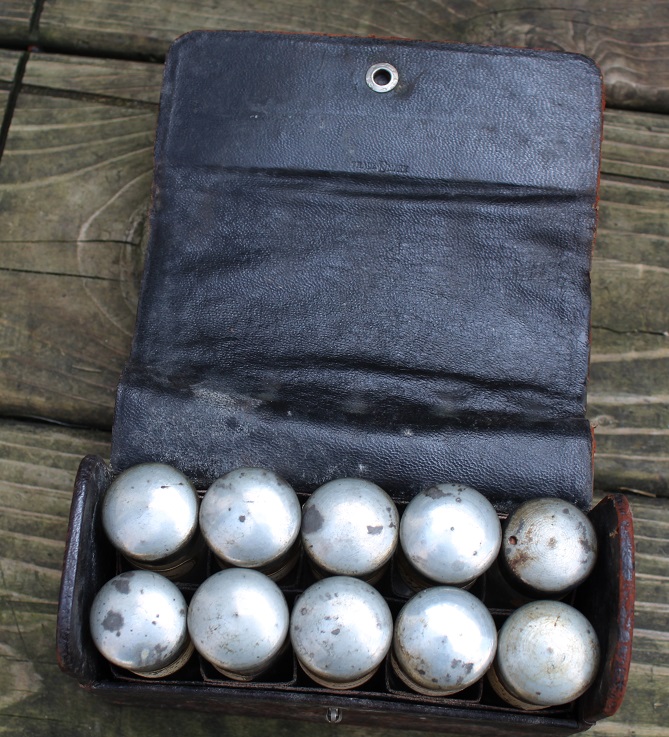
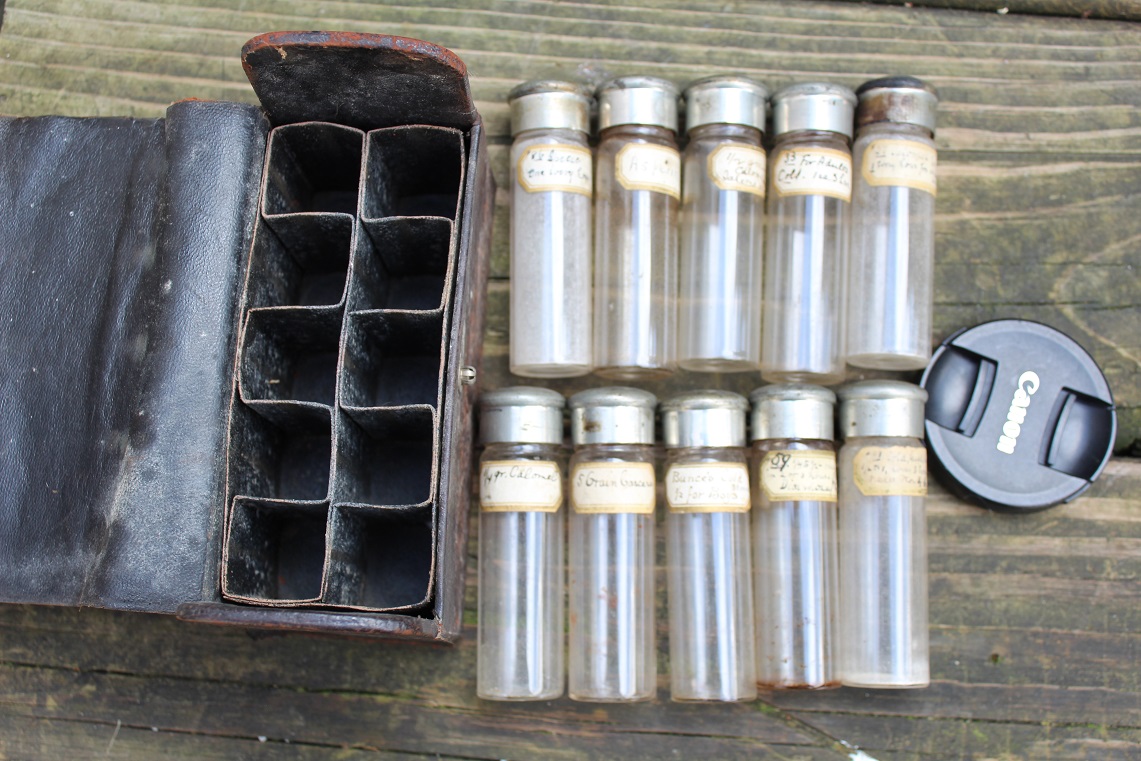
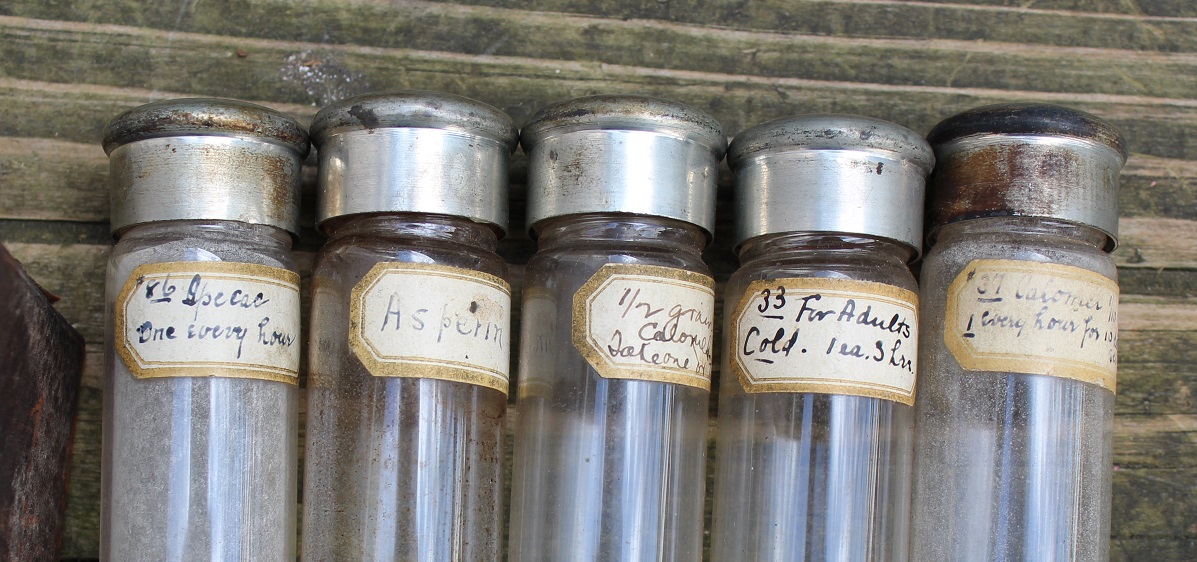
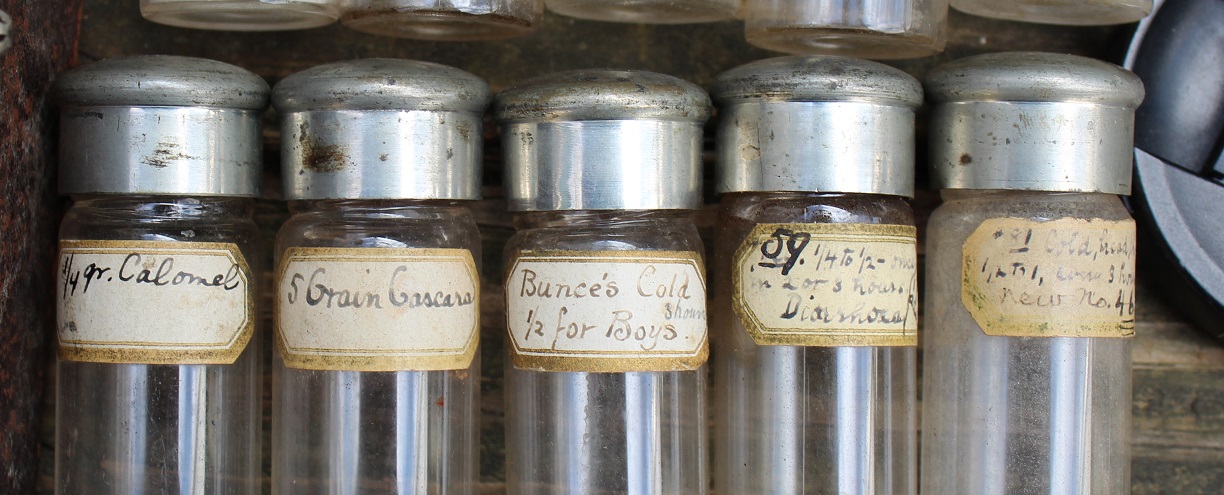
_________________________________________________________________________________________
TC 3
Here is yet another small Late 19th early 20th Century Doctor's medical powders/pill kit with glass inserts. The taller ones are about 3 1/8th inches tall not counting the caps. The caps are metal screw caps. The tall round vials are marked with contents while the small glass vial also has the name of the pharmacist on it out of Main. The leatherette case is not that good for this one but most of it is still there. A nice Medical Display item! $45.00
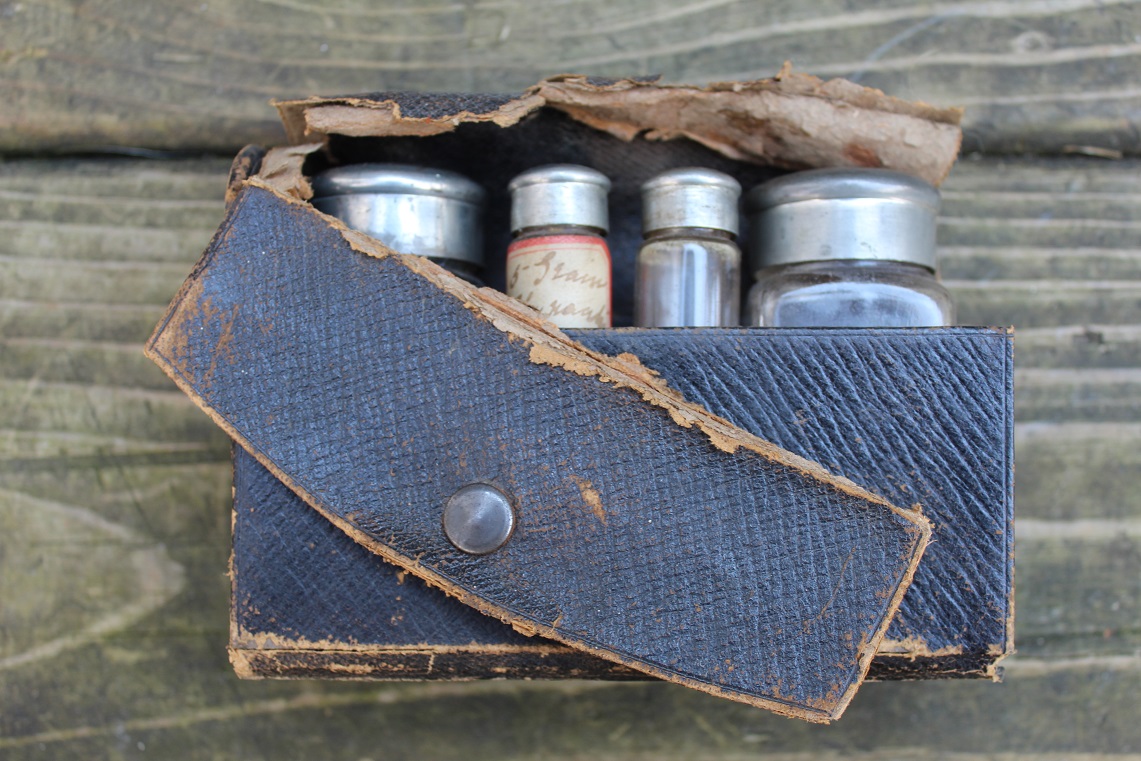
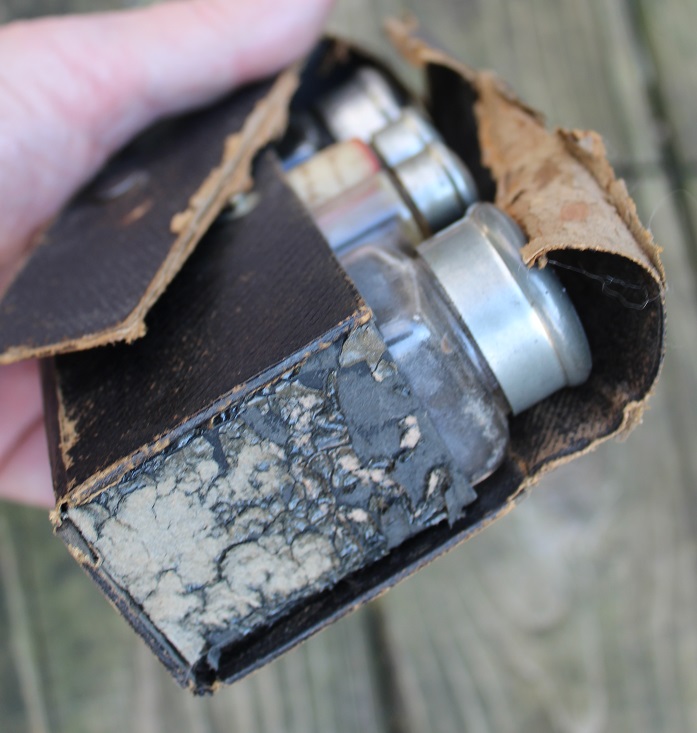
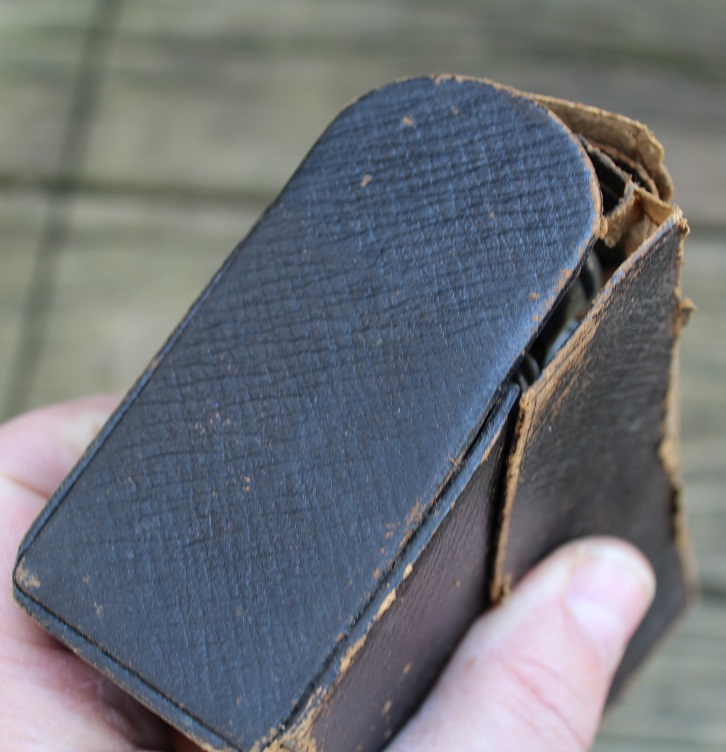
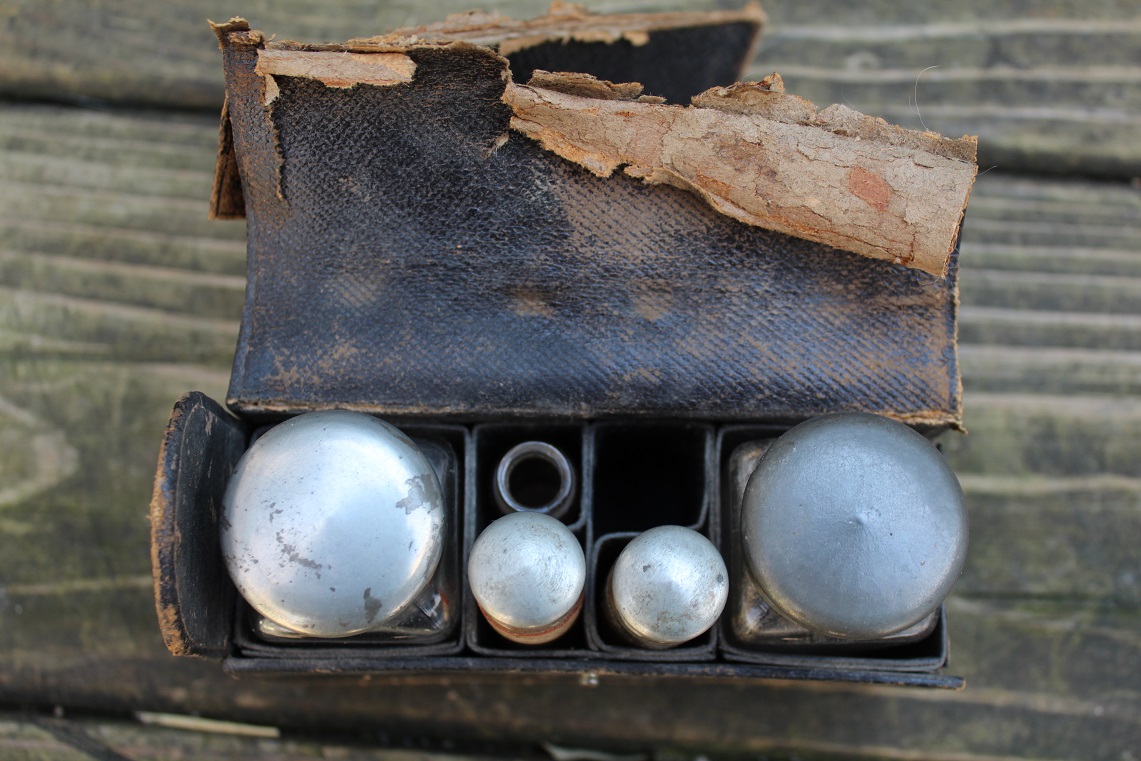
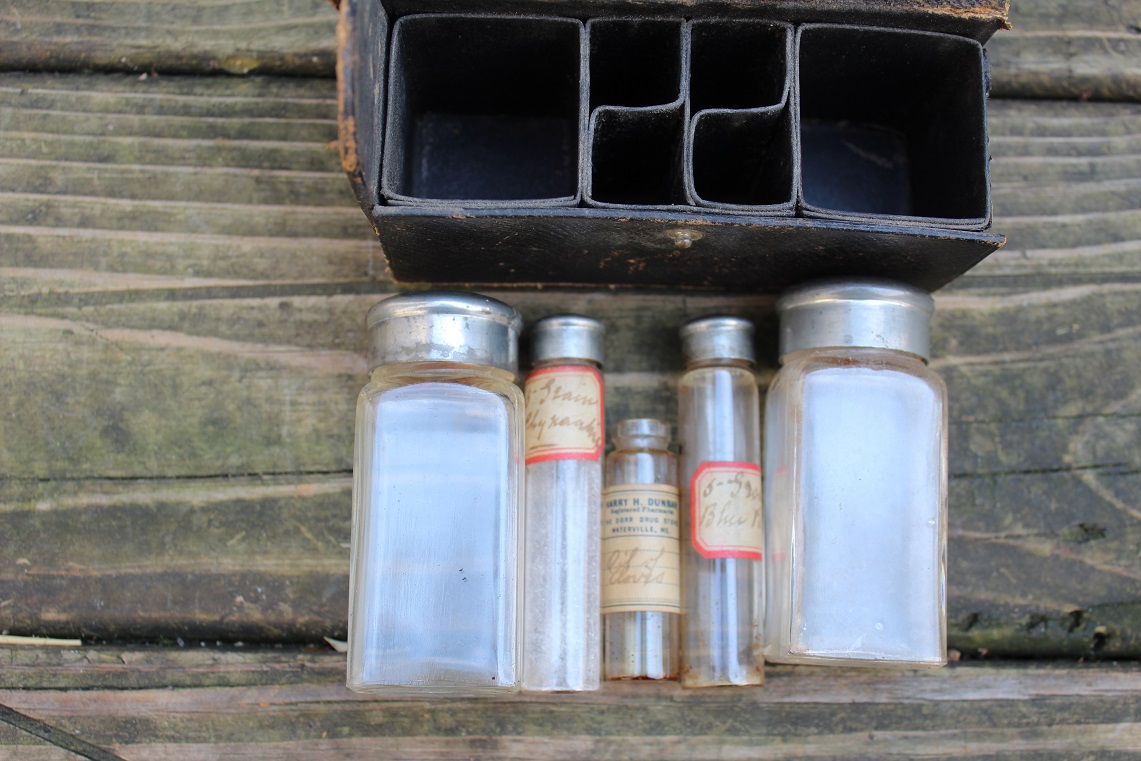
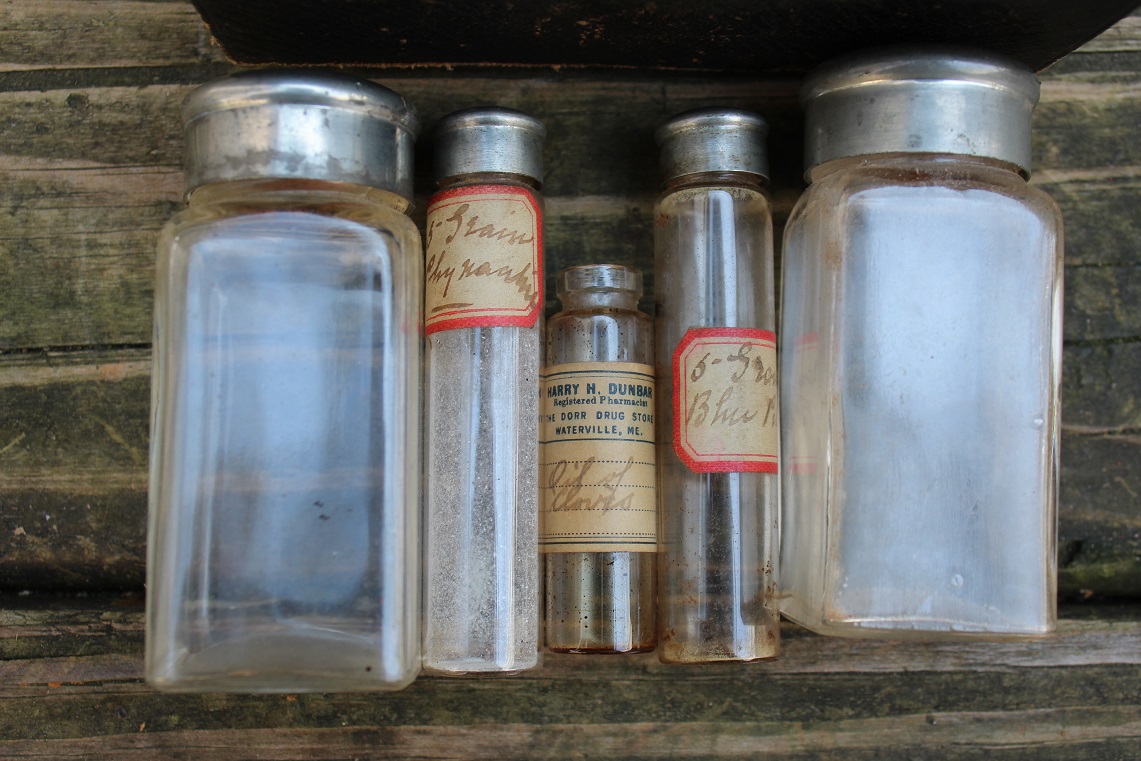
_________________________________________________________________________________________
TC
Here we have a United States Navy Pocket surgical set made by G. Tiemann & Co from New York circa 1890's. Tiemann was one of the major suppliers of surgical sets and instruments during the Civil War. Tiemann was in business from 1826 to 1900. Tieman was at their New York address from 1886-1900 which was at 107 Park Row. This set was made for the MED. DEPT. U.S.N. and is in a leather case but the case is not in the best condition for the most part. It looks like that all the instruments are intact however and in pretty good condition for their age. The handles of the tools are plated. Still complete and still makes a nice display item. These instruments were on display by a Civil War Physician reenactor. For the set. $95.00
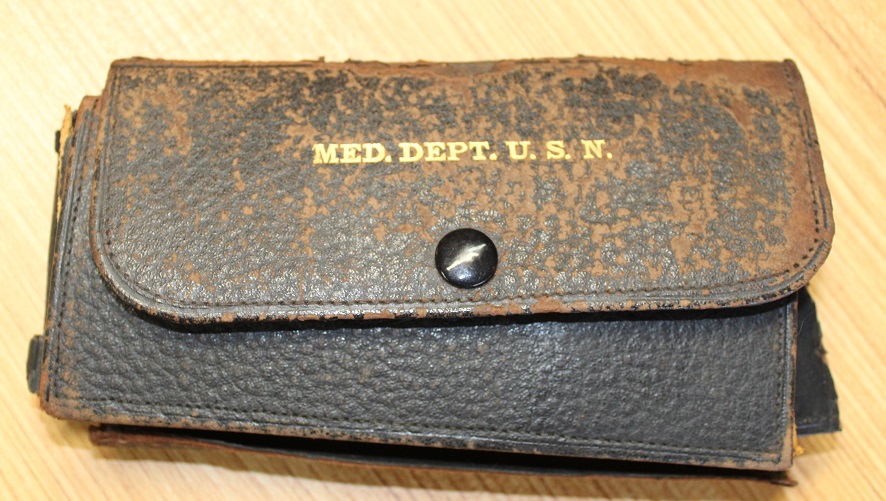
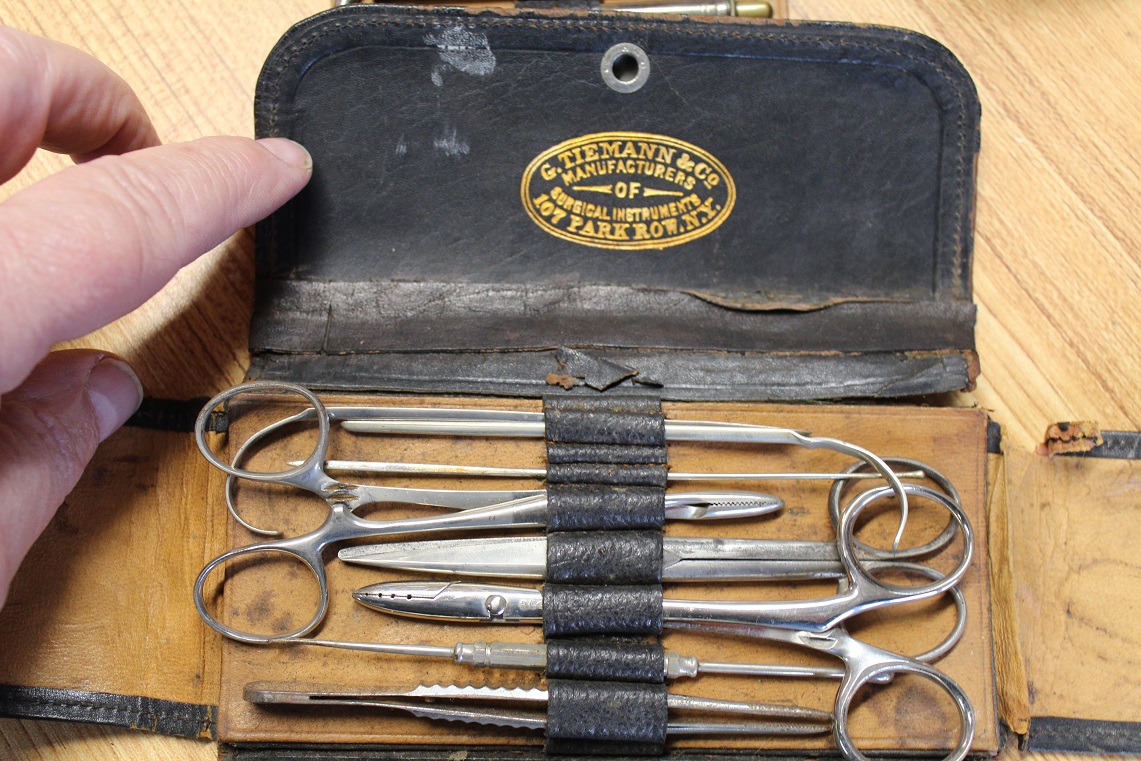

__________________________________________________________________________________________
TC
syringes
Here we have a set of 3 wound irrigators frequently used during the Civil War. These hard rubber irrigation syringes were used to cleanse penetrating wounds and aspirate wounds. Irrigation syringes were also made of blown glass and metal; blown glass syringes were not practical for battlefield use as they could break. These are 3 different sizes 7 1/2 , 6 and 4 inches long overall all. The 6 inch one is marked THE IR COMP COMPANY GOODYEAR 1851. For the set $125.00
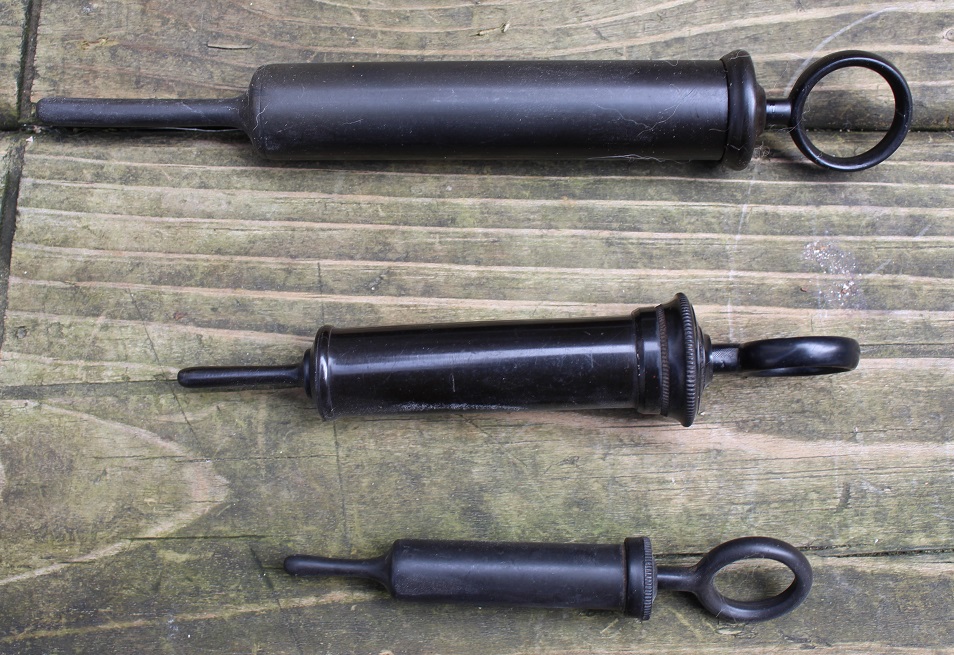
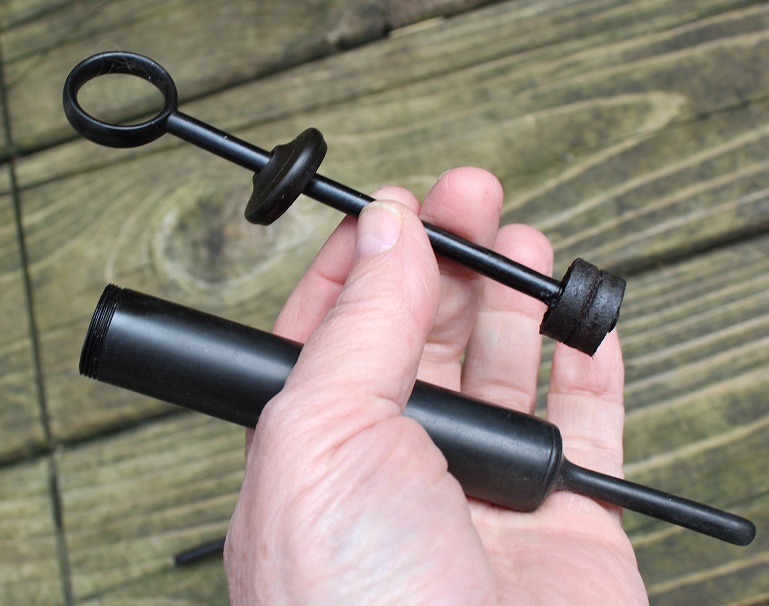
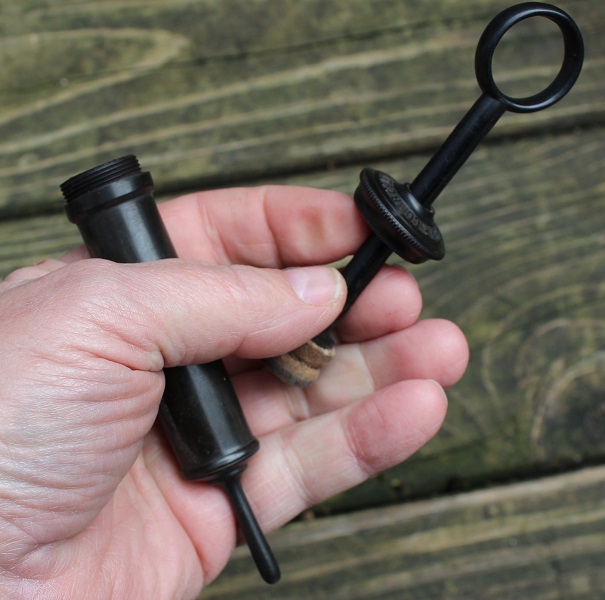
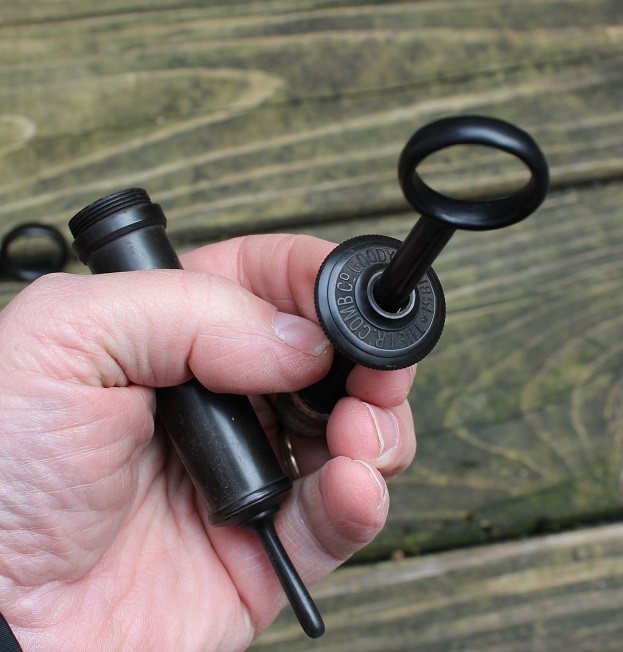
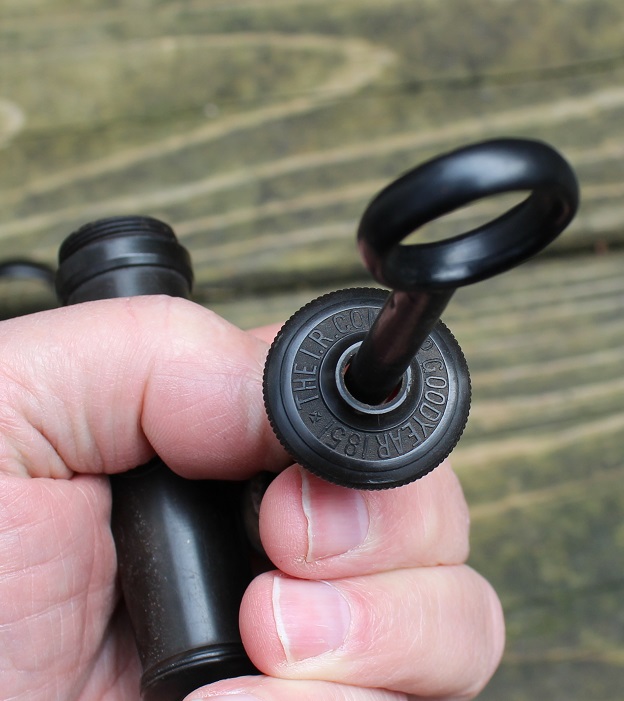
__________________________________________________________________________________________
TC
metal syringes
Here we have 2 pewter wound irrigation syringes. These are 4 ounce pewter syringes with metal plungers and measure 8 1/2 inches long overall. The one has been used quite a bit while the other looks new and unused in the original box! Take a look at the pics. For the used one with no box $125.00 and for the unused one in the box $150.00
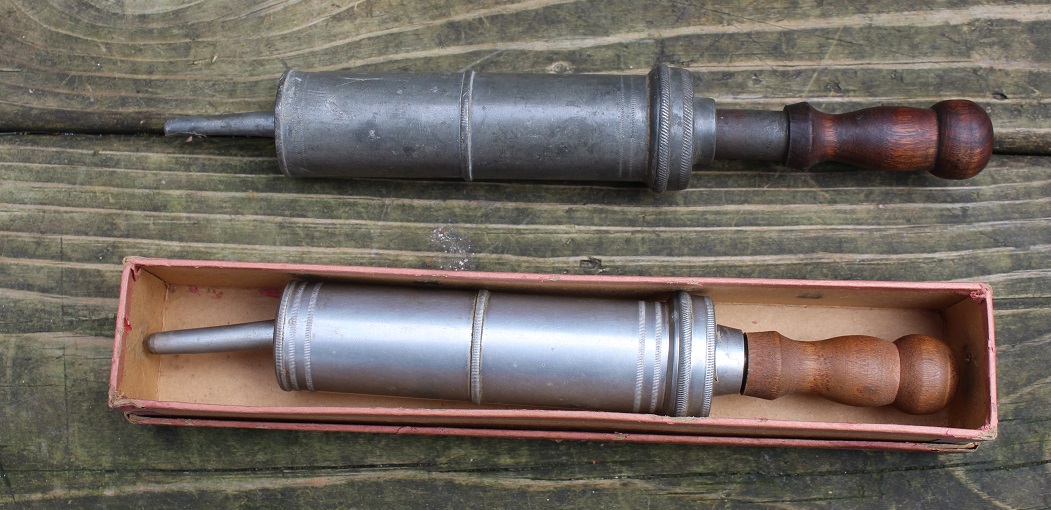

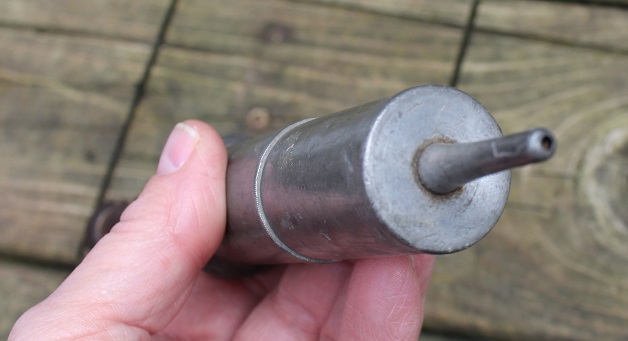
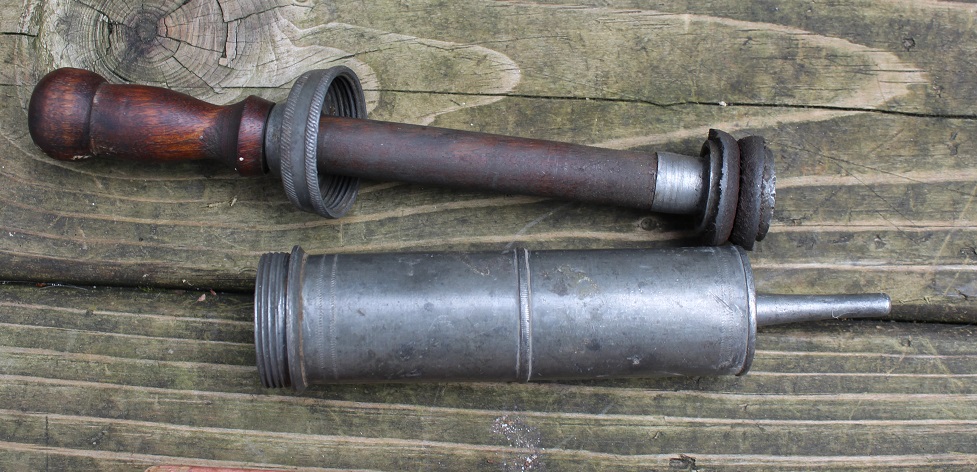
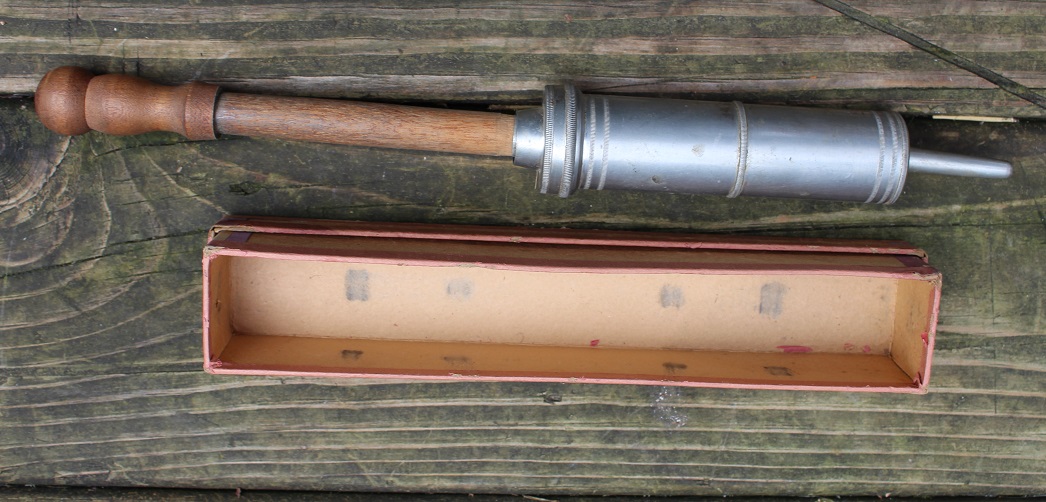
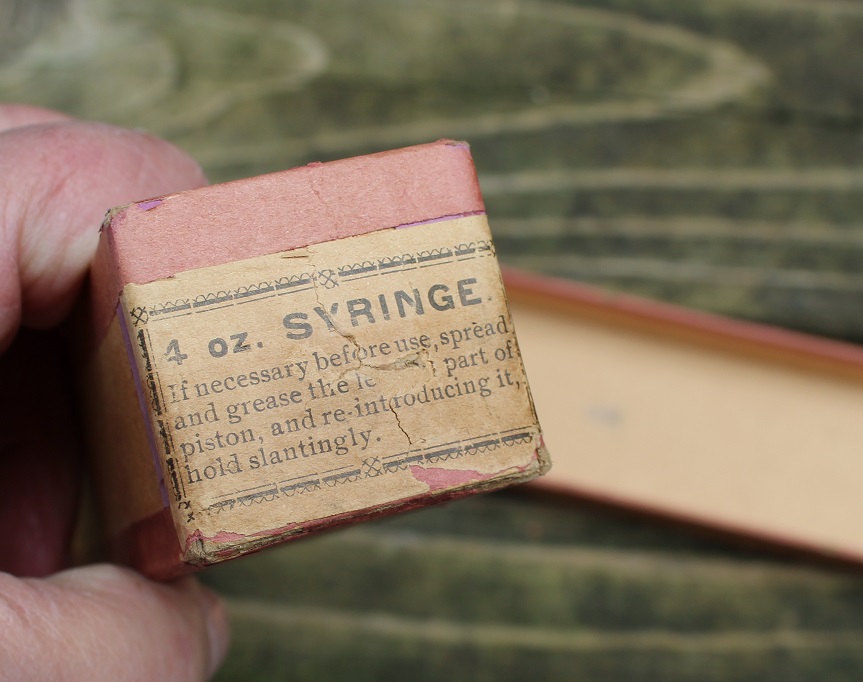
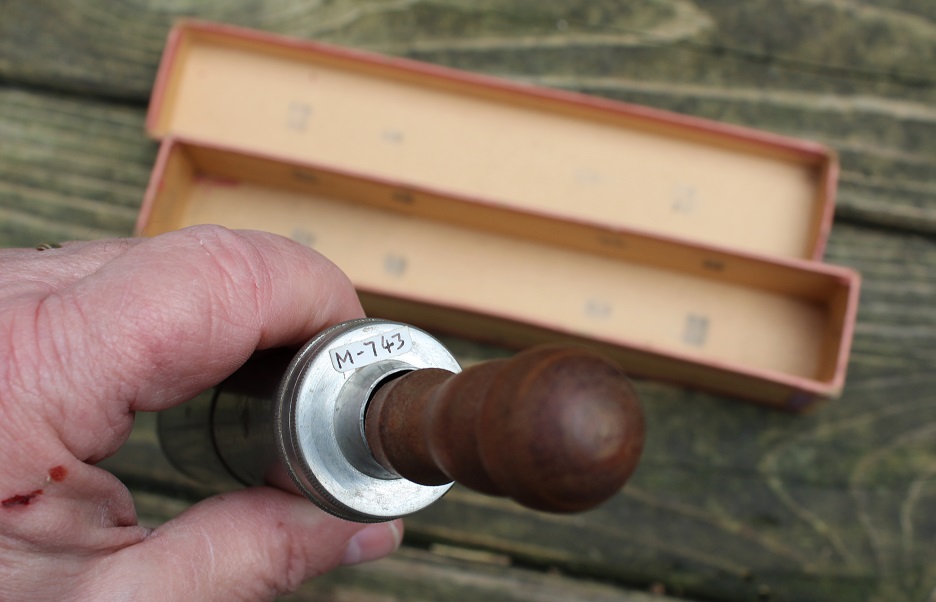
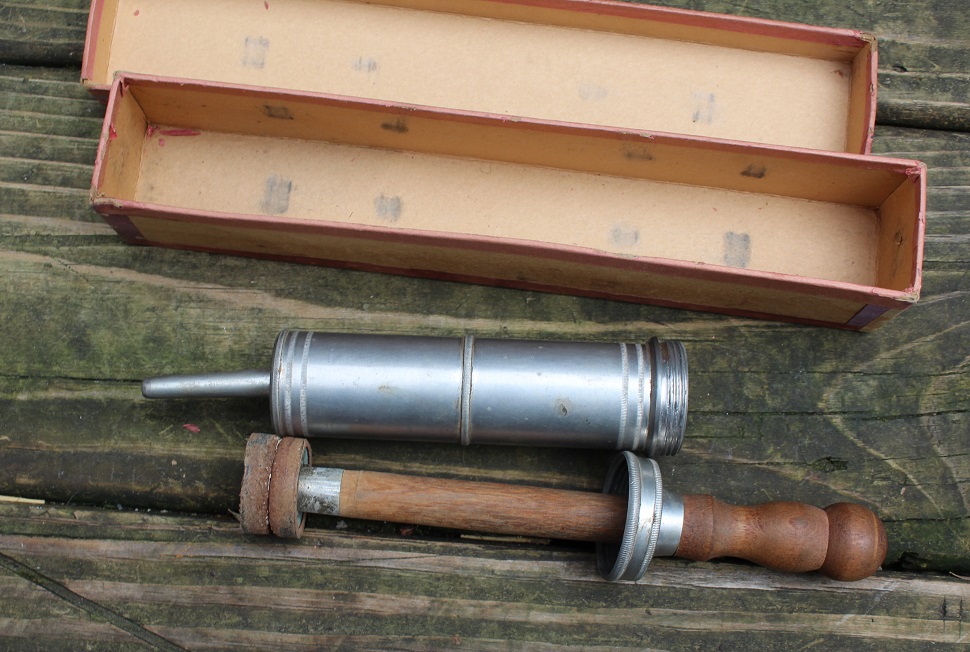
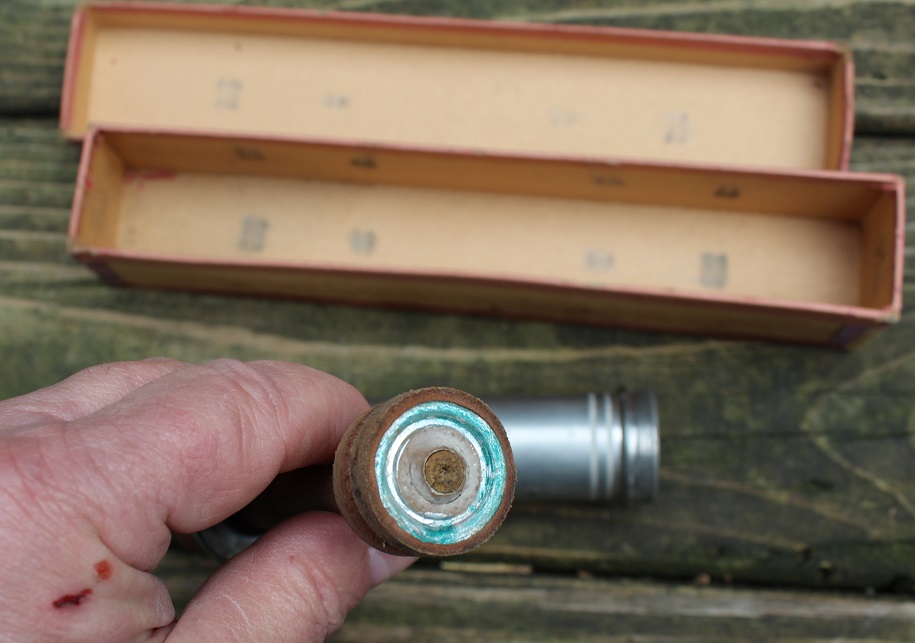
__________________________________________________________________________________________
TC
Erasers sometimes referred to as scapels
Here we have 5 ink erasers that are sometimes refered to as Medical scapels/fleams. I suppose that they could be used for that but that's not their intended purpose. All are Civil War era and later. One has USN on it so that's neat! The one with the chipped up blade is $20 while the USN marked one is $45.00 and the other 3 are $35 each. 2 with bone handles, two with wood handles and the USN one has hard rubber handles. Take a look at the pics!
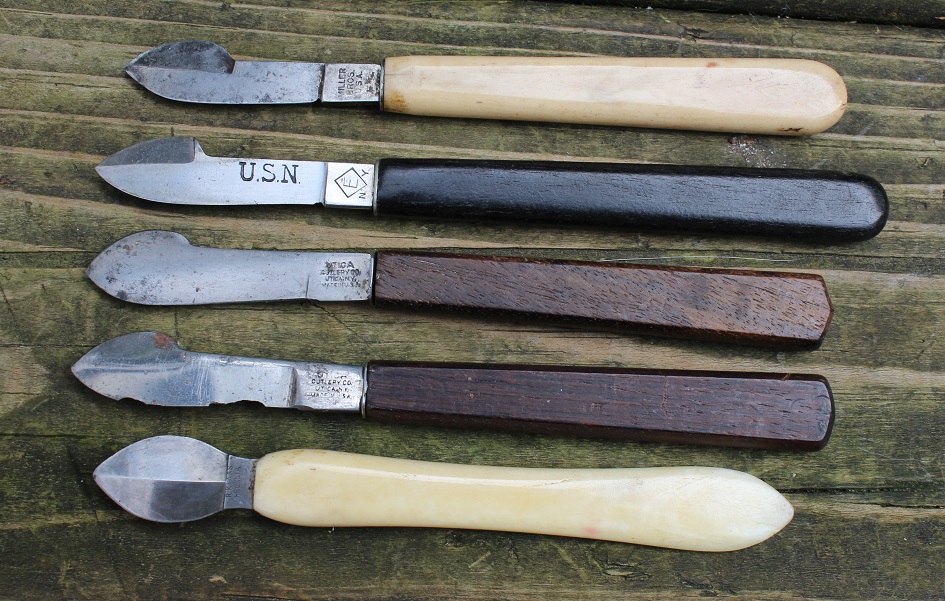
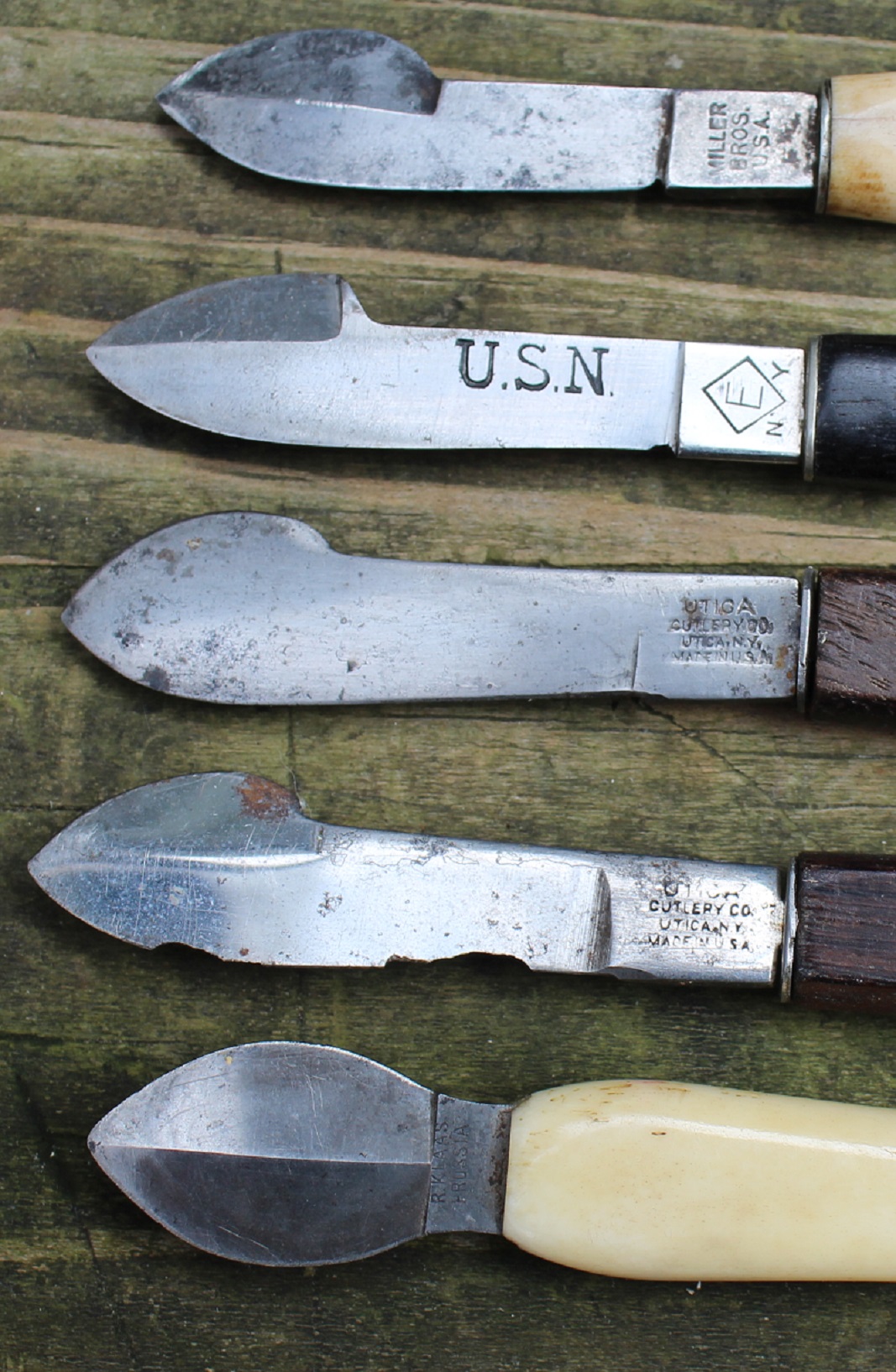
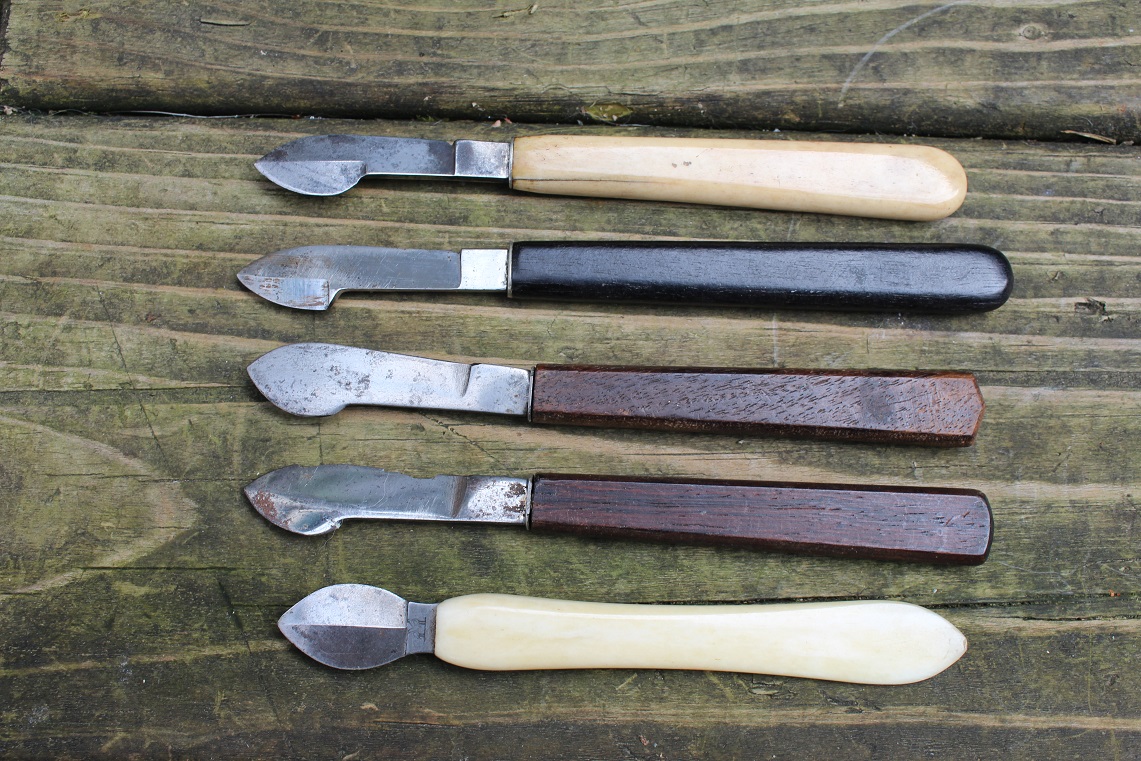
__________________________________________________________________________________________
TC
4 civil war surgical tools
Here we have 4 different Civil War Surgical tools for the roll up kit. Only one of the tools is marked. One has a tortise shell handle and the other 3 have hard rubber handles. Take a look at the pics! Choice $60.00
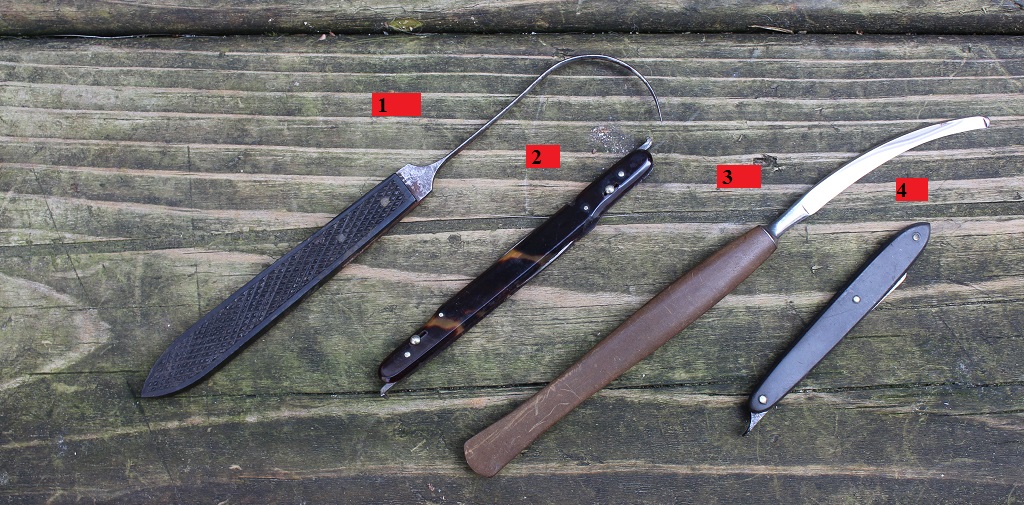
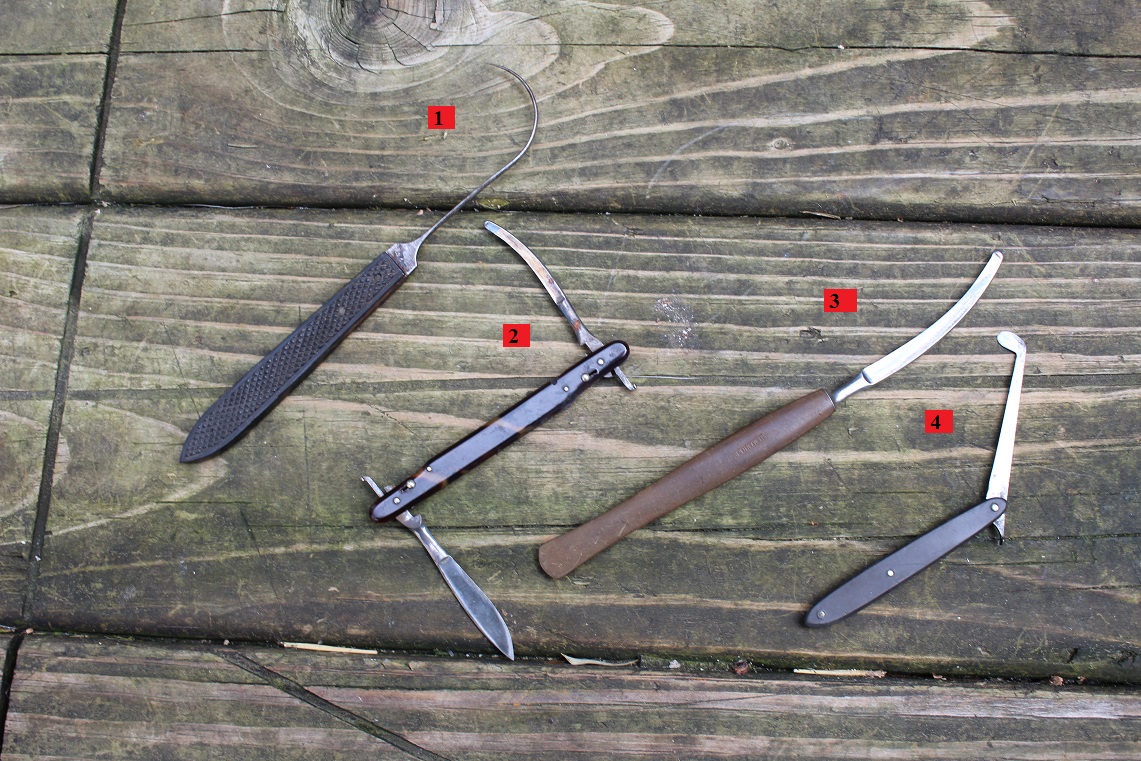
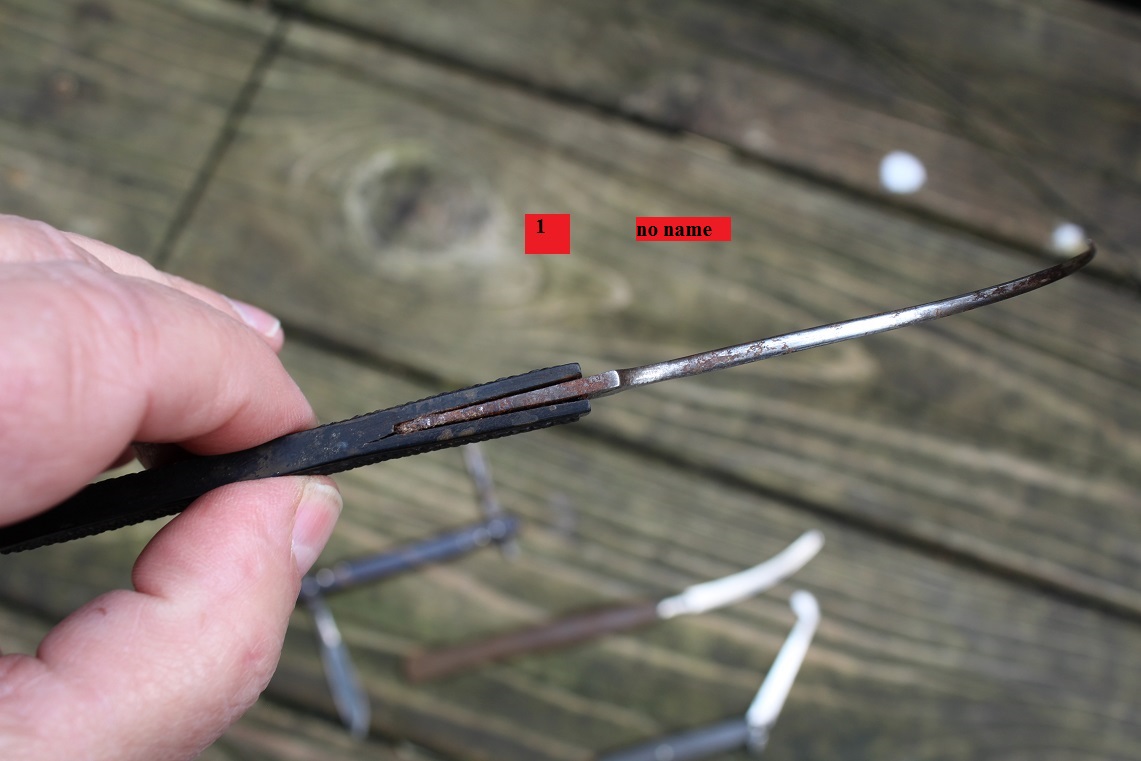
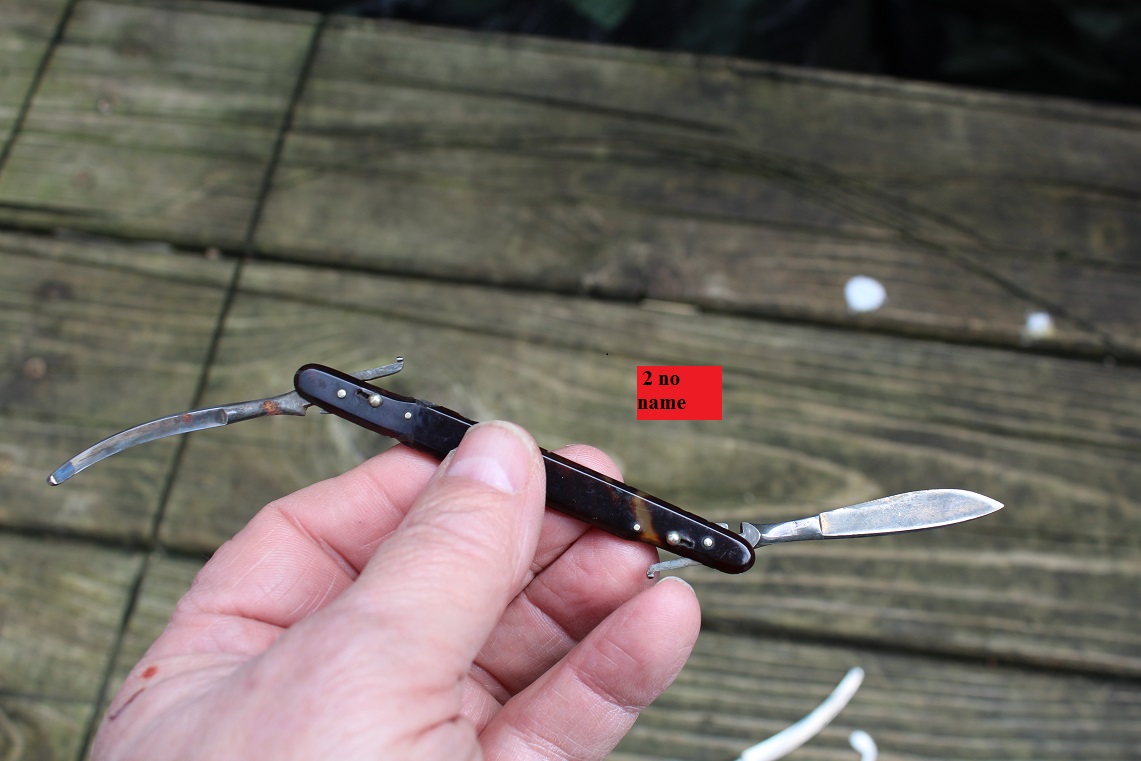
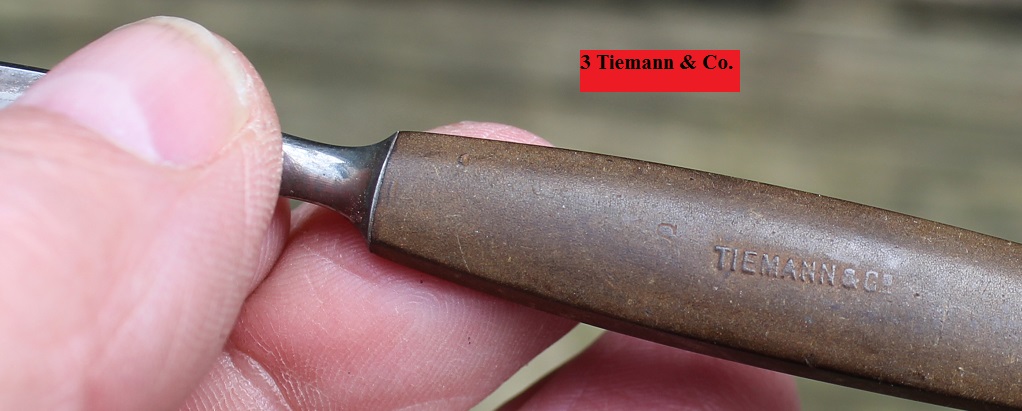
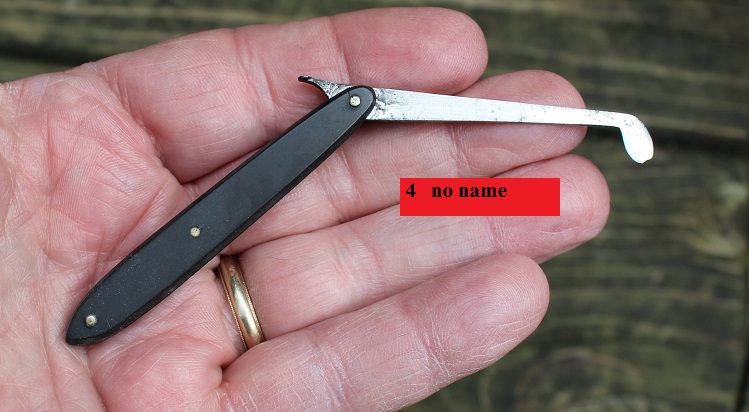
**** _________________________________________________________________________________________
TC
19th Century Tonsil Guillotine
Here we have an antique Tonsil Guillotine With Impaling Needle - Latter part of the 19th Century Piece - Excellent Condition with just Minor Wear!!! This thing is just gruesome Looking! First you impale the tonsils with the fork then you slide the guillotine back to cut off the tonsils! Ugggh! The set measures about 10 1/2 inches long. This set has been plated and has the Crown with shaft through a S logo. For this marvel of medical wonder $225.00
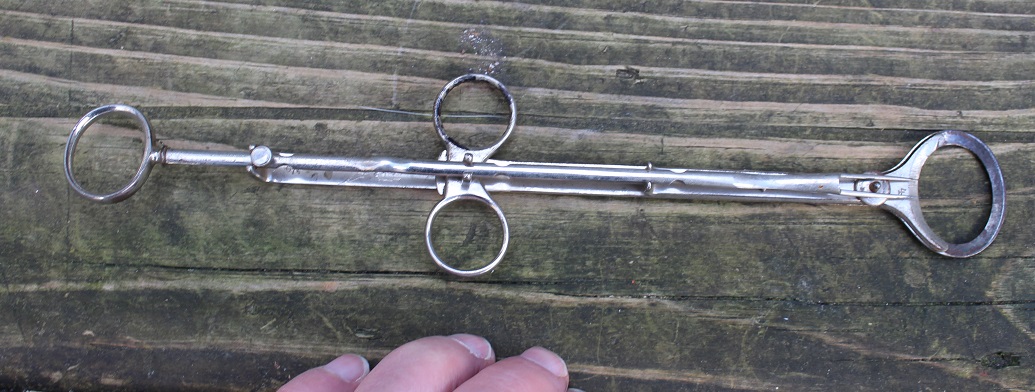
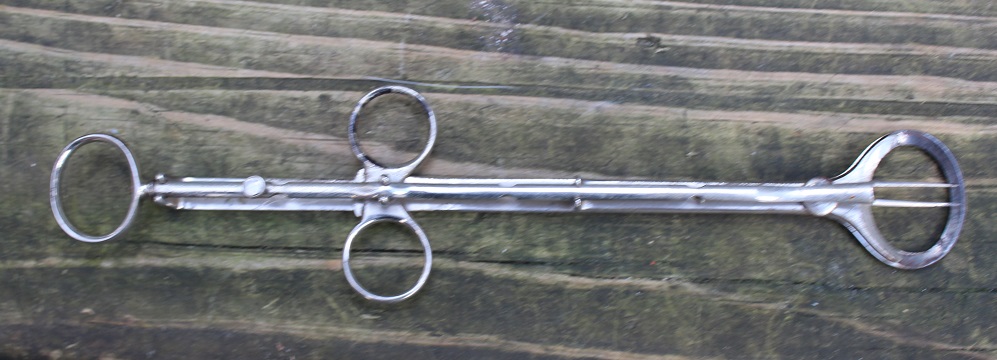

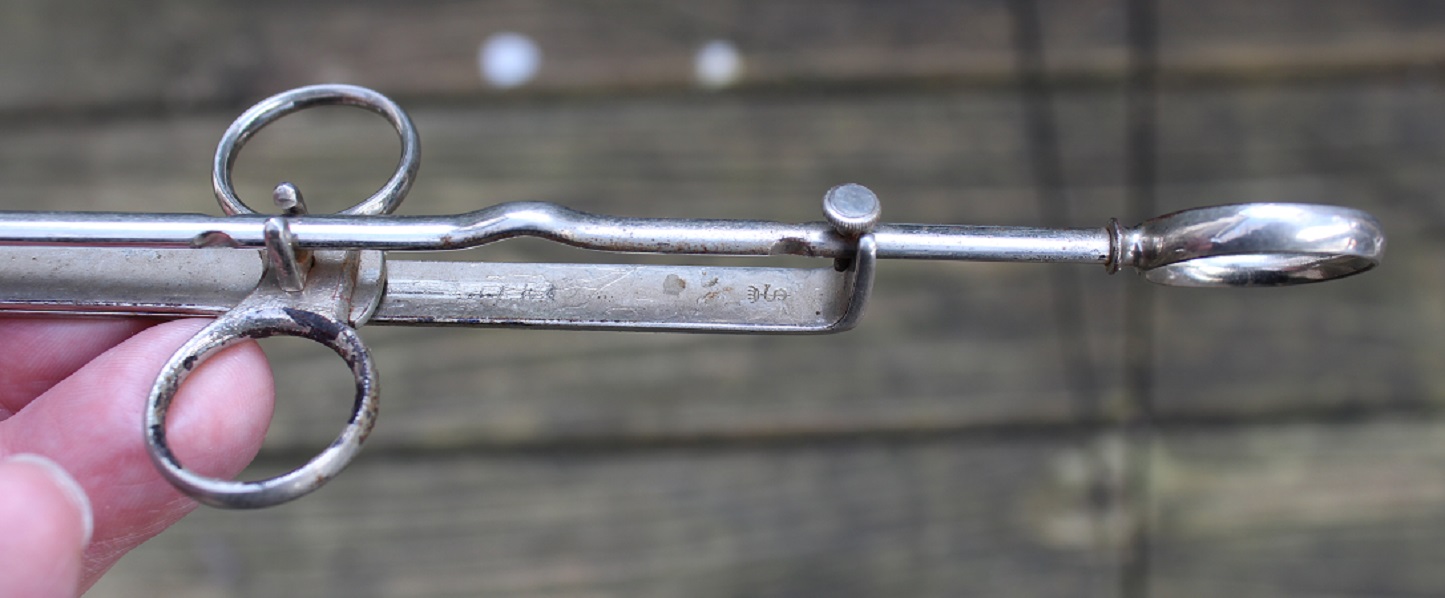
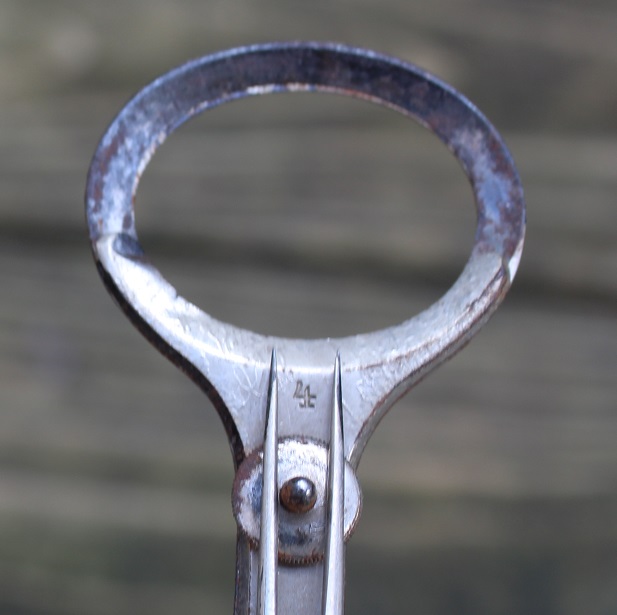
__________________________________________________________________________________________
TC
Sold!!!
Here we have a set of portable Gold Scales or Medicine Scales in a velvet covered box. The scales look complete and they have some age to them but I do not think them to be antique. They are most likely 20th century scales. At least they don't say "Made in China" on them! Lol!!! There is no makers name on them at all. Take a look at the pics! $40.00
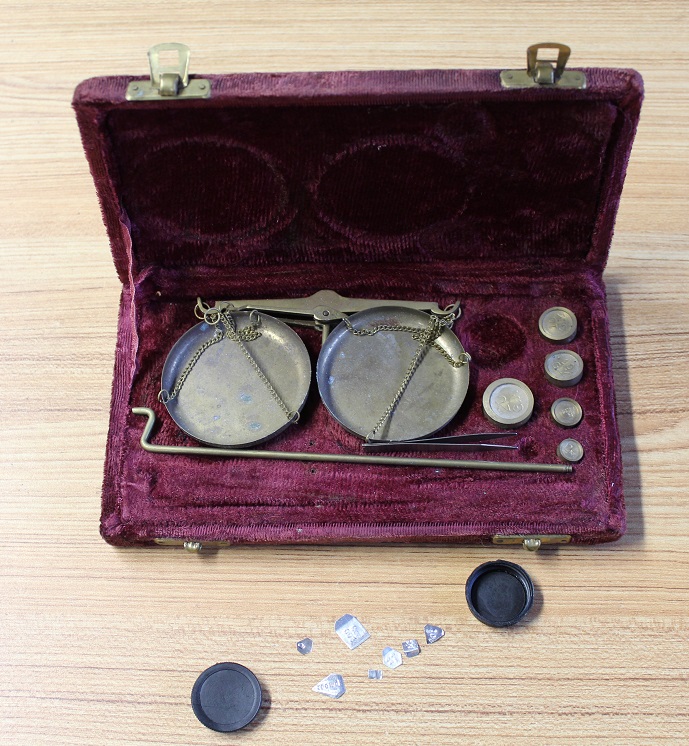
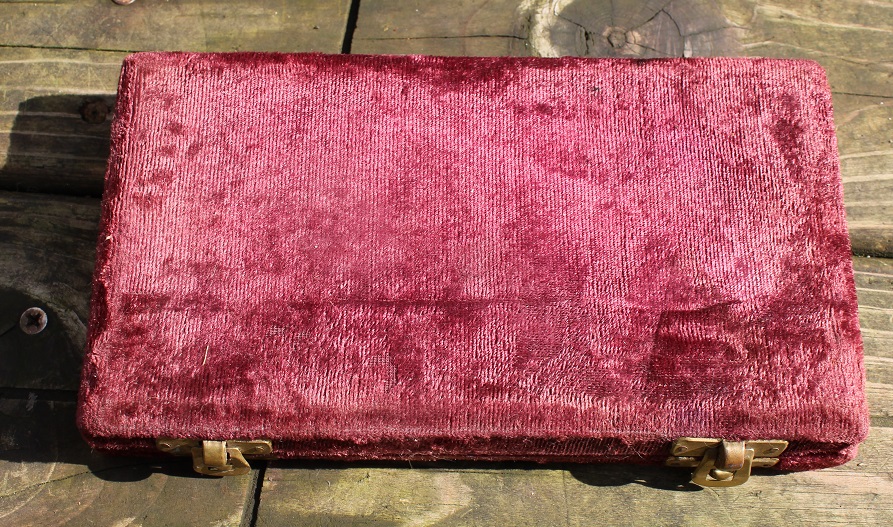
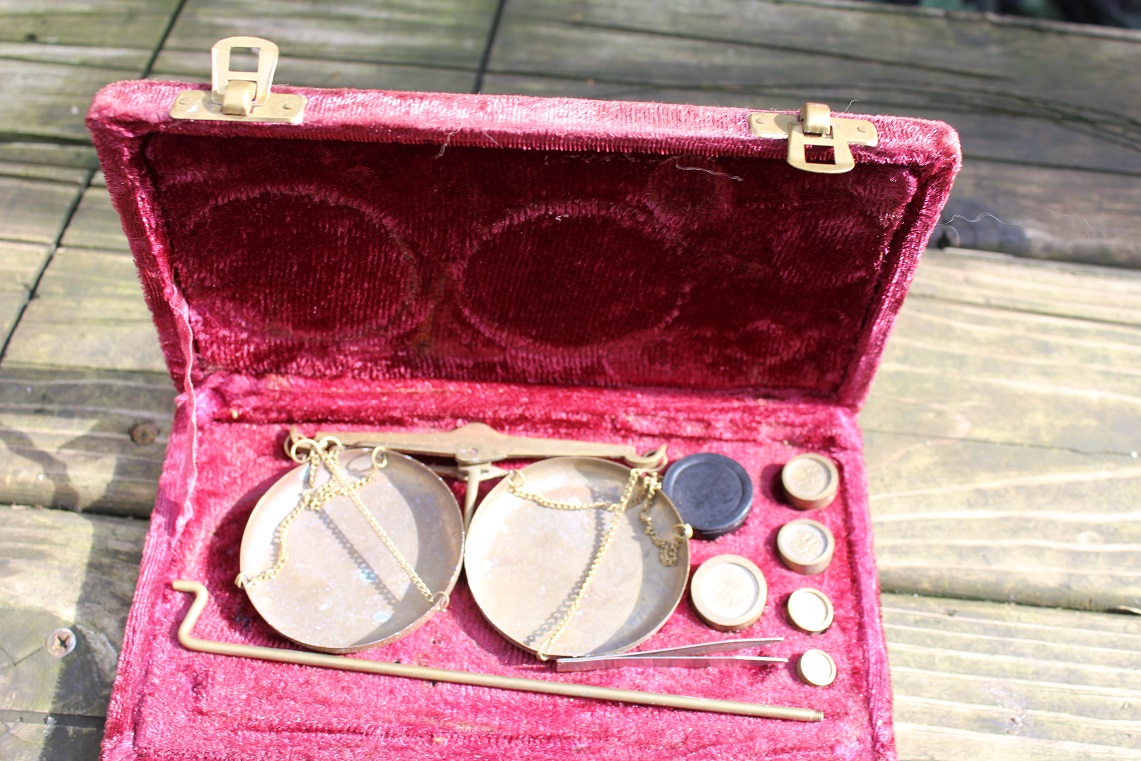
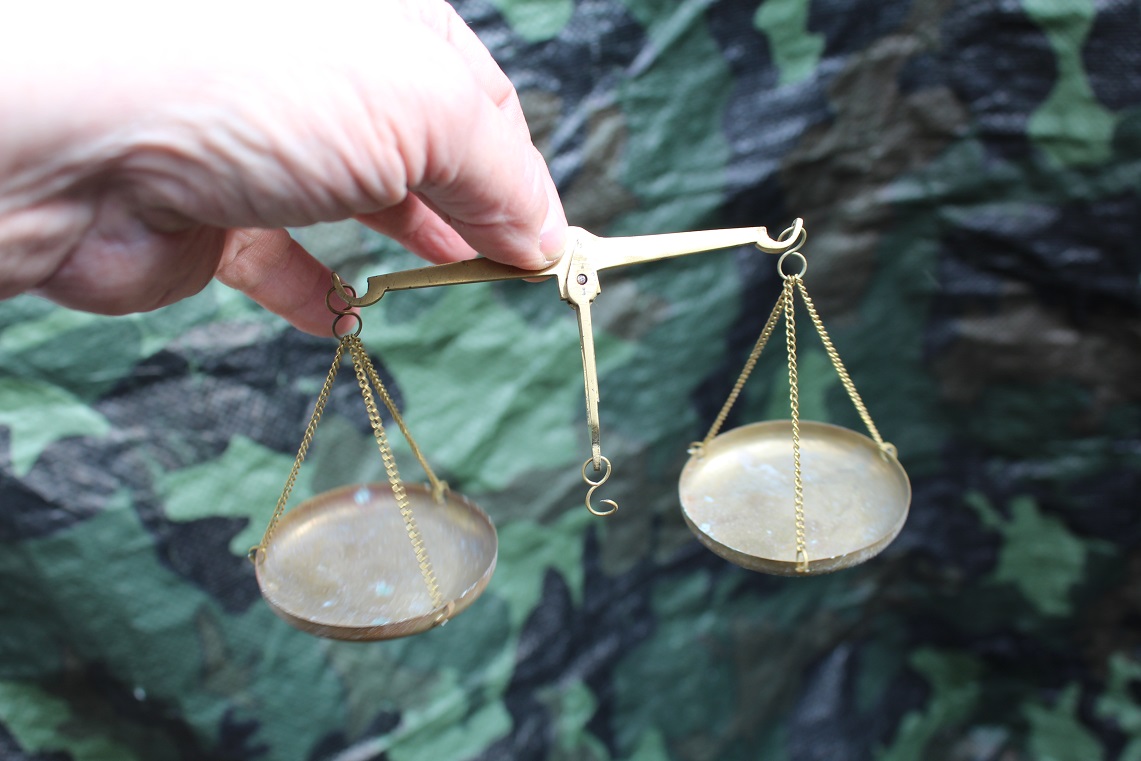
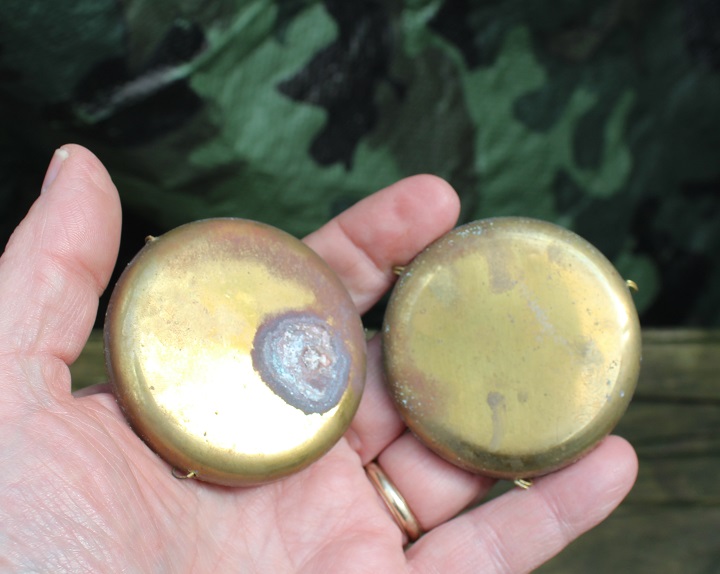
*** __________________________________________________________________________________________
TC
Here we have a vintage Medicine Glass in Case! This one has just the medicine glass and it's been hand etched to show the quantities in teaspoons and tablespoons. This one dates to the late 1800's early 1900's. Take a look at the pics! $95.00
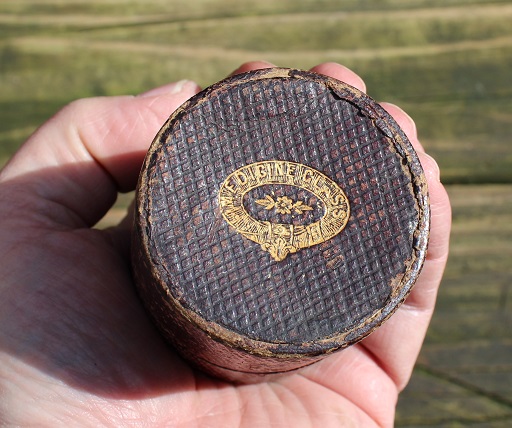
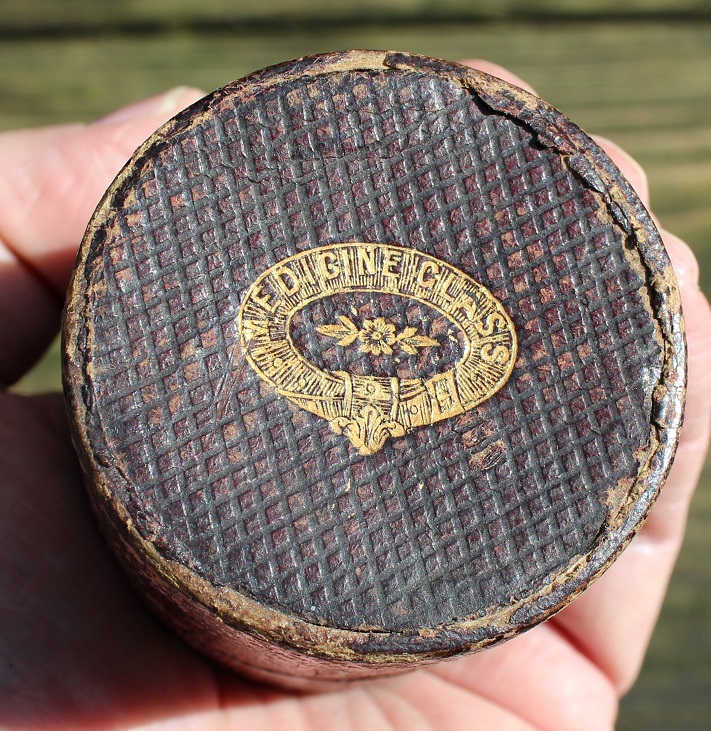
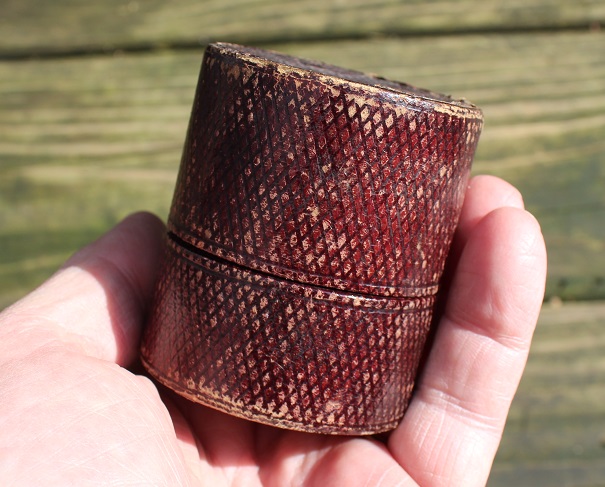
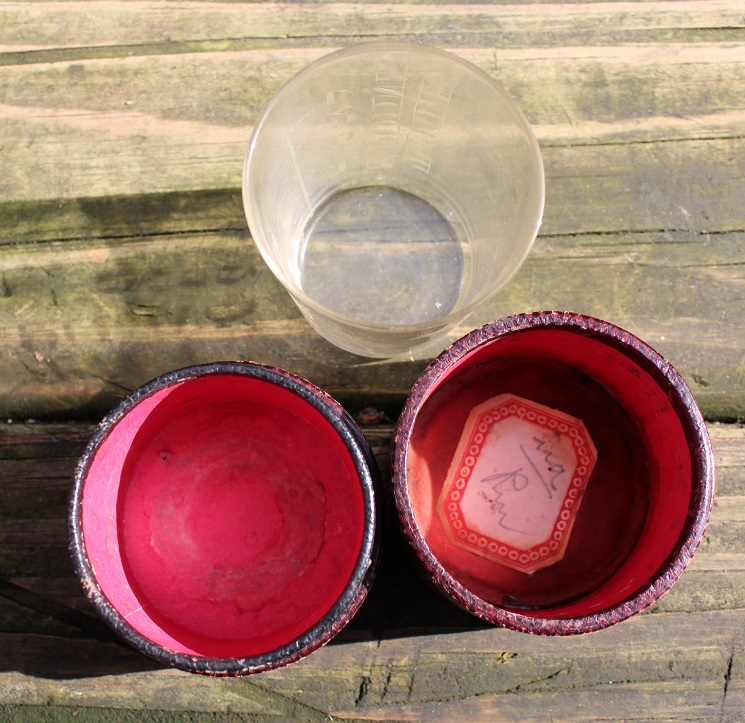
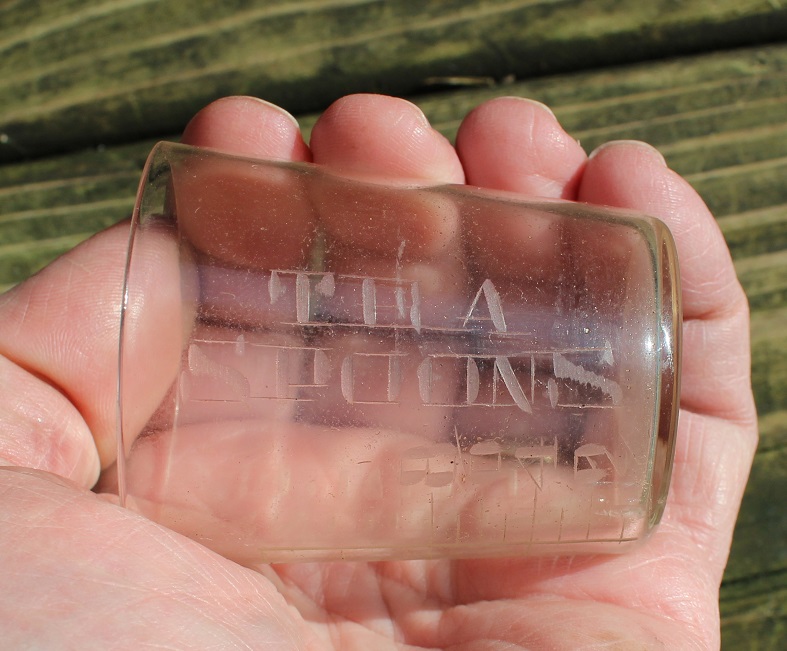
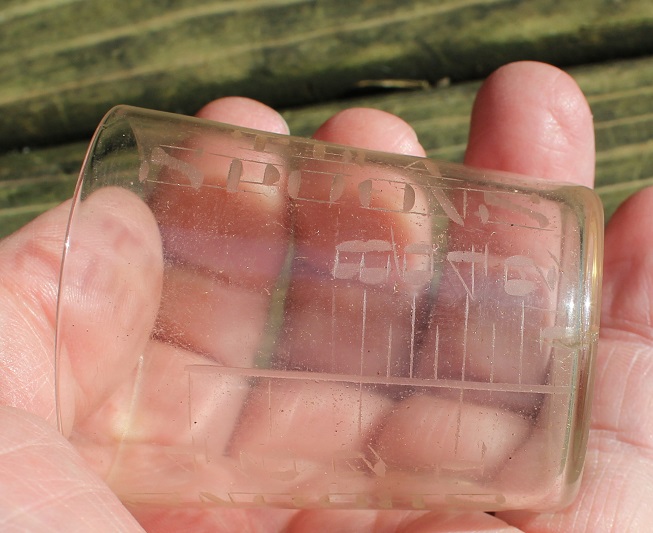
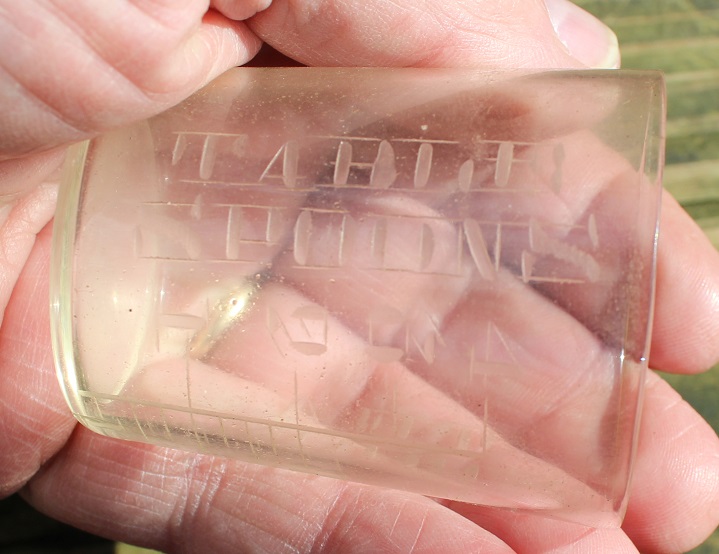
__________________________________________________________________________________________
TC
Here we have a Medicine Glass & Minim Measure. Medicine glasses and minim measures were standard pieces of equipment for decades (1870-1930). They were used for accurately measuring out liquid medicines. A minim was a measurement used by apothecaries, equivalent to one drop of water.A leather cased Medicine Measure Glass. The case is made of paper thin leather on card with a gilt stamp to stating 'Medicine Glass & Minim Measure'. The glass is not engraved. The minim measure has its own case within the case with a top also stamped in gilt noting its contents. The minim measure is engraved with measurements from 20 to 60. This piece is in excellent condition! Check out the pics! For this one $95.00 and if the glass was engraved it would be at least $100 more.
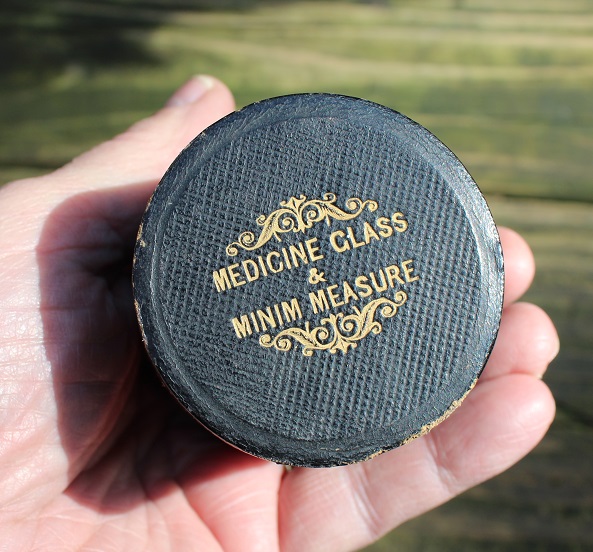
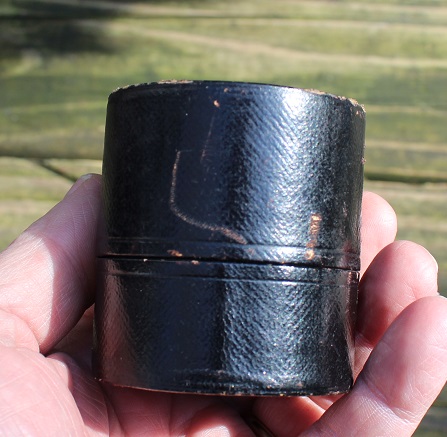
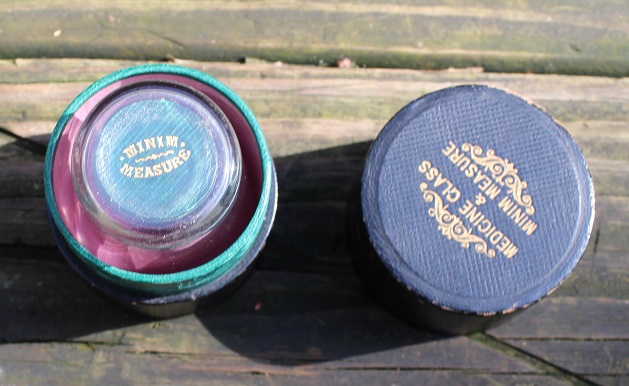
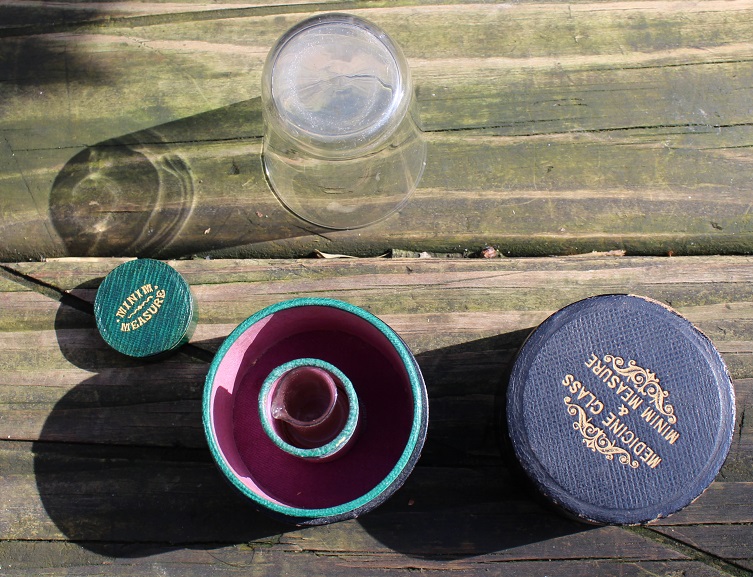
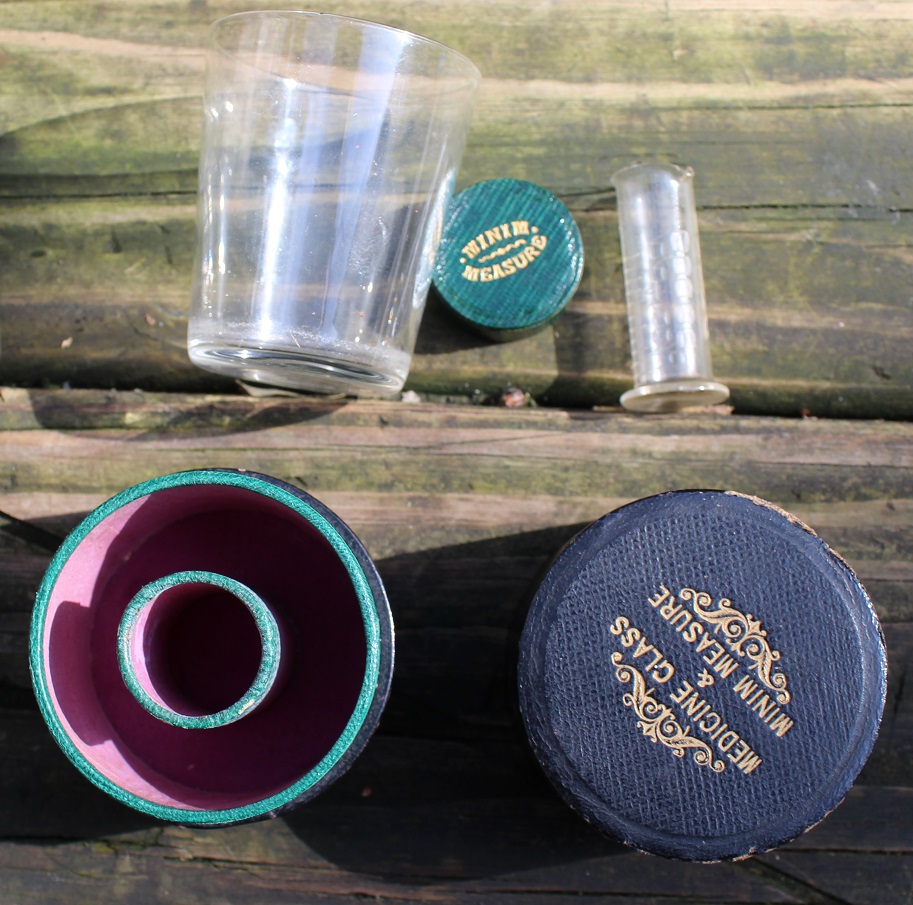
***__________________________________________________________________________________________
TC
Eye surgical tools
Here we have a collection in display case of 19 original 19th century eye surgical tools. Some are marked Charriere. Charrière was born in Cerniat, in the Canton of Fribourg, Switzerland. He moved to Paris at age 13, and was apprenticed to a manufacturer of knives. In 1820, he founded a company manufacturing surgical instruments, which quickly grew to 400 employees by around 1840, and was world-famous by his death. These instruments are still in good condition. As previously mentioned some are marked Charriere but other names on these instruments are Tiemann, J & S over a crown, Llitir Inwien, Maw London, Leur, F.Hajek and some are unmarked. Some have a little rust on them but should clean up ok. Most are fine. A few have cracks in the handles but nothing is loose on any of them. Take a look at the pics! $375.00 for all
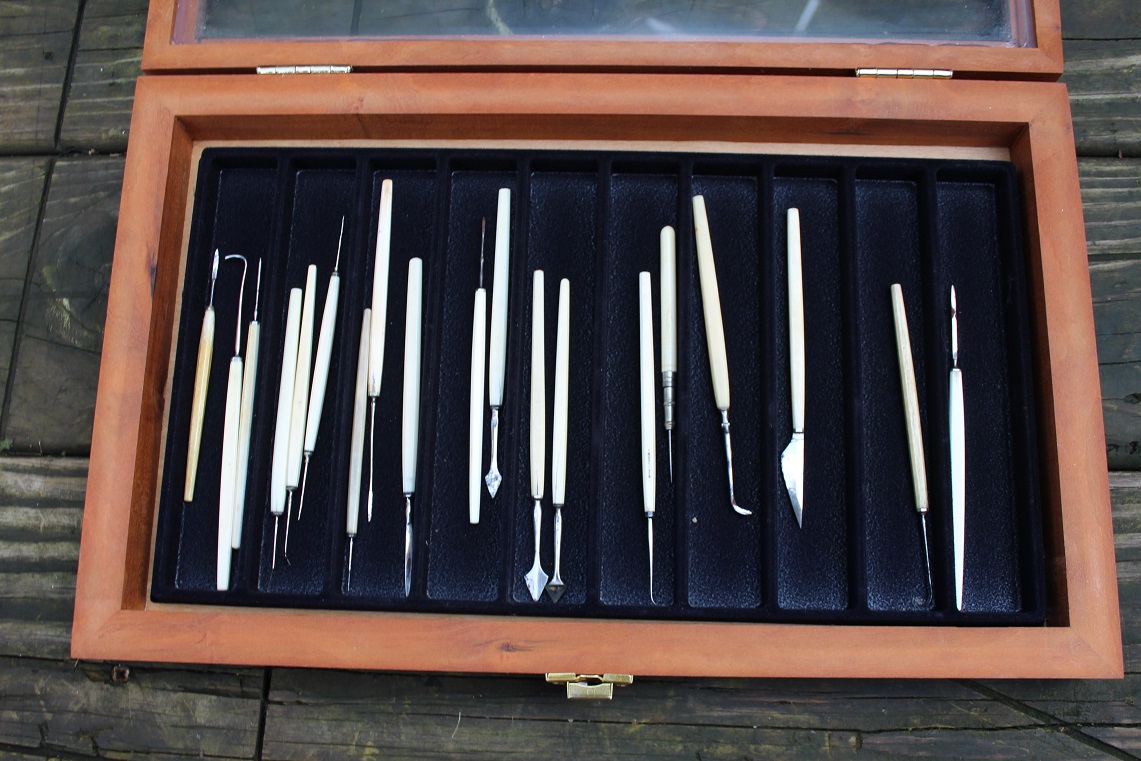
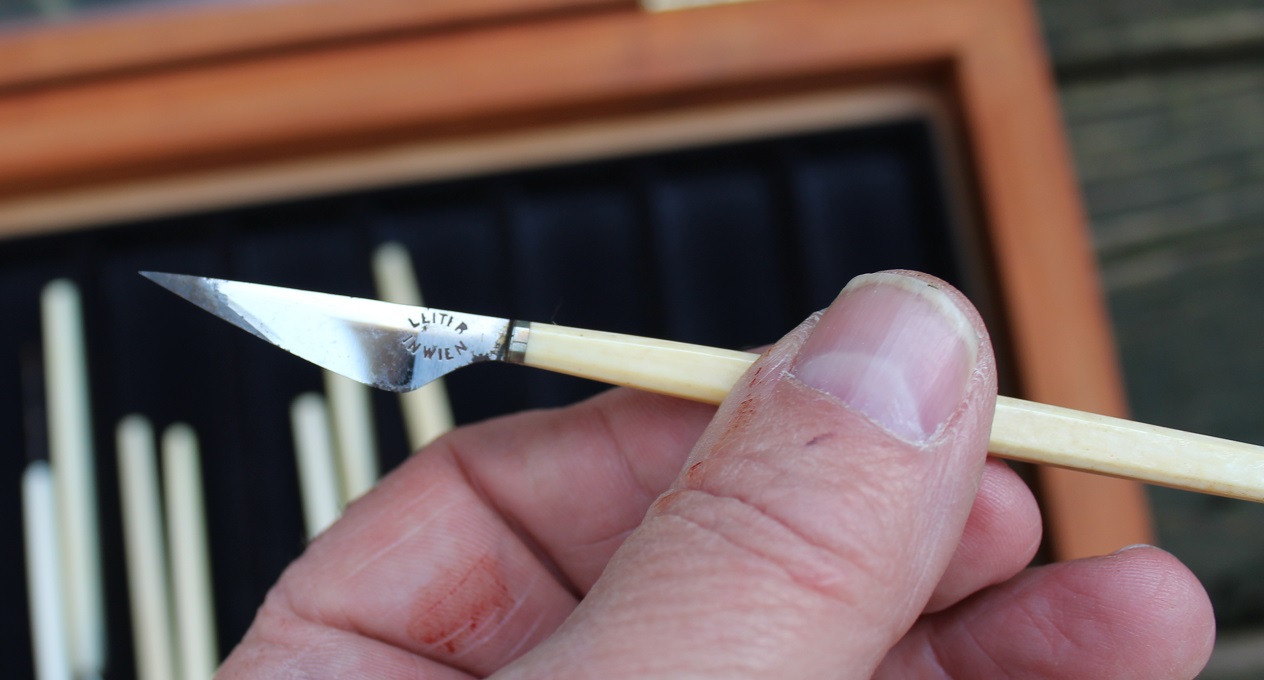



___________________________________________________________________________________________
TC
Pocket surgical tools
Here we have 8 Civil War Era pocket Surgical tools with tortise shell grips. These are all the folding type that go in a leather roll up kit. Various makers $60 Each. Take a look at the pics!
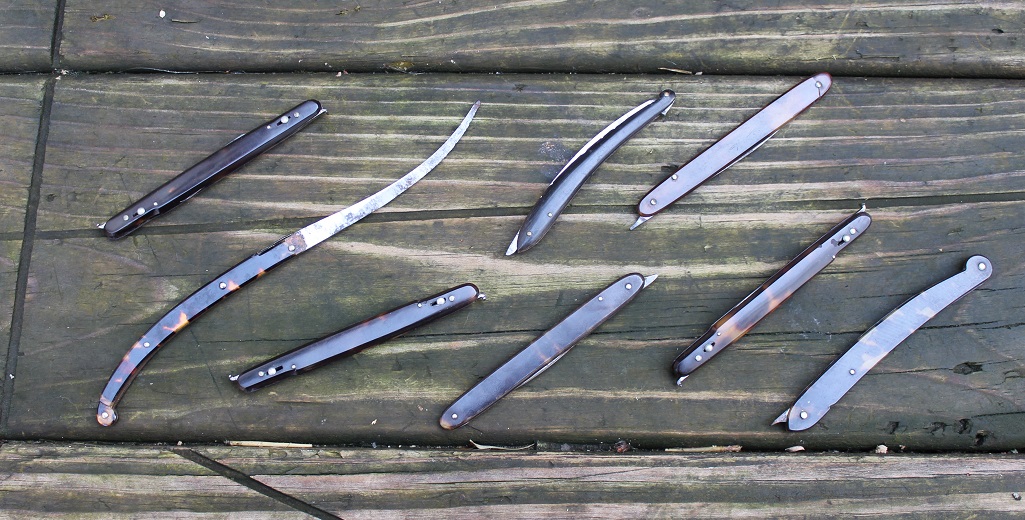
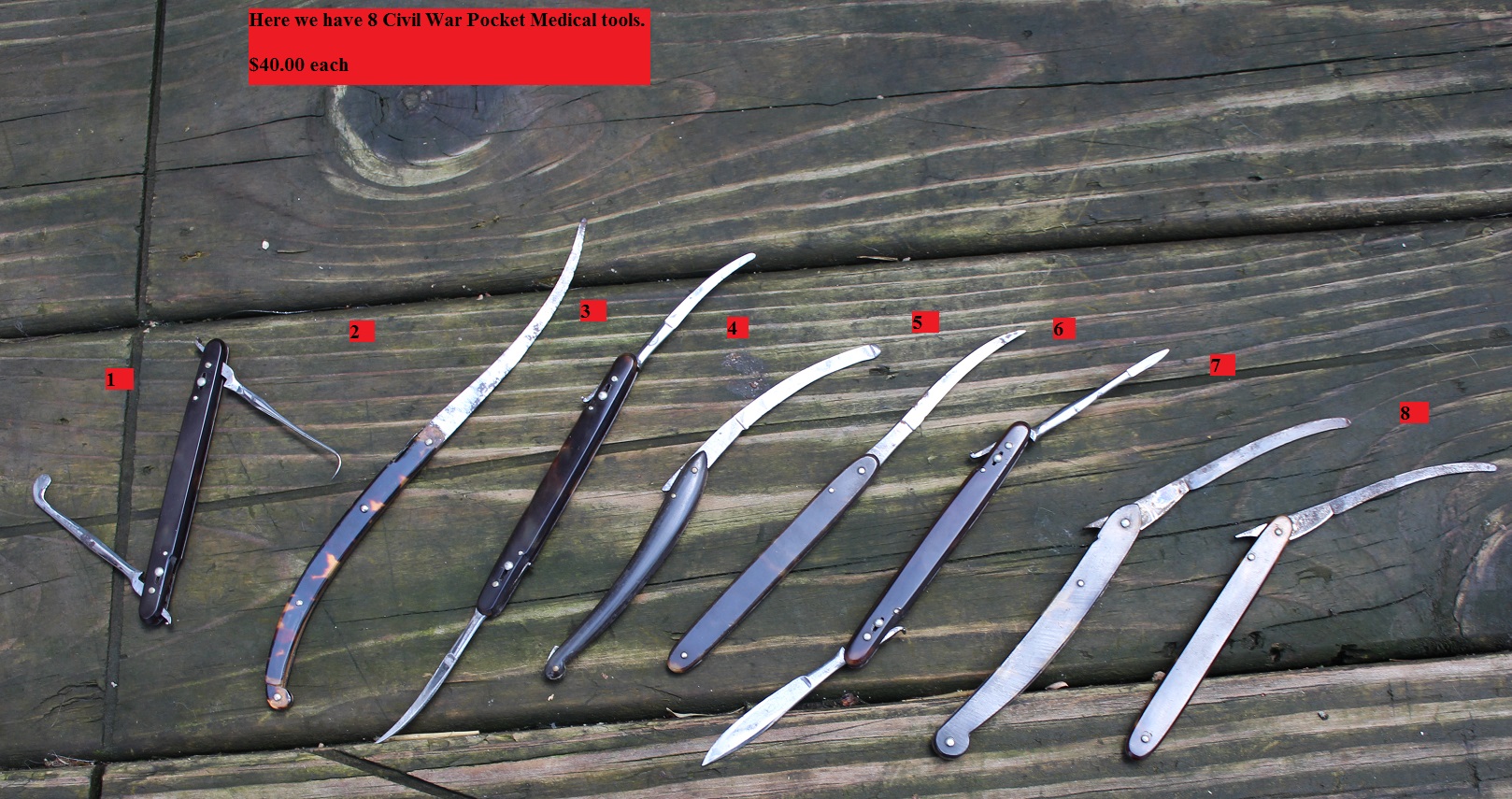
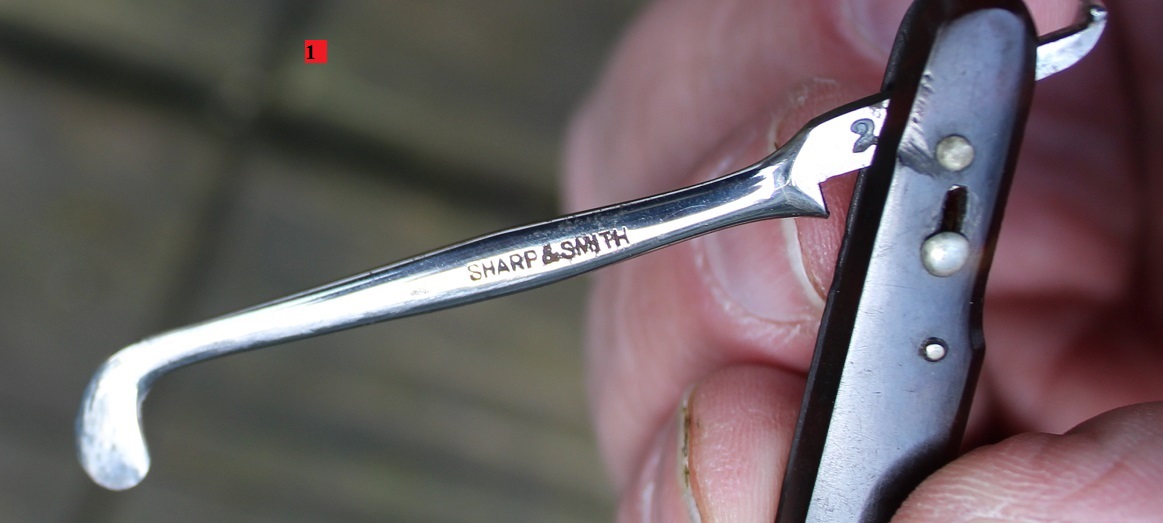
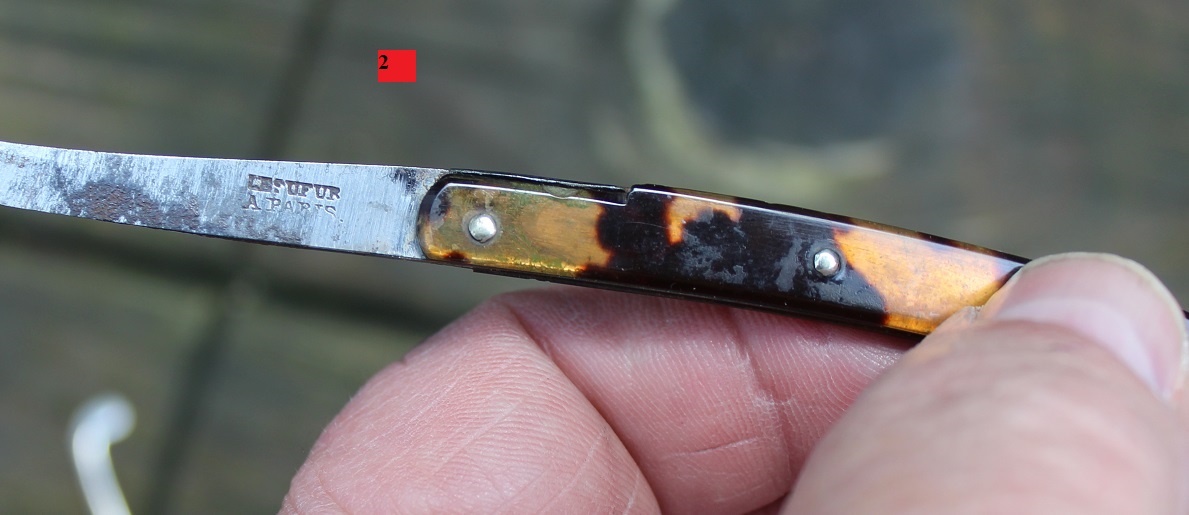

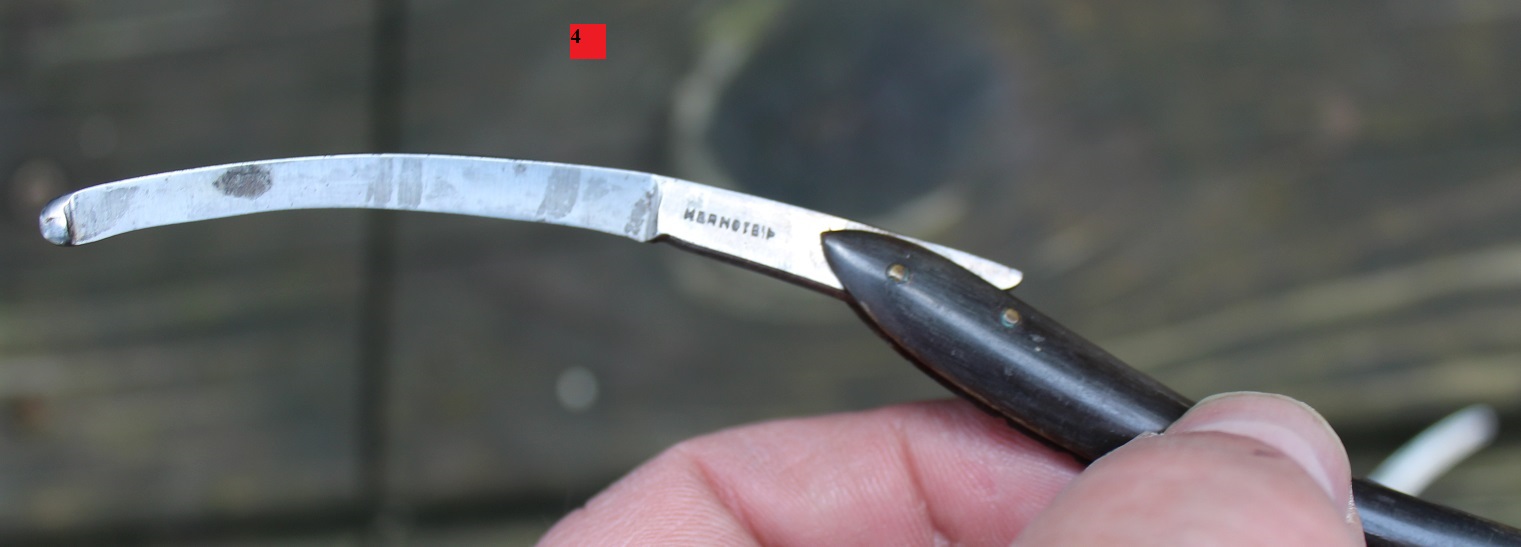
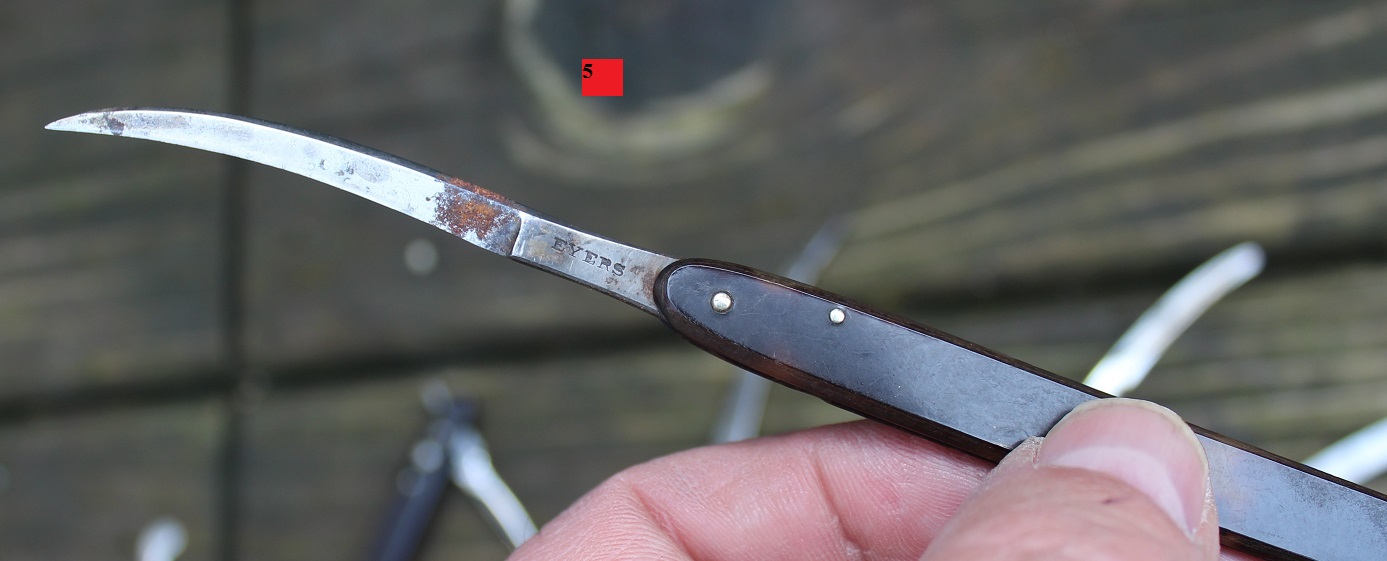
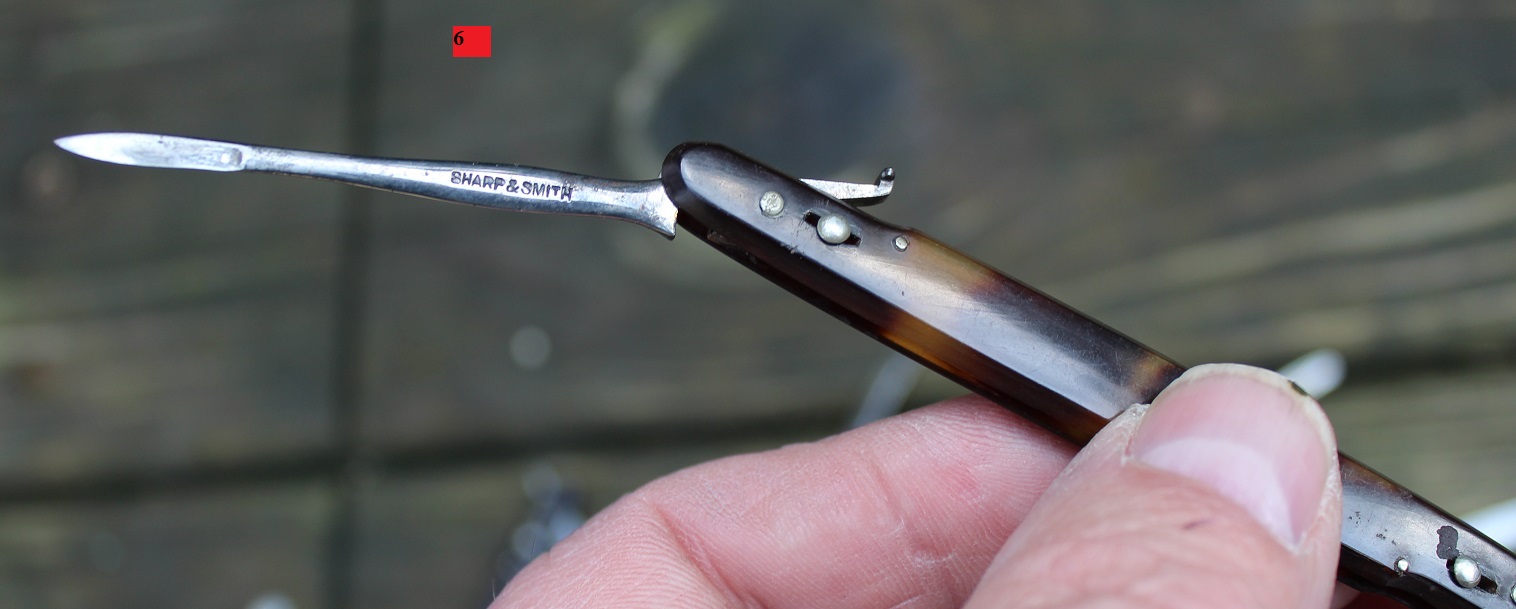
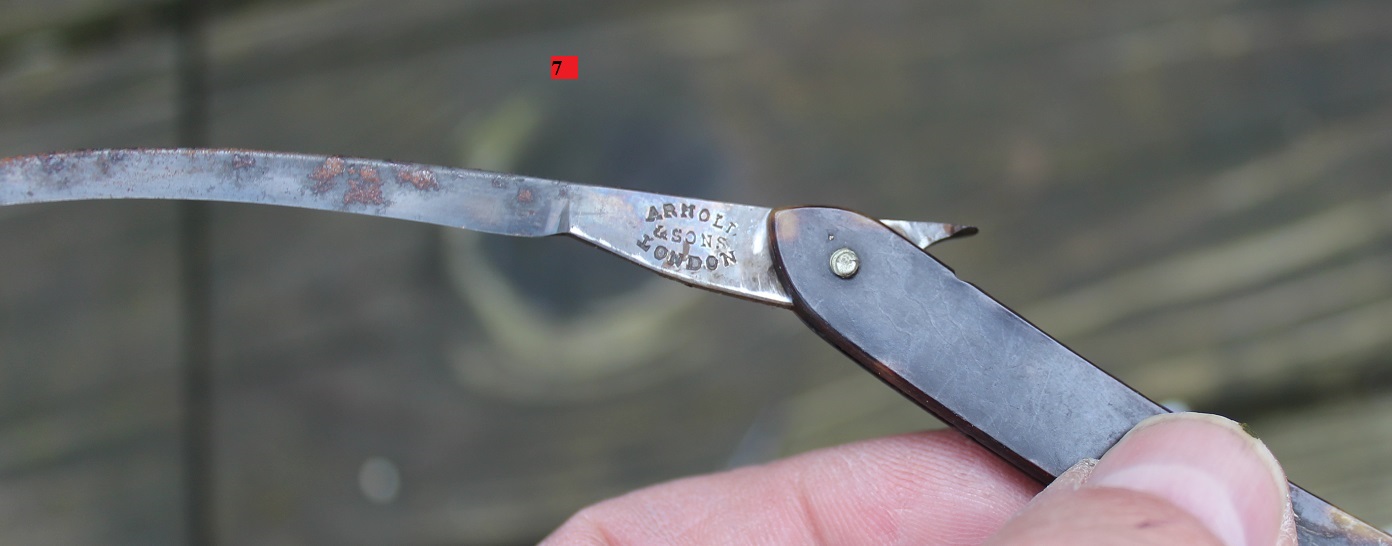
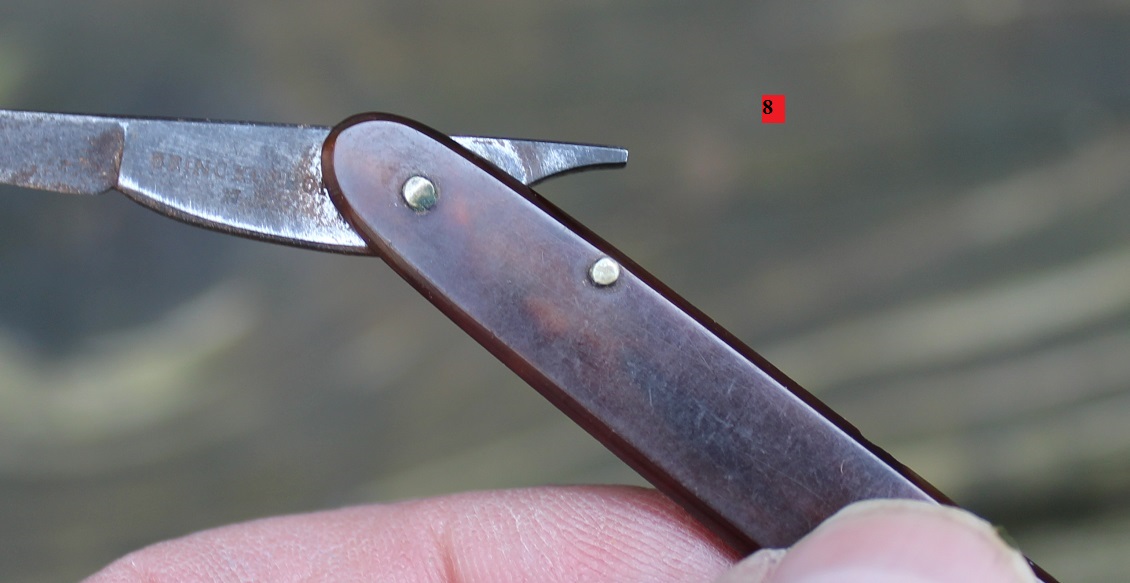
________________________________________________________________________________________
TC syringes
Here we have a collection of 19th and 20th century medical glass syringes. The previous owner was a Civil War Medical Reenactor and used these for display purposes. Comes in a nice little display tray. Some of the syringes have old hard rubber pieces to them and some have early plastic. All are different. These syringes are just taped down and easy to remove if you want to. For the collection $325.00
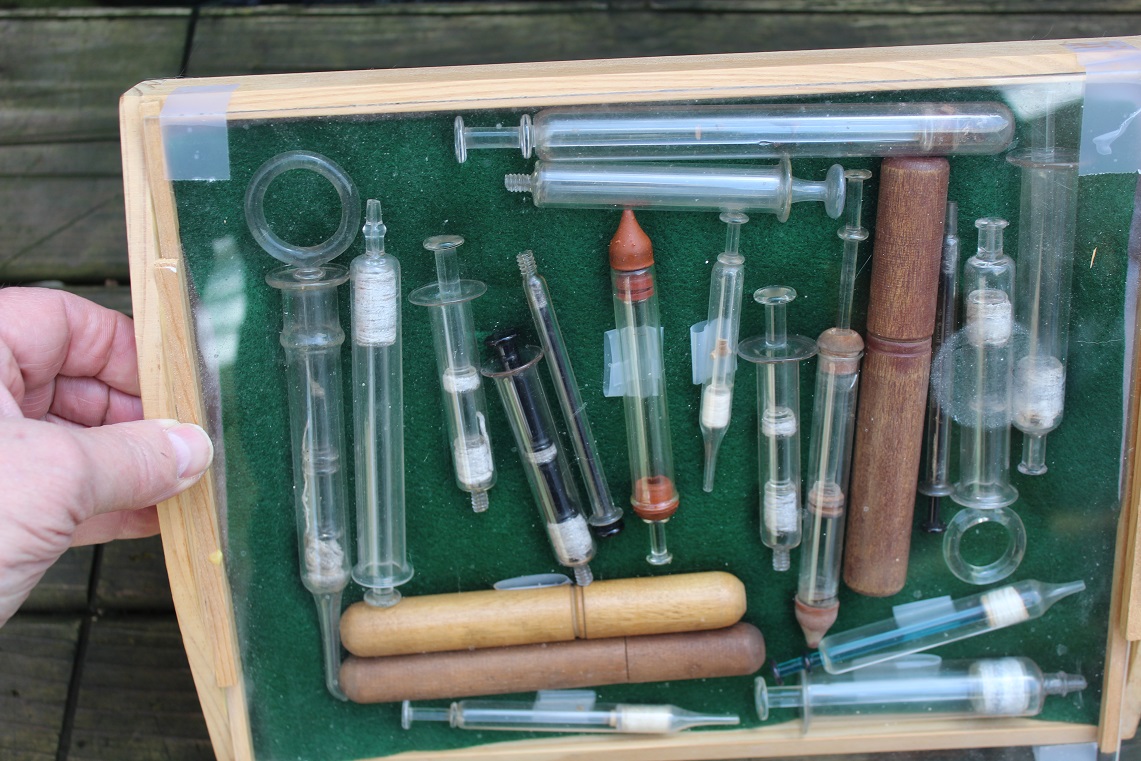
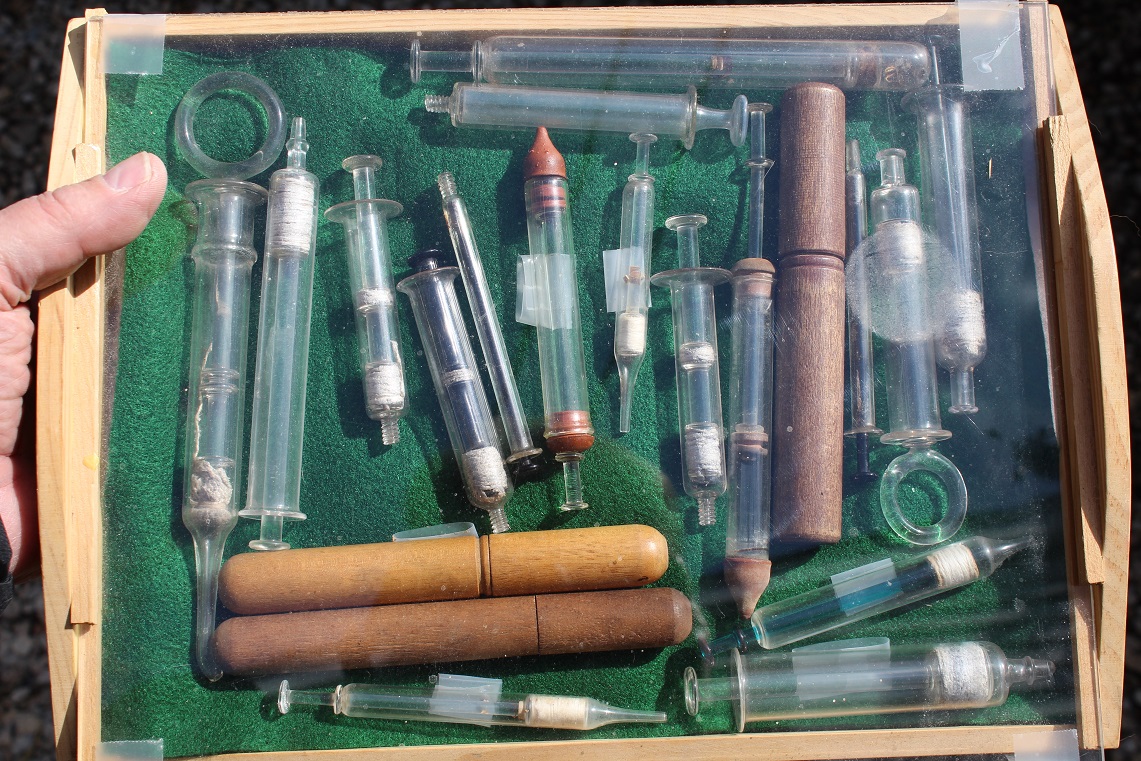
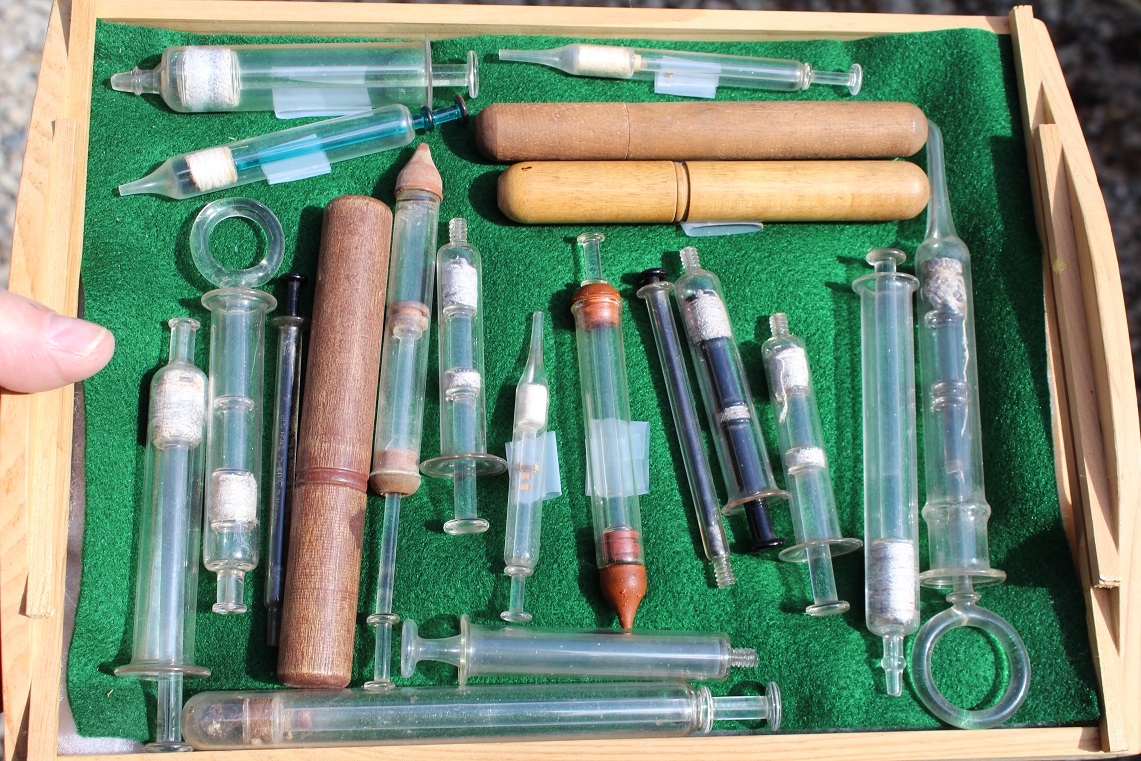
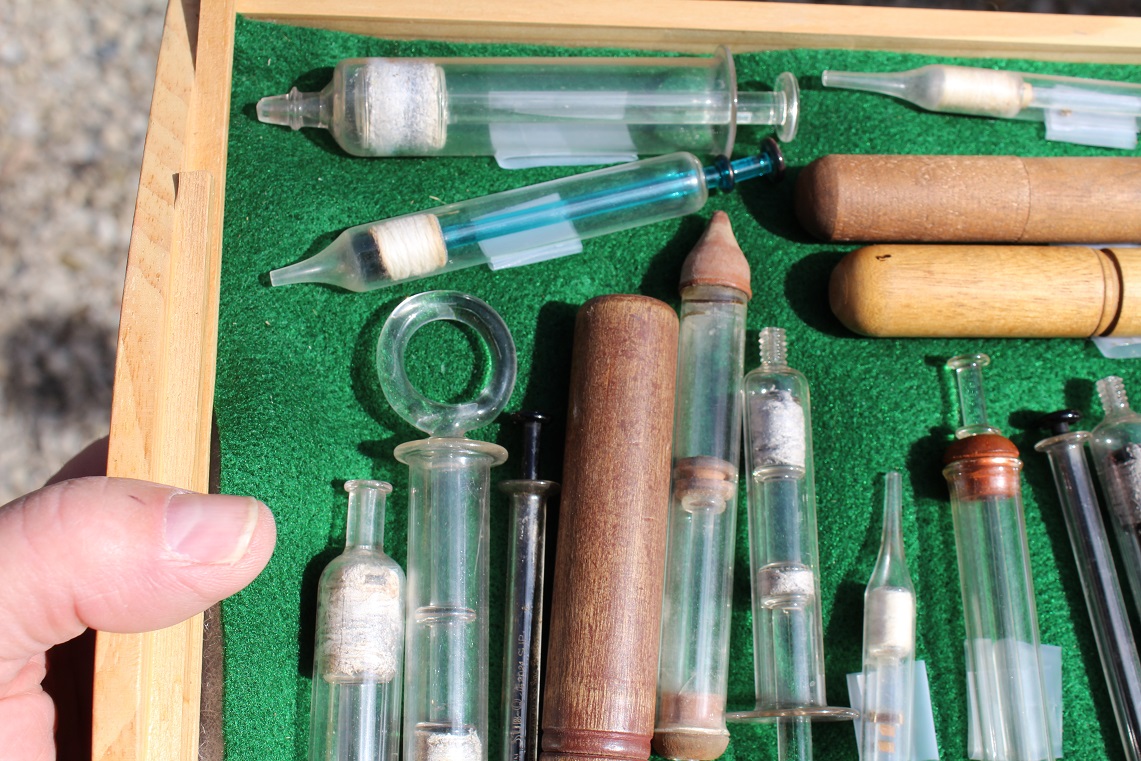
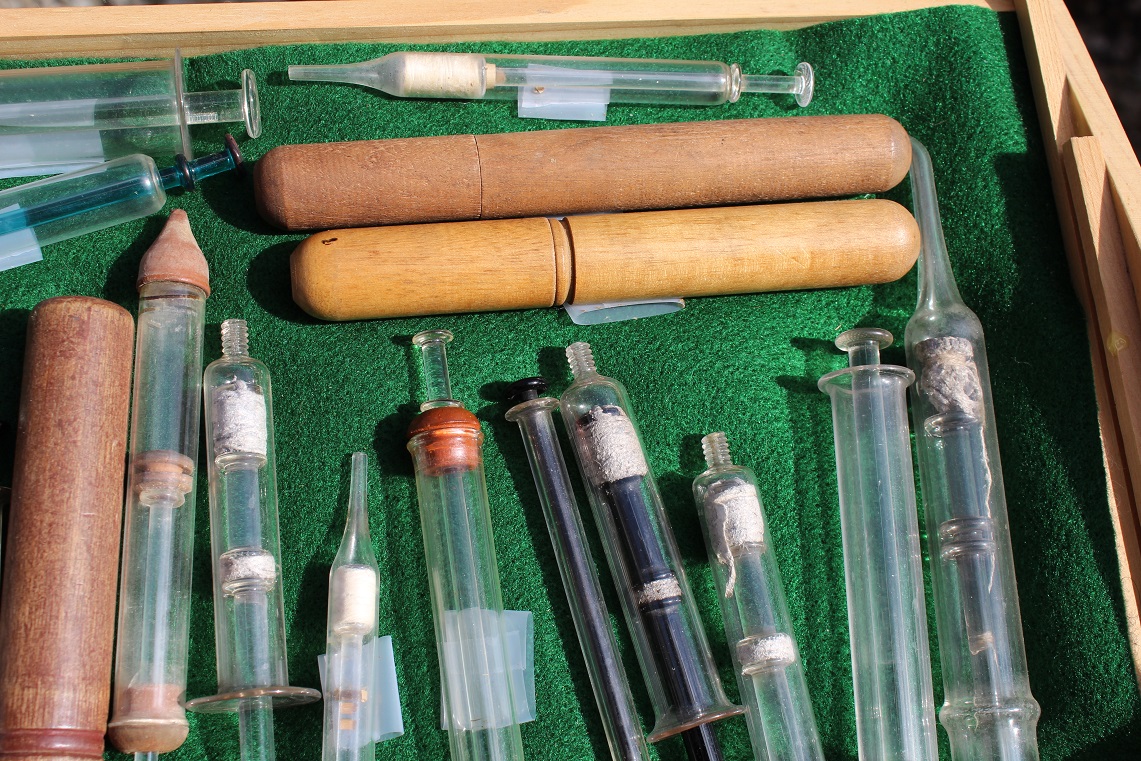
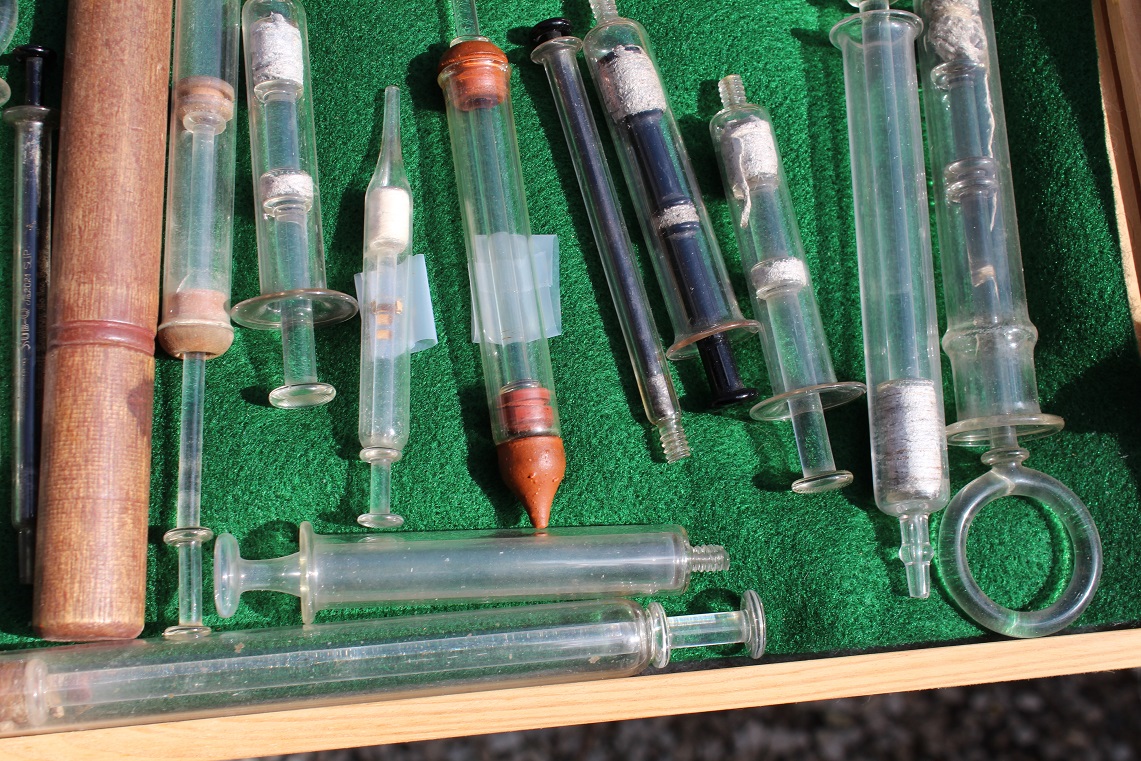
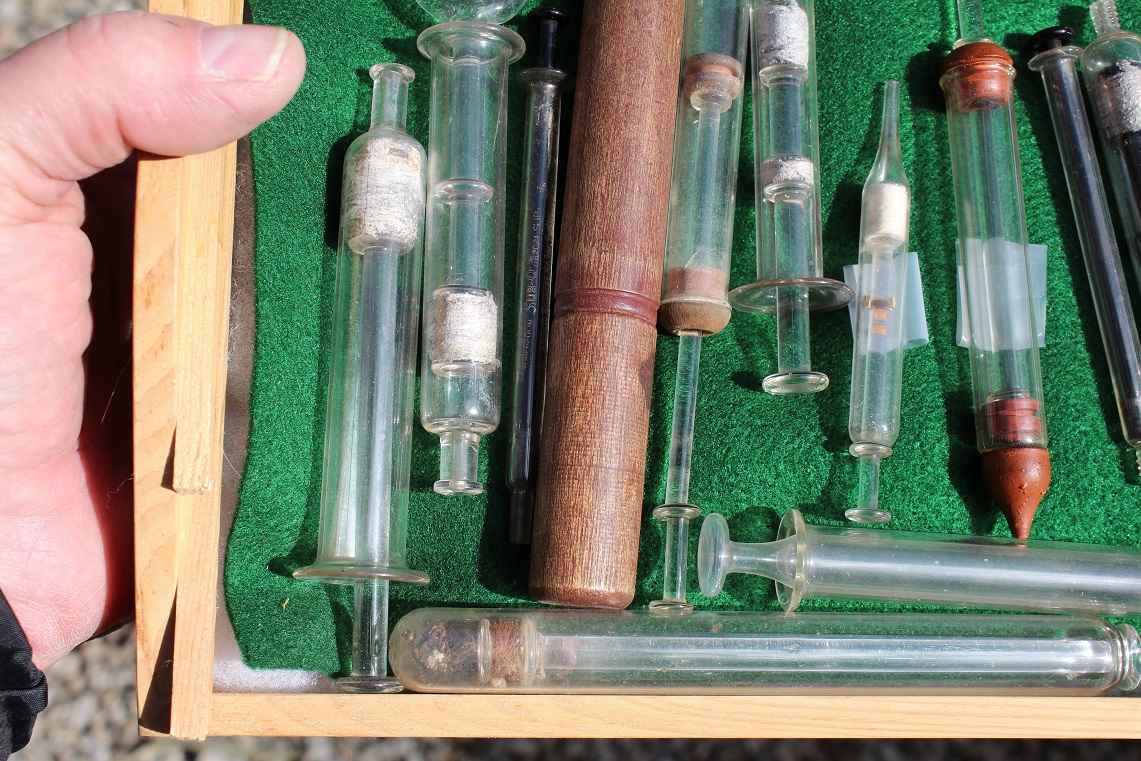
---------------------------------------------------------------------------------------------------------------------------------------------------------
Med items 1
Here's a very unique item that we just picked up. This item came from Arkansas but unfortunately no history accompanies it. This is the type of Civil War Veterans Amputee crutch/prosthesis that were worn by many, many veterans after the Civil War. The wounds were horrific and the easiest way to take care of them was just to amputate the limb. This particular crutch was made for an amputation just above the knee. This piece is made of walnut, I believe, and shows a bit of use. Where it is black is the original old patina and where it is wood grain is where the old vet would handle it. If this piece is commercially made I can find no makers marks. The pics can describe it much better than my poor attempts to do so. There are two brass strips on either side of the yoke for strength. The peg leg end is held together from splitting with an iron ring about 2 inches long tipped with an old formula of red rubber which exhibits much use. There is a piece of padded leather in the yoke on which to rest the stump. This entire piece is about 40 inches long and over 6 inches wide. This piece was made for a right leg amputation as there is wehre the notches for the straps flare out so that this individual could tighten the straps by himself. There are a few age cracks but surface only . A very unique piece and probably one of a kind! I have included a couple of pics showing a similiar crutch used in the Civil War by a soldier wounded at Hatcher's Run. This information is from page 249 of Warman's Civil War Collectibles Identification and Price Guide by John F. Graf. This particuliar guide was printed in 2006. Check out the pics!!! $650.00
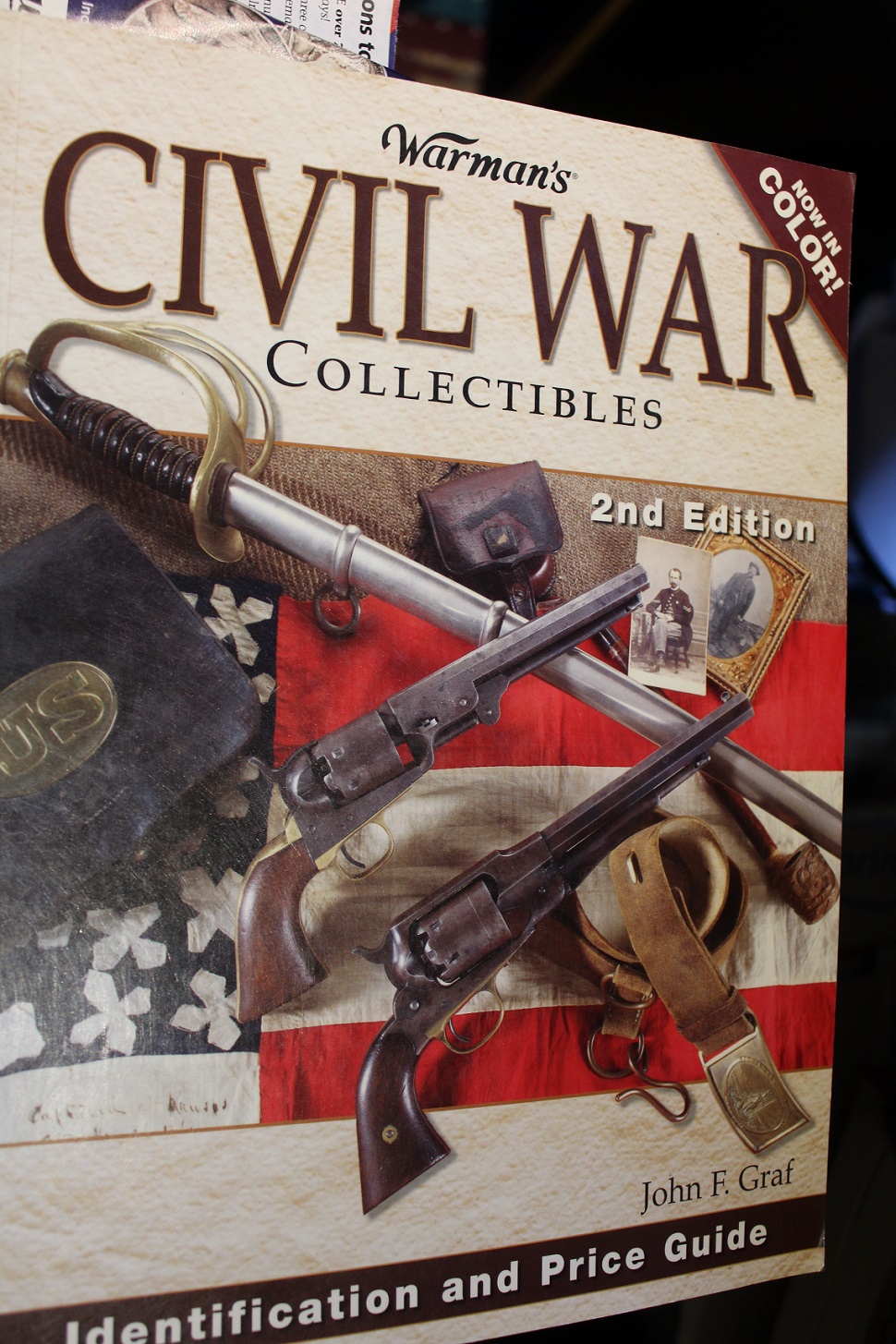
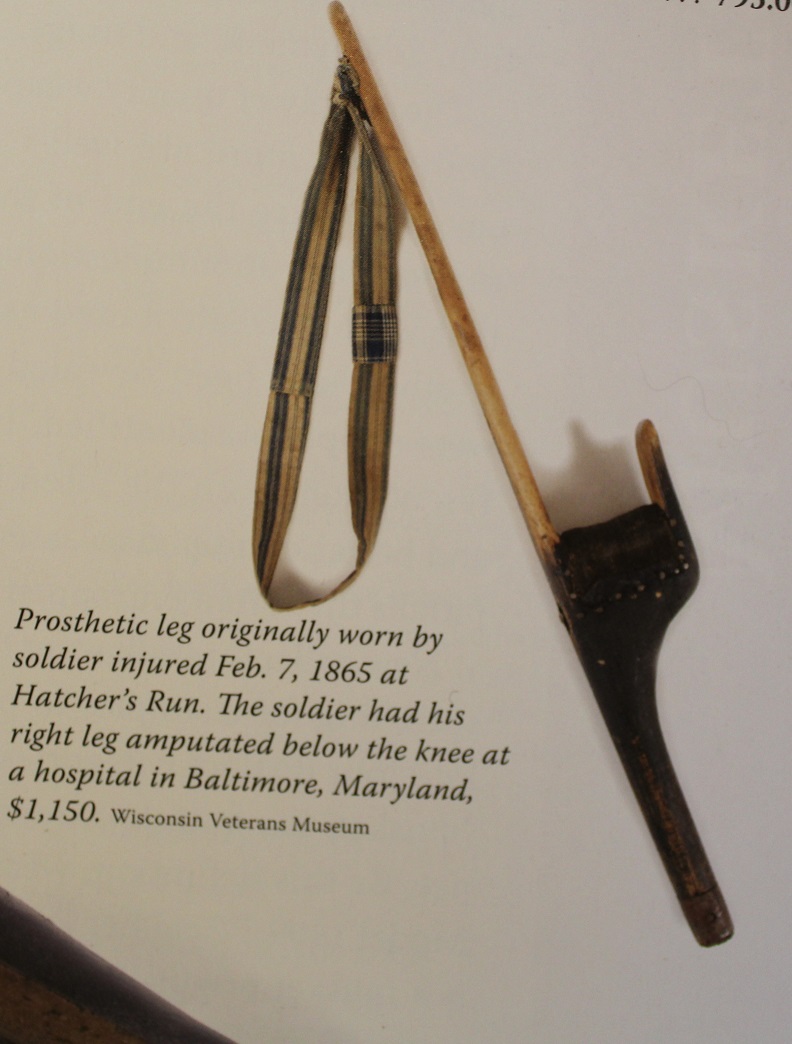
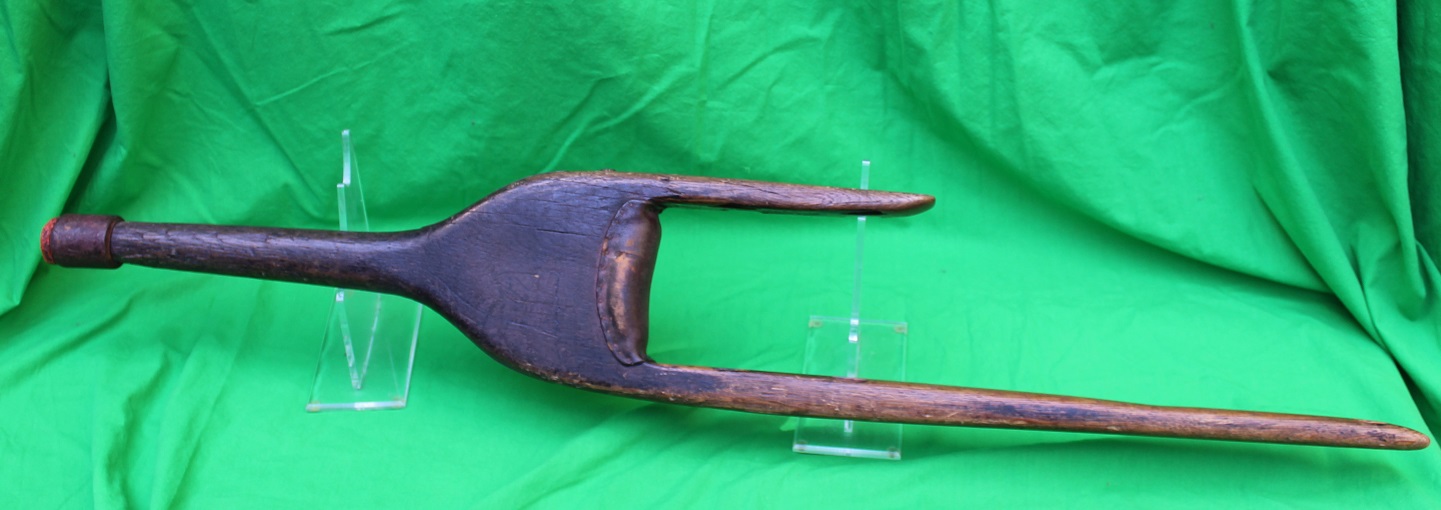


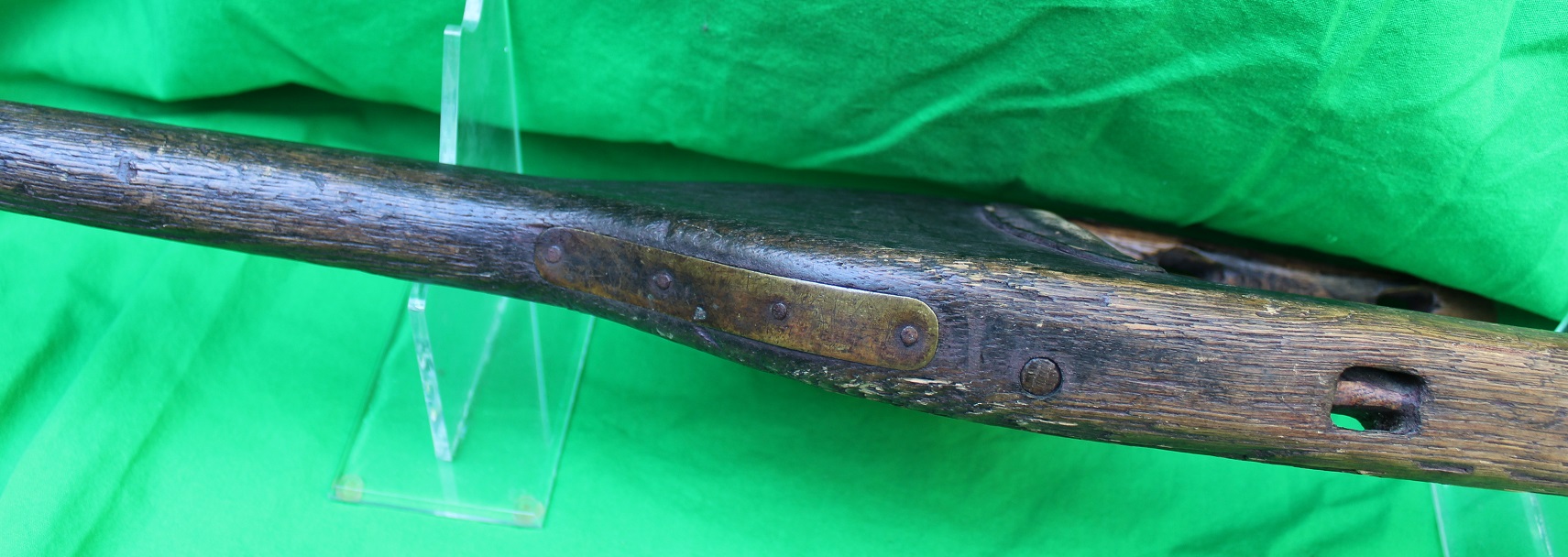
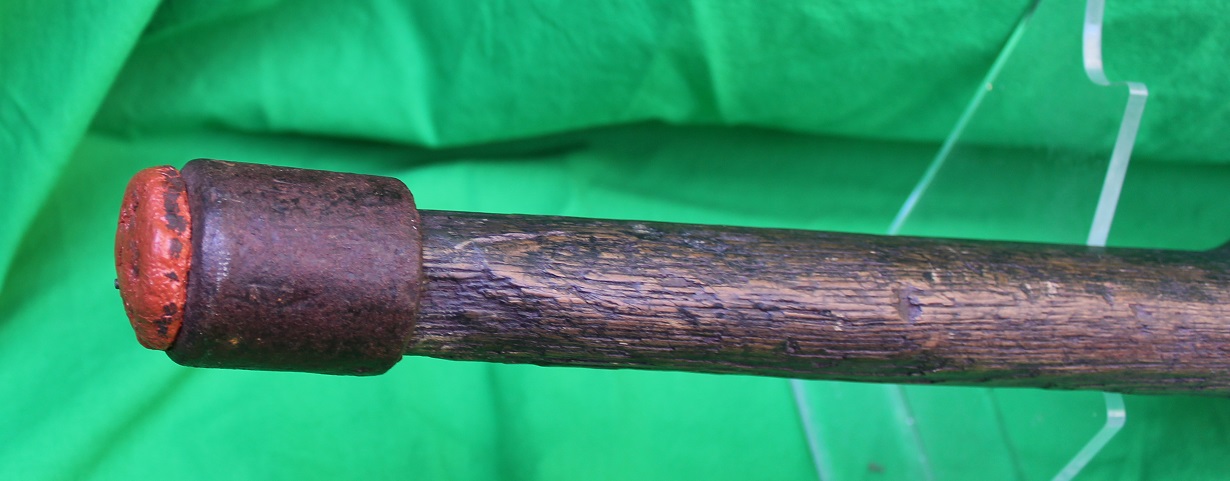
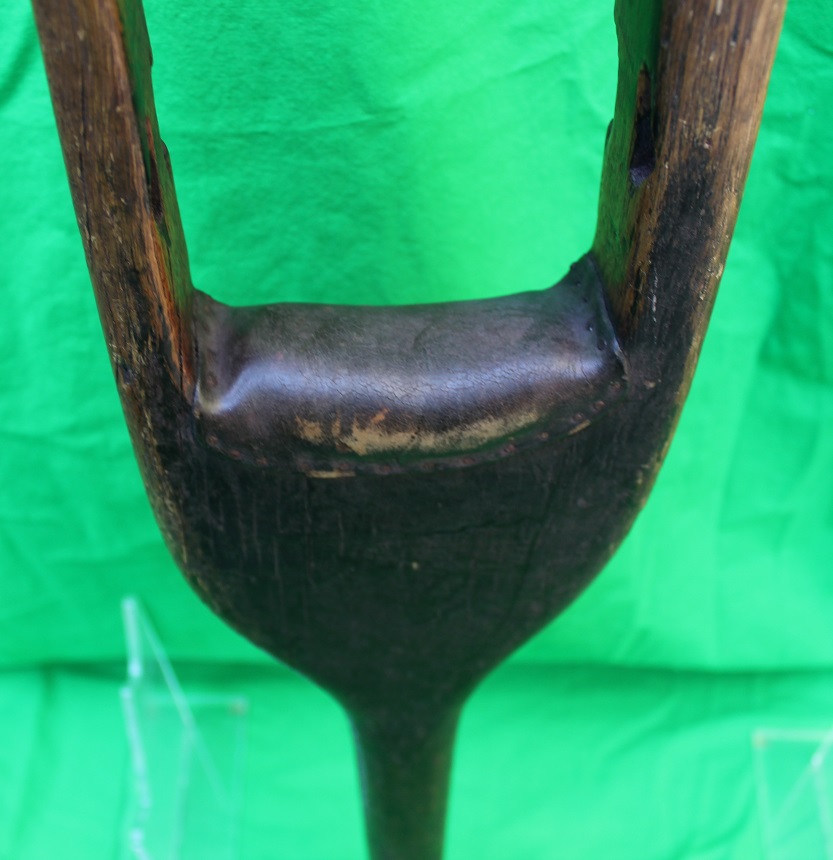
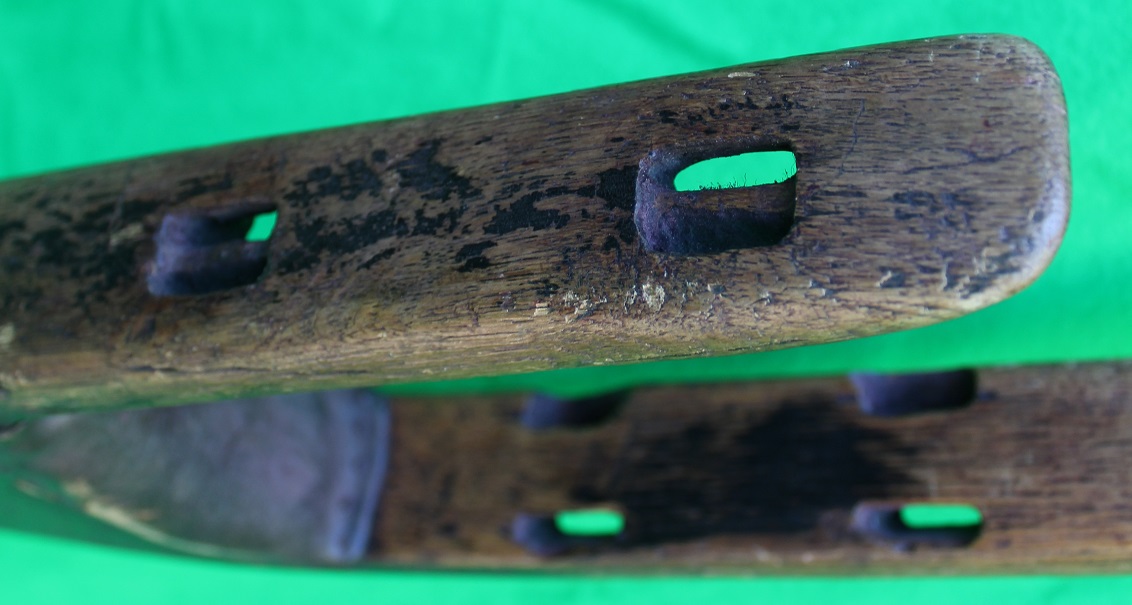
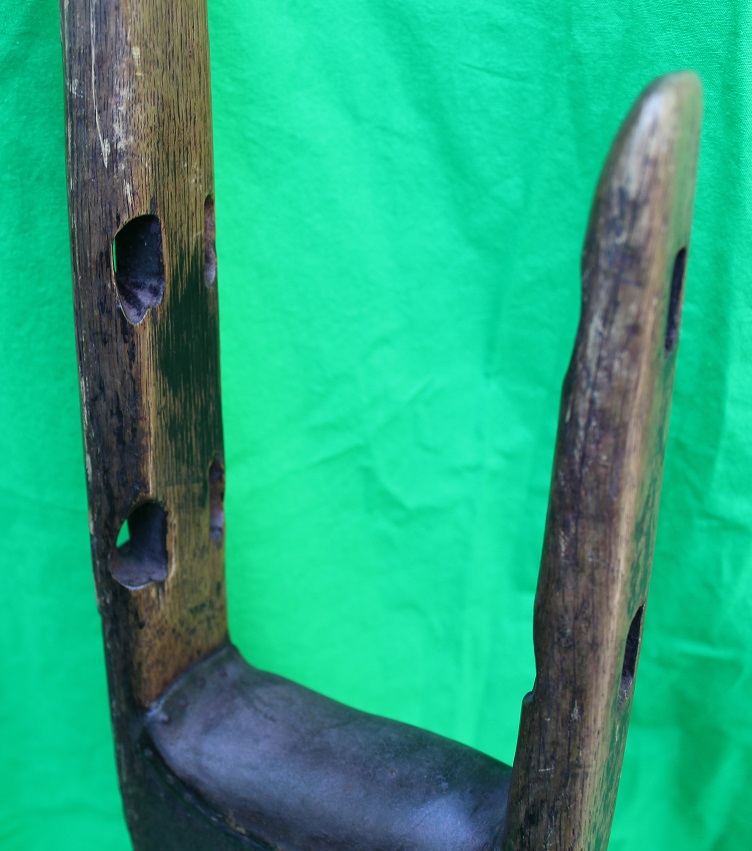
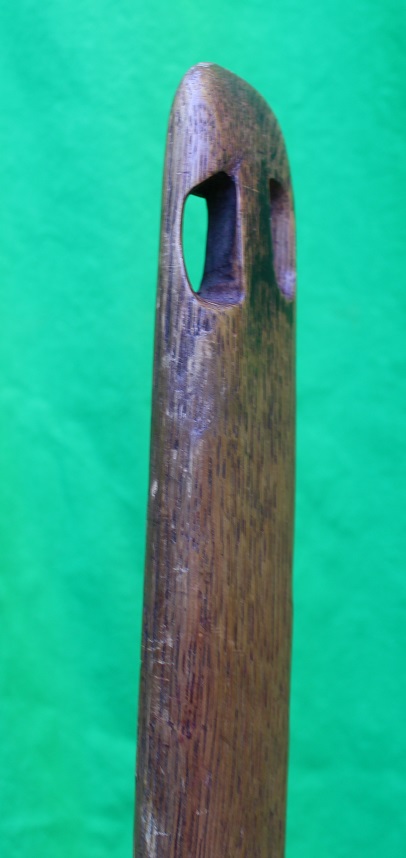
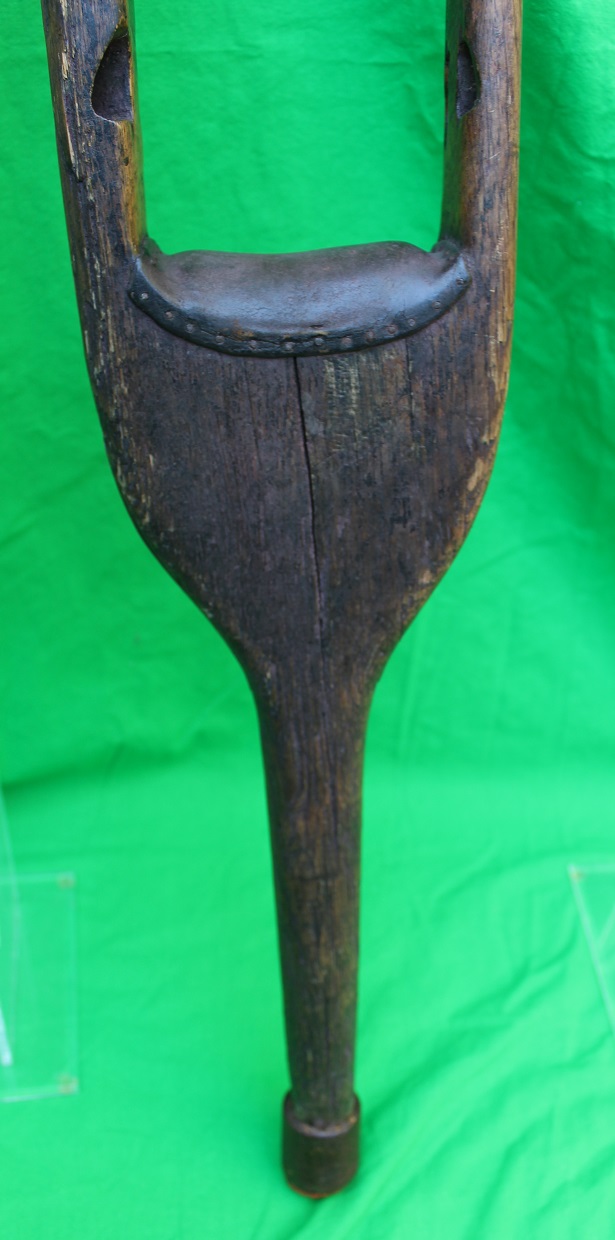

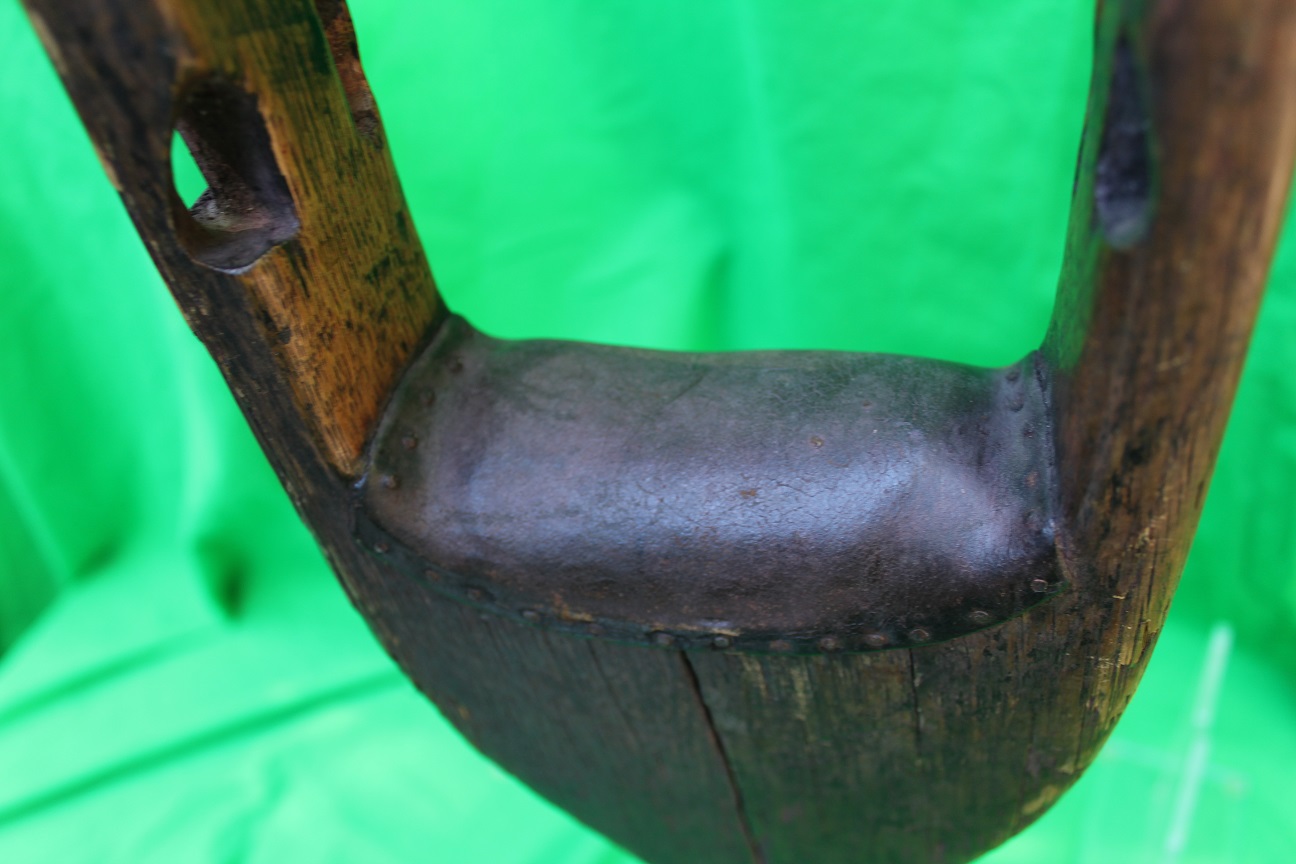
---------------------------------------------------------------------------------------------------------------------------------------------------------
Various other med items.
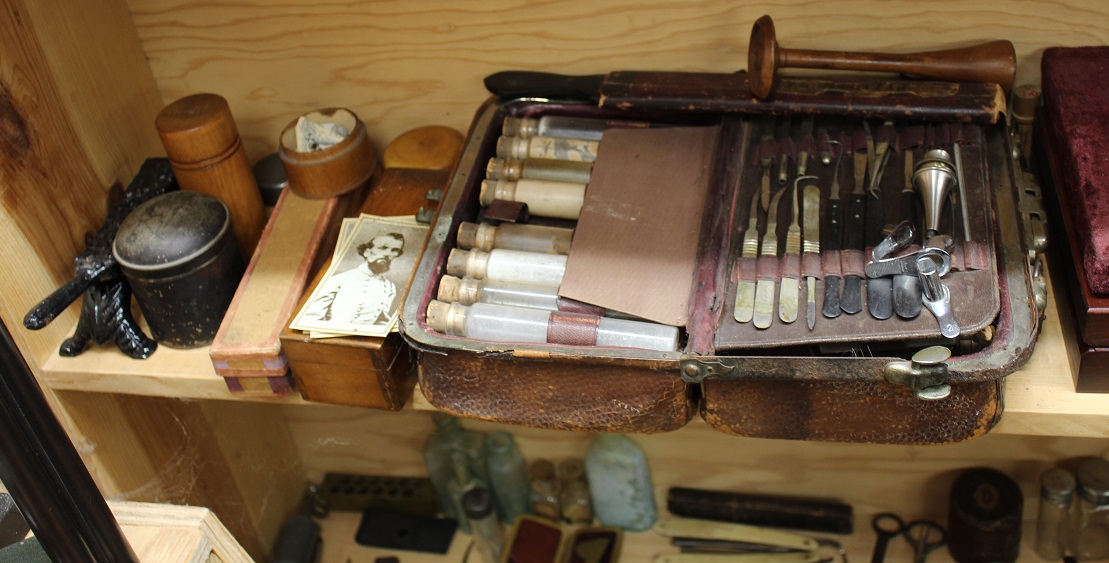
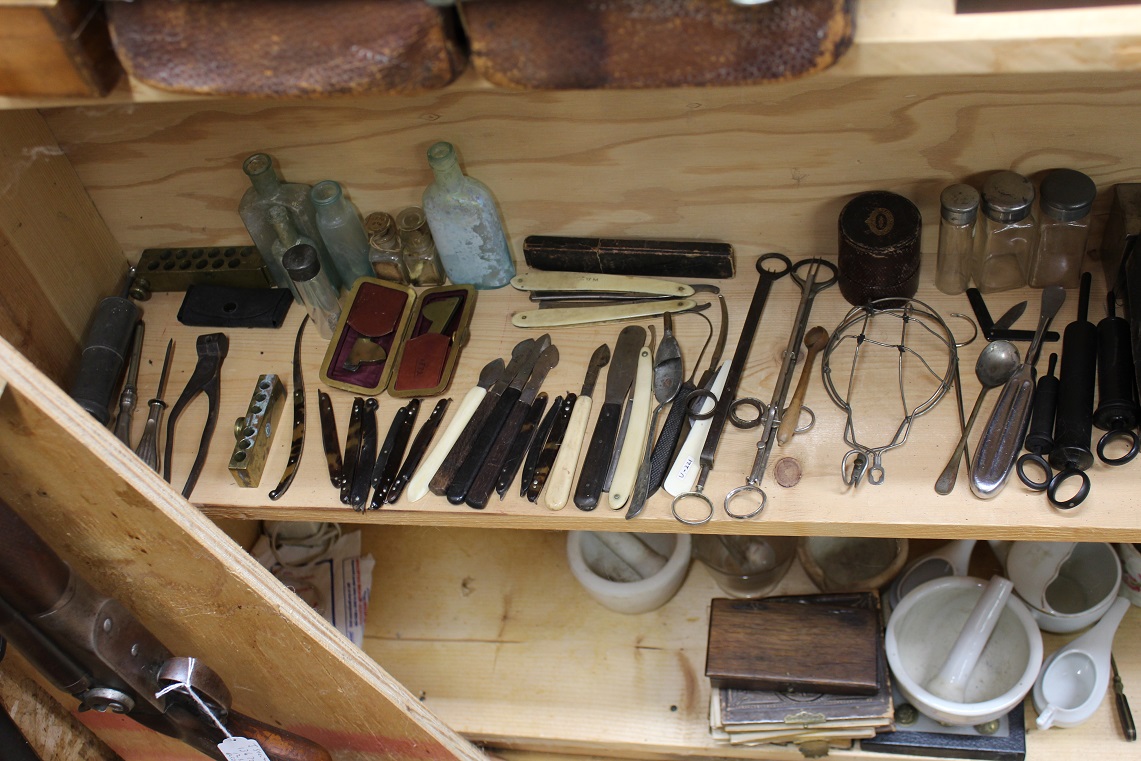
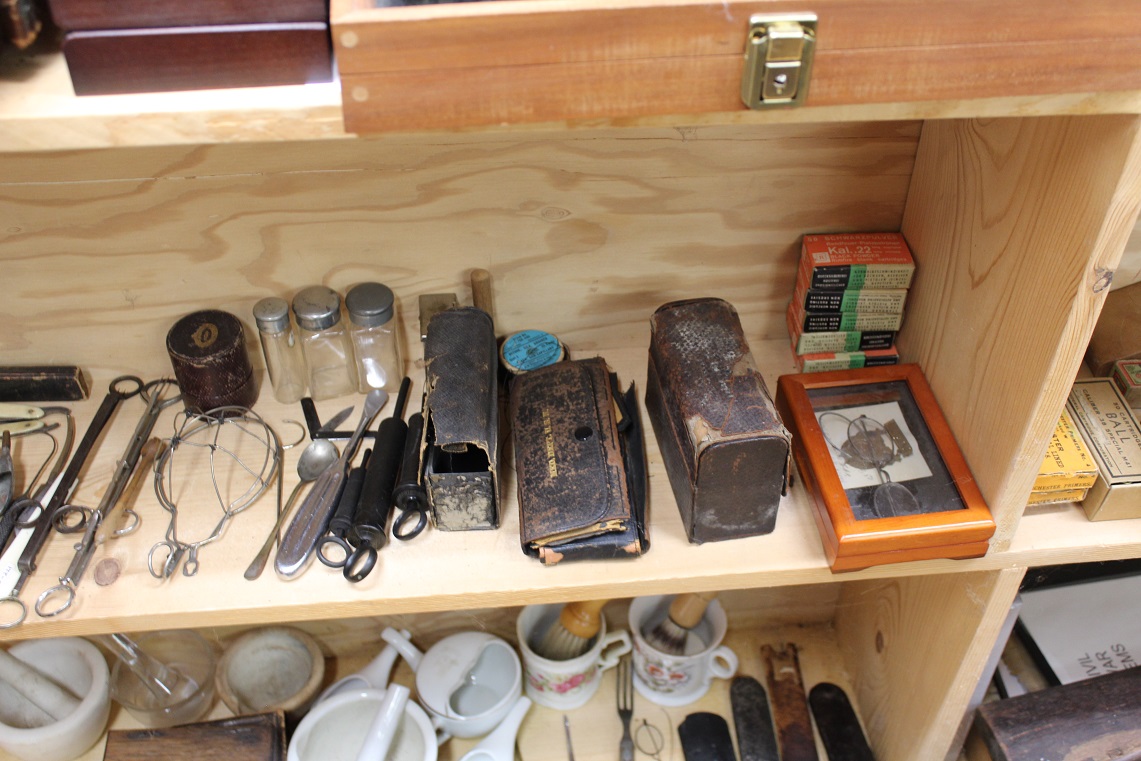
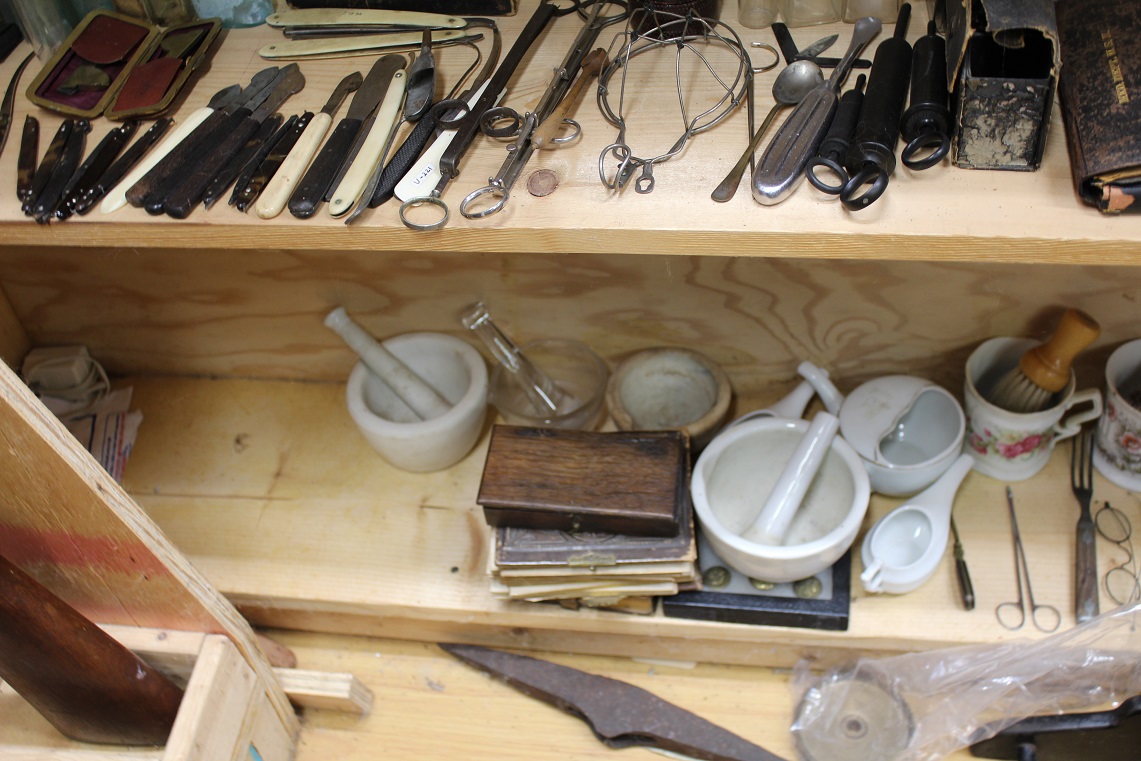
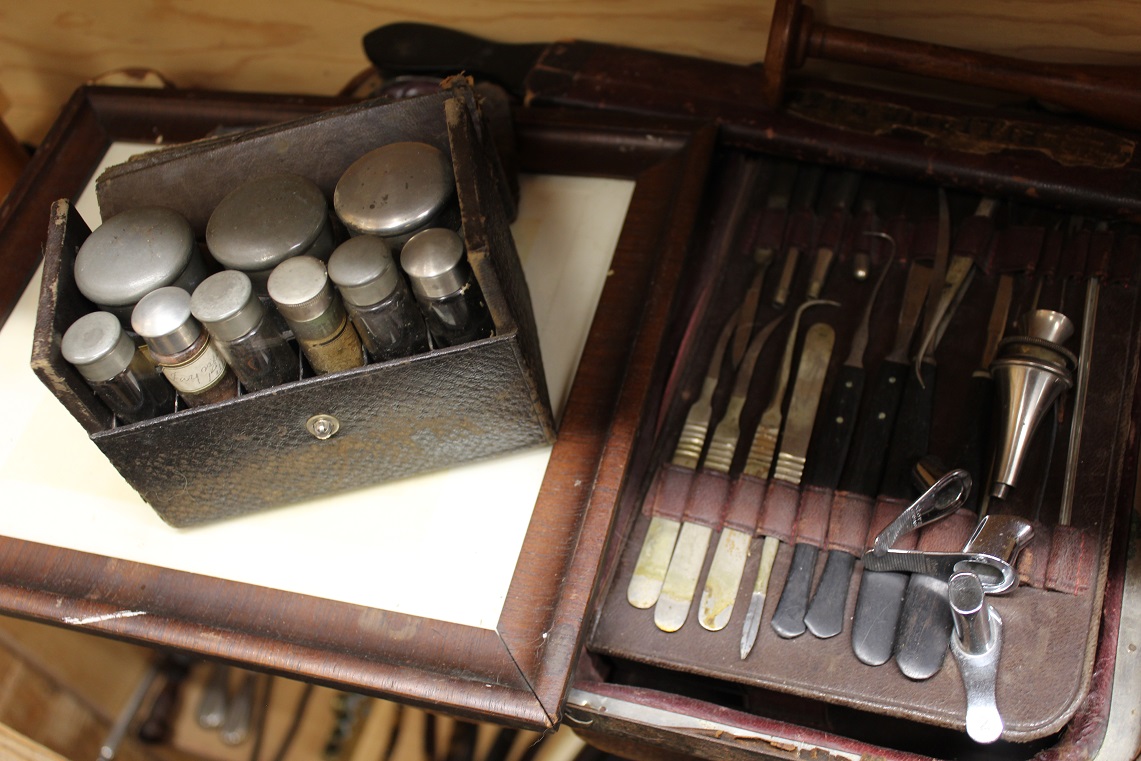
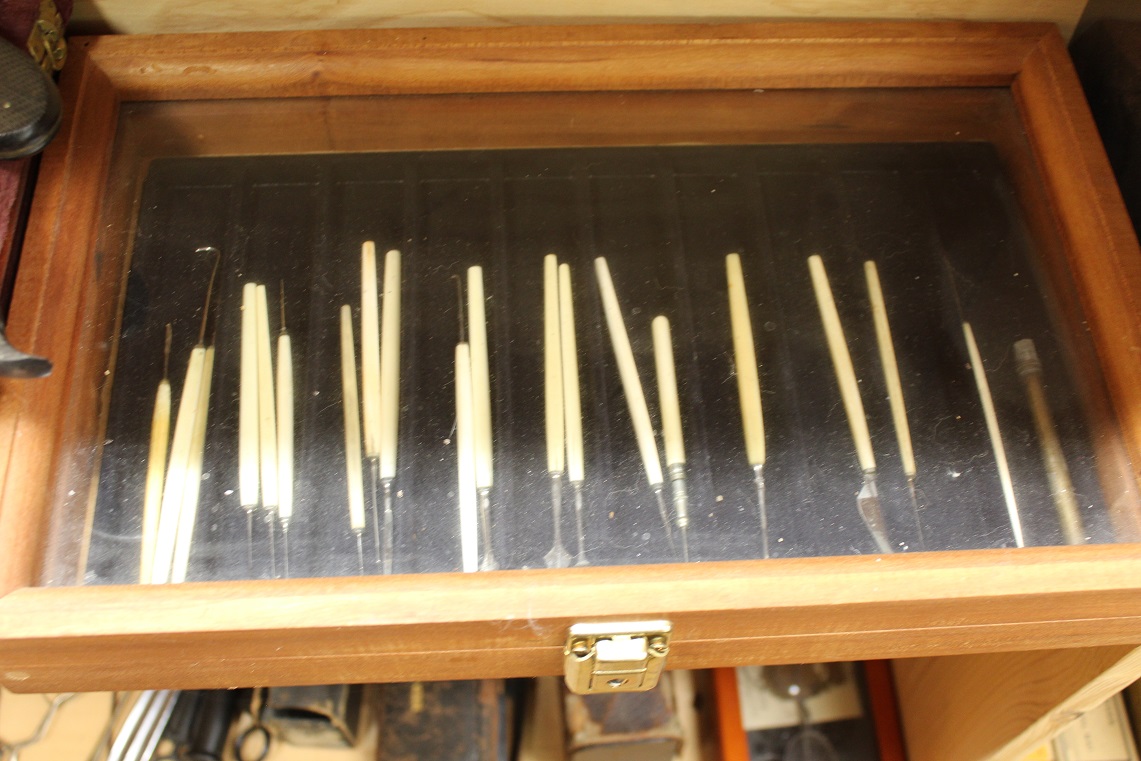
__________________________________________________________________________________________
Med items 2. DUG SPOON FROM SOUTH CAROLINA ENGRAVED U.S.M.C. This is a small metal spoon measuring about 6 inches long and being the type used in the 1800's by the United States Medical Corps. This was a dug piece and has been cleaned
in the area of the USMC. There is a '41' stamped on the underside of the handle. Rare to find Medical Corps marked items! $65.00 Catalog 1-9


__________________________________________________________________________________________
Med items 3
Here's an Indian War era lice comb made from 'French Ivory'. This piece is excellent with no broken tines. French Ivory was made starting in the 1870's when lice was a real big problem! Not a pleasant item but one that was necessary for the times
and belongs in a personal effects display! Nice! $45.00 Catalog 1-37
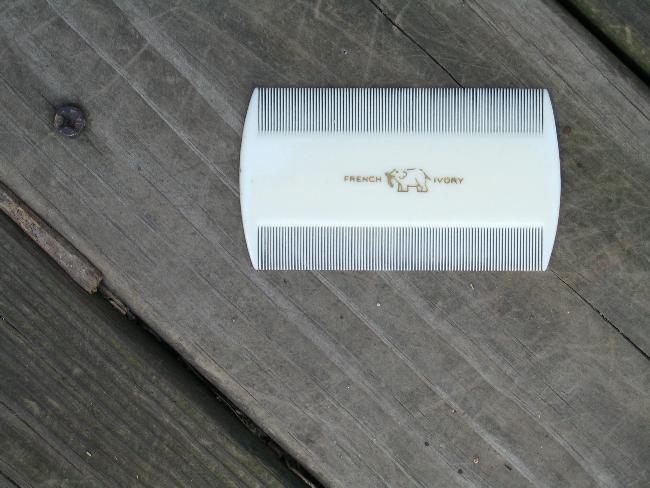
__________________________________________________________________________________________
Med items 4
A Whole Riker Case of V. Mueller and Company Surgical tools.
There is 9 surgical tools from the V. Mueller and Company who has been in business for 115 years so these are from the 20th Century and I believe fairly early. They are nickel plated and some has the locking feature on them. There are hemostats, sissors and forceps. Not Civil War but cheap at $5 for each tool. One forcep has a broken handle on one side. Inquire as to what you want as a couple of the tools have been sold. Catalog 1-48

__________________________________________________________________________________________
Med items 5
Here is a Wagon type Medical Cask/Canteen but could be a nautical water cask as well. This all oak piece measures about 22 inches long and 8 inches tall at the ends not counting the feet. There are 4 iron rivited bands that look to have been painted. The screw fill top and the spigot are made of brass to prevent corrosion. The 2 wire bales that hold the carry handles are also made of heavy brass. The only markings I can find on this unique piece is stampings of 'WT 12 LBS'. The bands are somewhat loose due to wood shrinkage and this piece wouldn't hold wine or water any longer but it is unique and large! One of the base feet is broken on one side but all there and could be repaired if you wanted to. I believe this piece has been refinished but it looks great! $275.00 Francis Lord's Civil War Encyclopedia which talks about an Ambulance Water Keg. The one I have is very similiar except that our's has 2 handles while the one in the article has one handle. Their's is also marked MED. DEPT. and ours is unmarked except for the stampings so I believe it could be a 19th century water cask for ships. Take a look and compare! Even our feet and spigot is exactly the same as the one in the picture from Lord's!
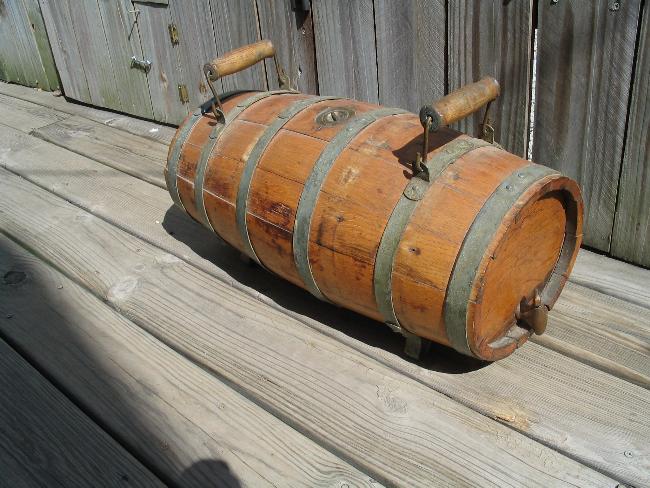
__________________________________________________________________________________________
Med items 6
Here's a fine set of Civil War Crutches as witnessed in ILLUSTRATIONS OF CAMP LIFE by Matthew Brady. These are the more deluxe set with leather arm rests at the top. Much easier to use and on much easier on the arm pits that the usual half moon type more often associated with the common soldier. These would have been used by someone that was about 5'5" tall or so. Nice original condition with original finish. The leather arm rests are worn but complete. Nice ones and would look great in a medical display!! $145.00
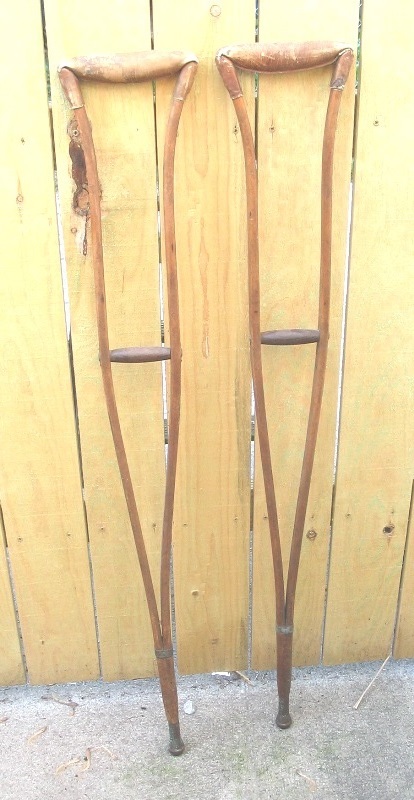
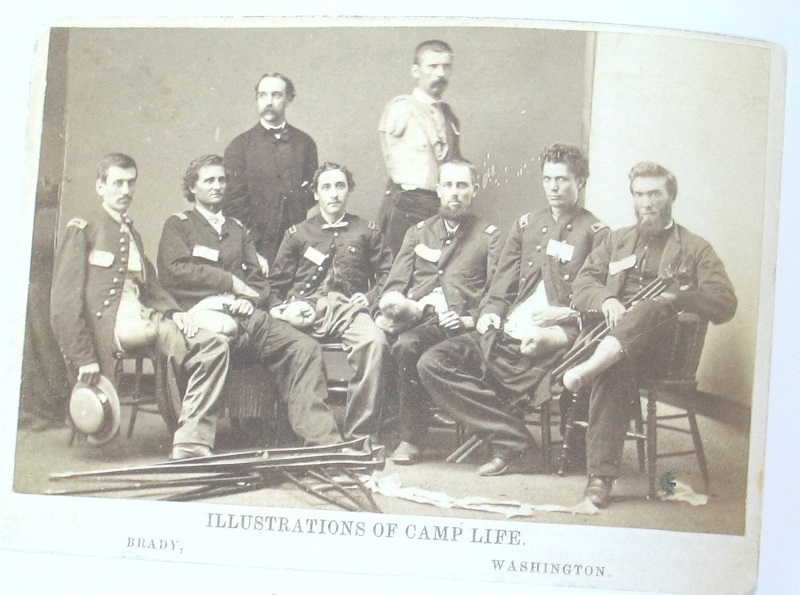
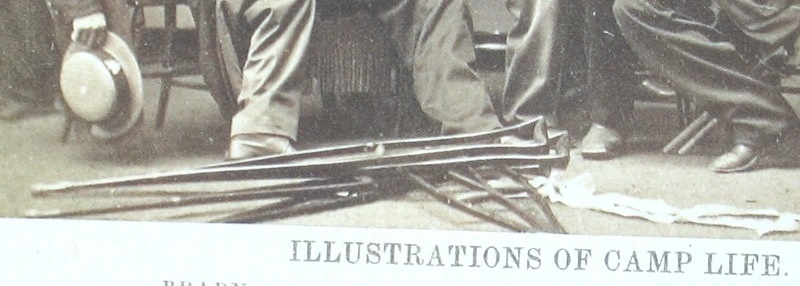
__________________________________________________________________________________________
>
Med items 7
Here is a set of very primitive crutches made from rough sawn hardwood. The arm rests are covered with some some of padded muslin or cotton cloth that is sewn together. One of the covers is in tatters. Many thousands of soldiers had to use crutches after the war and most couldn't afford them so handmade ones were constructed. This set would fit a person of about 5' 5" or so in height. The entire piece has nails and leather washers holding it together which makes it kind of fragile in nature. Great display item! $95.00
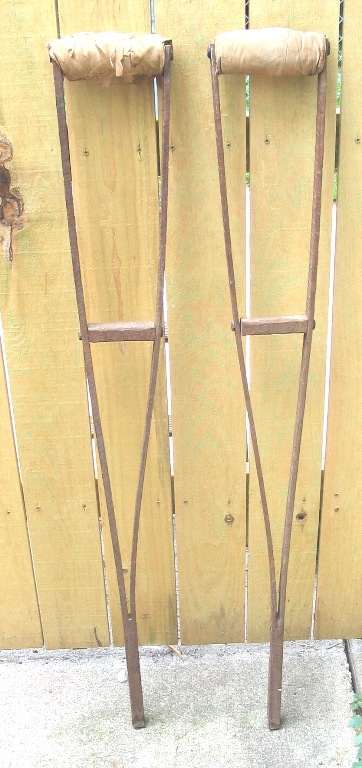
__________________________________________________________________________________________
Med items 8
Here we have a pair of old Civil War era wooden crutches with strips of old cloth used to soften the impace on the arm pits. These crutches were a bear to use long time and I think the addition of the cloth indicates prolonged use. Many thousands of these were produced during the Civil War as we had a bunch of soldiers with lower limb injuries and amputations that needed them unfortunately. Crutches were becoming more user friendly toward the end of the war with hand supports and better supports for under the arms but until then what a bear!!! For this pair $125.00
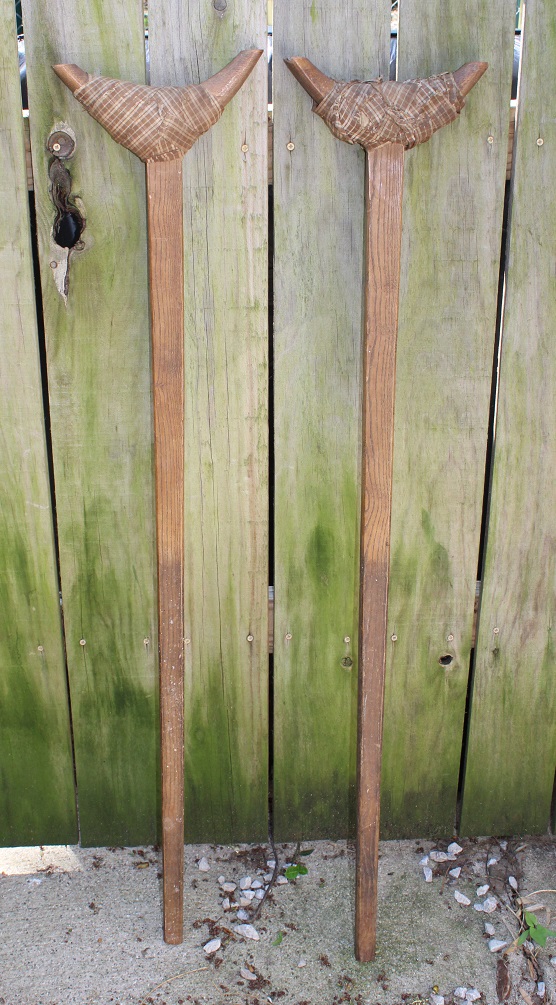
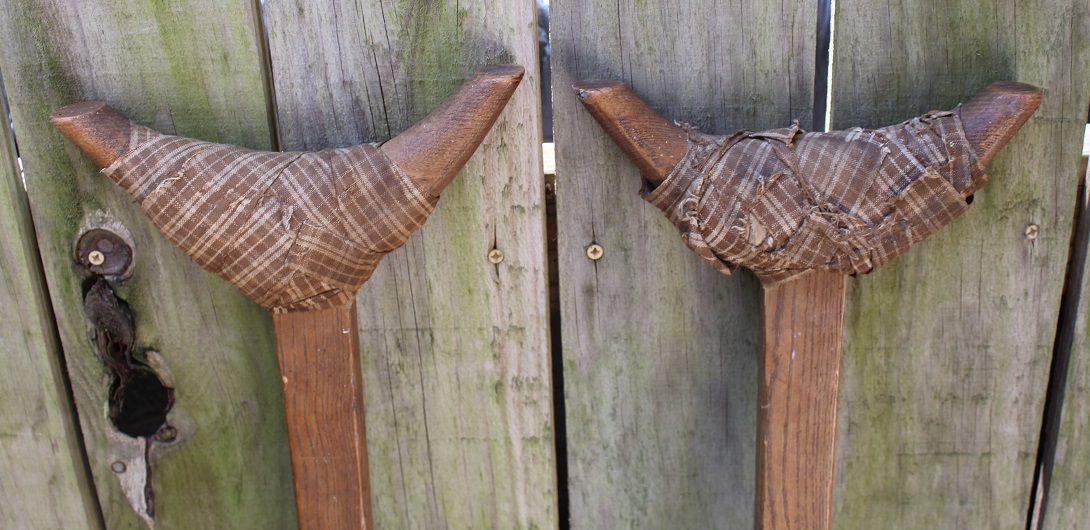
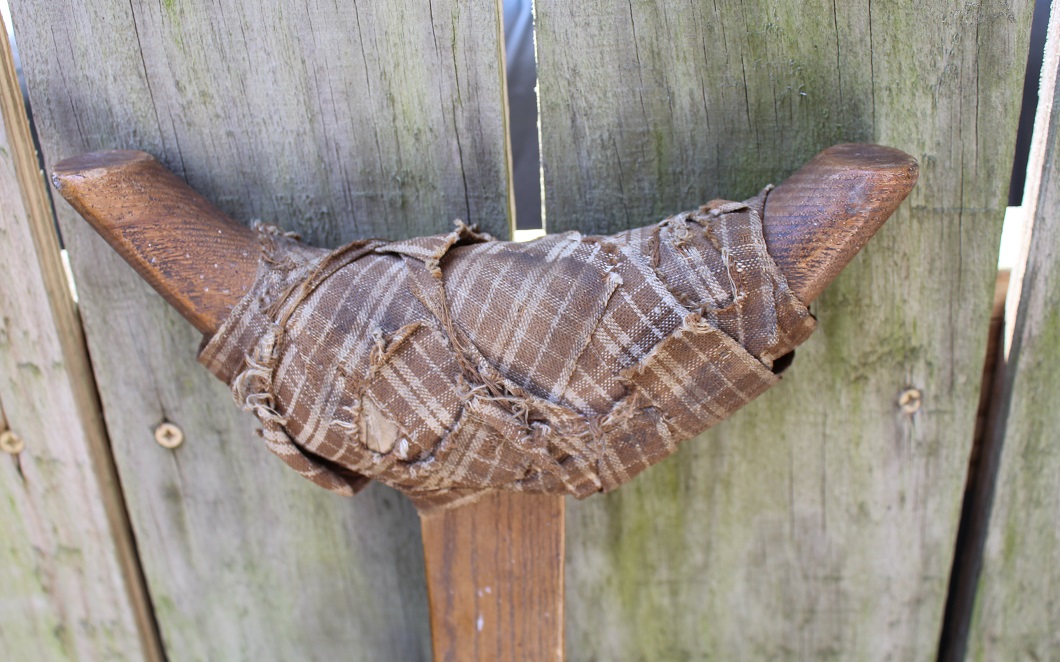
__________________________________________________________________________________________
Med items 9
Here we have a letter being 8 X 9 1/2 inches and written in Ink dated August 13.1862. The letter has been transcribed as sometimes the writting from back there is hard to read. The content is as follows: OFFICE MED. (medical) DIRECT TRANSPORTS Capt. Pitkin, Please inform me if it is possible for you under your instructions regarding the contrabands (slaves) to furnish me with a few for permanent duty on the hospital transports. There s a great deal of heavy and dirty work to be done on the transports and two or three to each ship could be kept in constant employ and made extemely serviceable. If you can comply with my request I would like tow immediately for duty on the Steamship Dan'l Webster. Very Espy, Yr. Obdt. Servt. E. S. Dumster, Asst. Surg. U.S.S. Med. Direct Transports.
On the reverse of the letter is: Capt. Sawtelle August 13, 1862 , Capt P.P.Pitkin, A.Qm. is instructed to furnish to Dr . Dunster Med. Director of transports for the sick such contrabands as he may from time to time make application for. Respy, C. G. Cawtelle, Capt & A. QM. Comdg Depot. Office of A.Q.M., Harrison's Landing VA. Aug. 18, 1862
This letter is positioned between two pieces of acrylic in a frame for viewing on both sides with a stand on the reverse for display. Nice piece! For this document regarding Negros and the Medial Department the price is $145.00
Check out the pics!!!
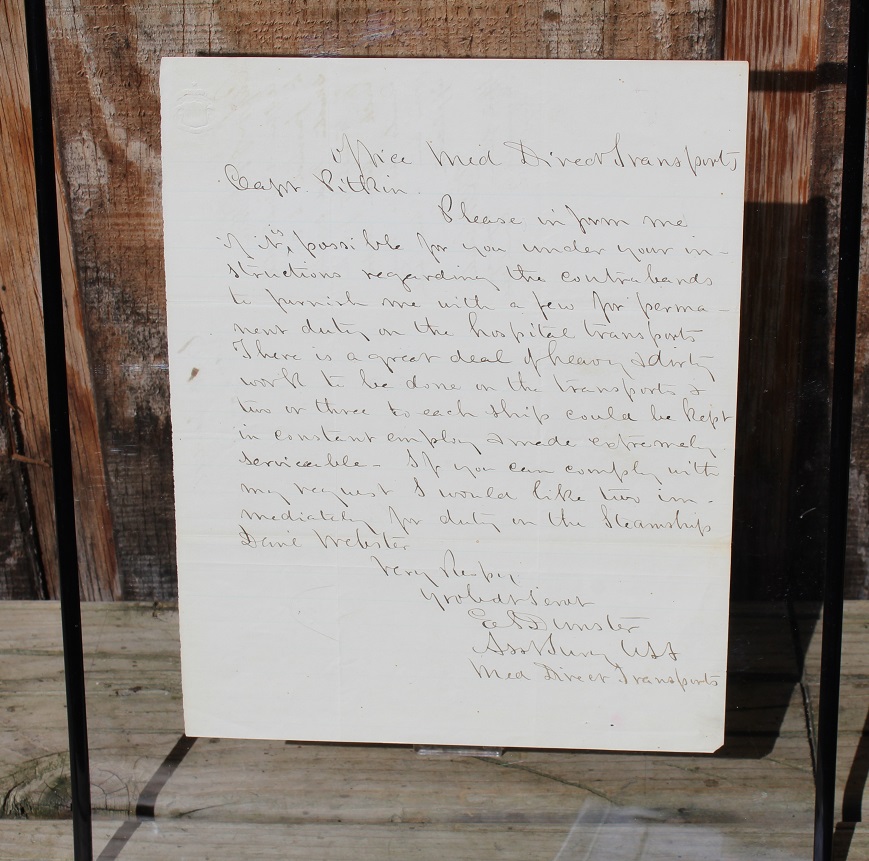
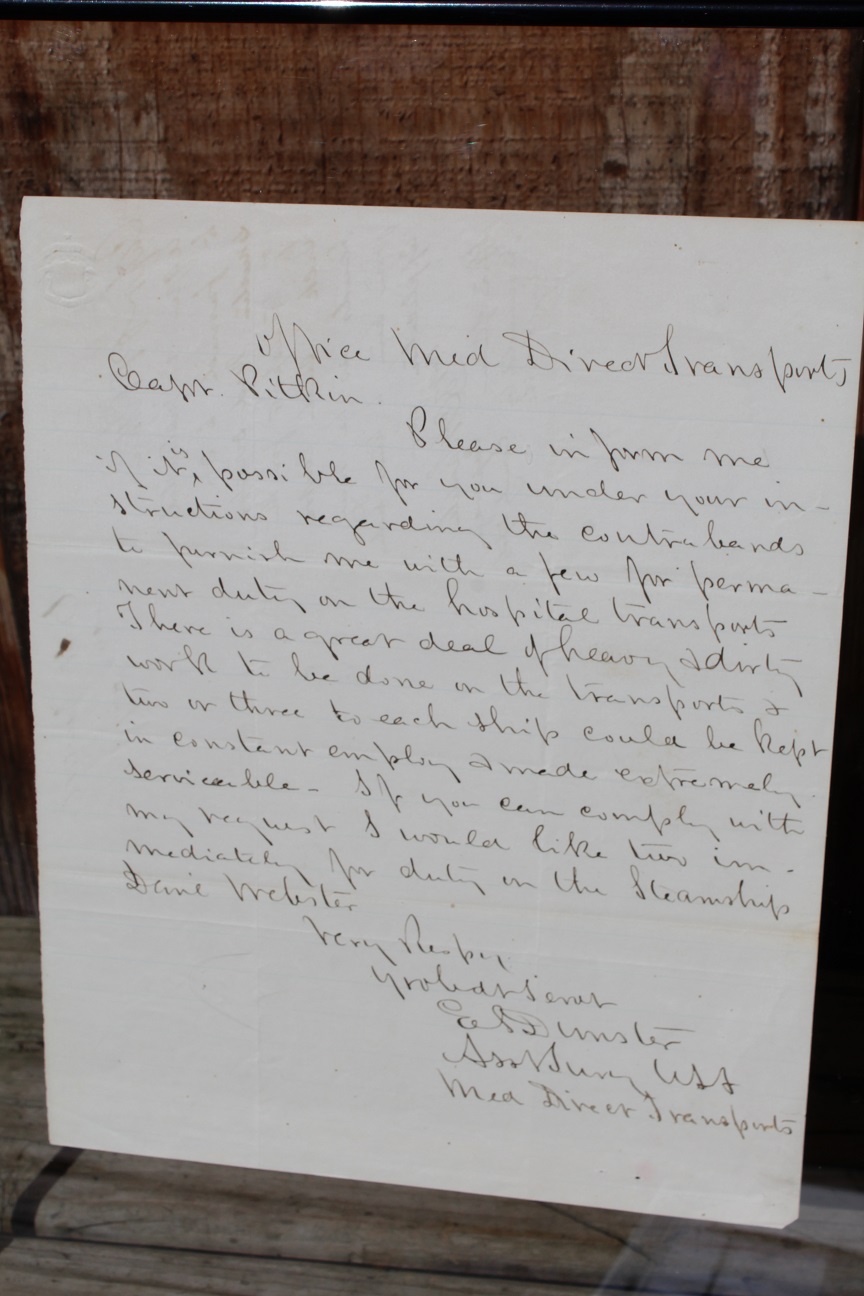
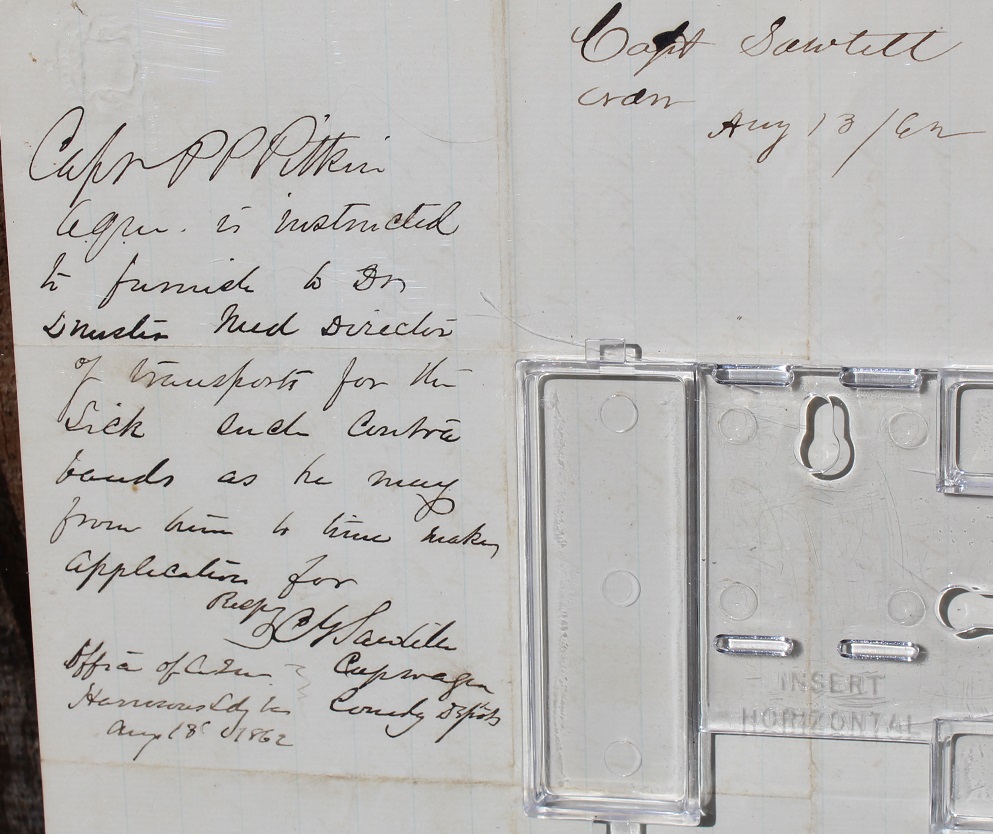
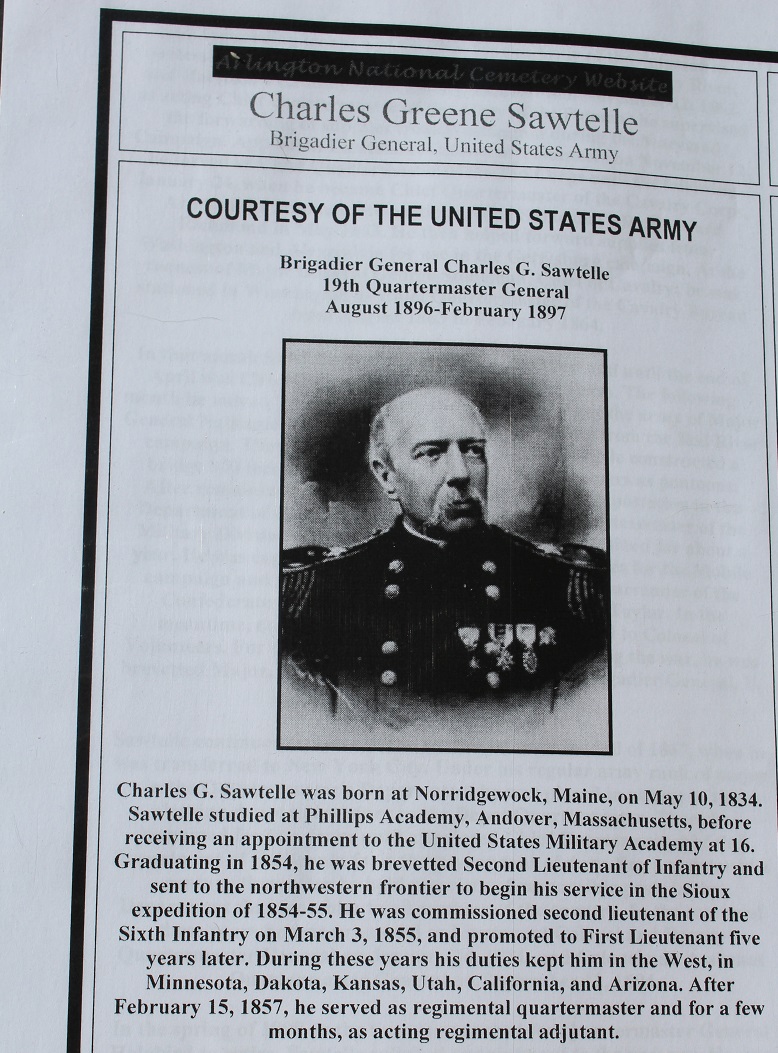
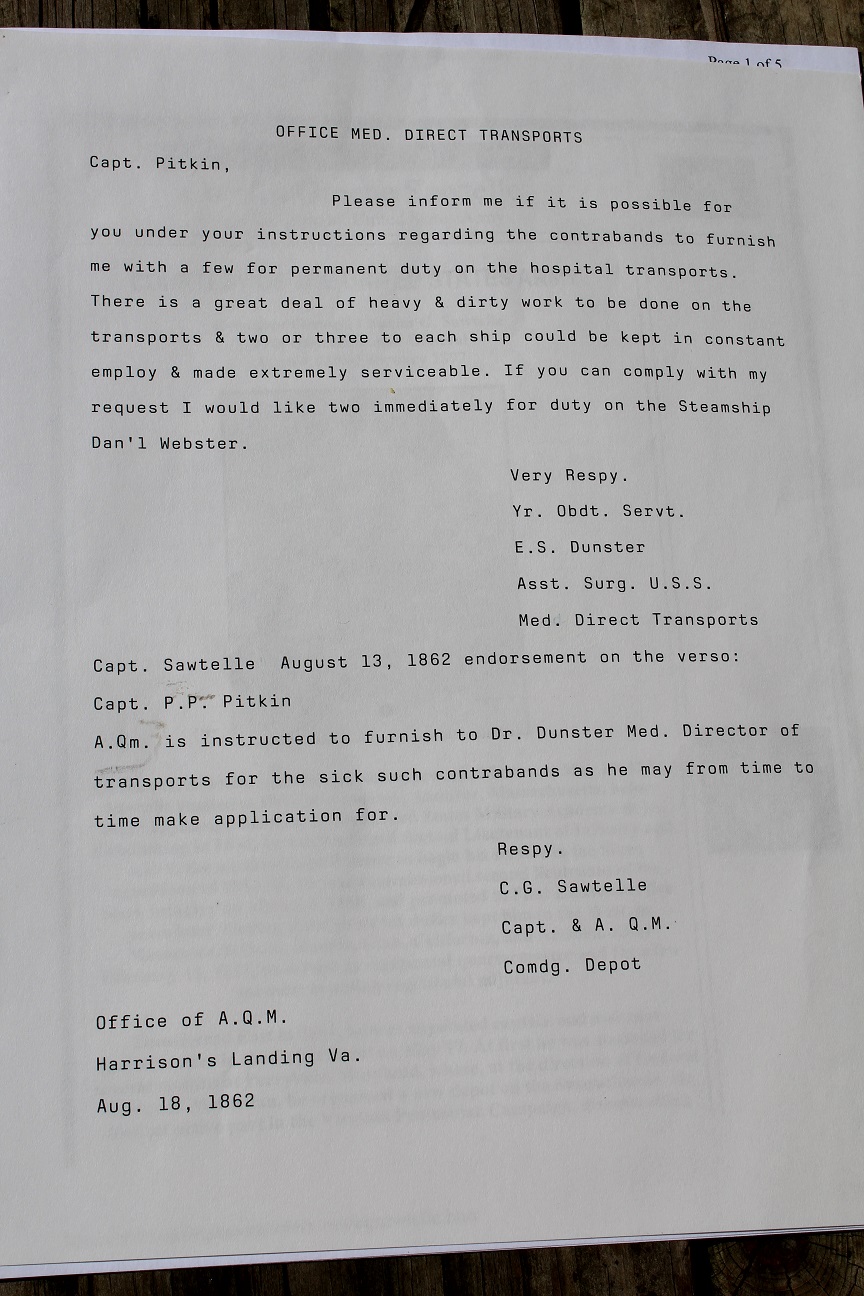
__________________________________________________________________________________________
Med items 11
is a wooden apothecary/surgeon’s spoon. The little turned-wood spoon measures approximately 4 1/2" x 3/4". During the 19th century these spoons were used by pharmacists and doctors to mix medicines and were also known as "Salt Spoons". Civil War Surgeon’s also used these spoons for getting the correct doses of pain killers for wounded soldiers.
In the National Civil War Museum in Harrisburg, Pennsylvania, they show a very similar spoon. $40.00
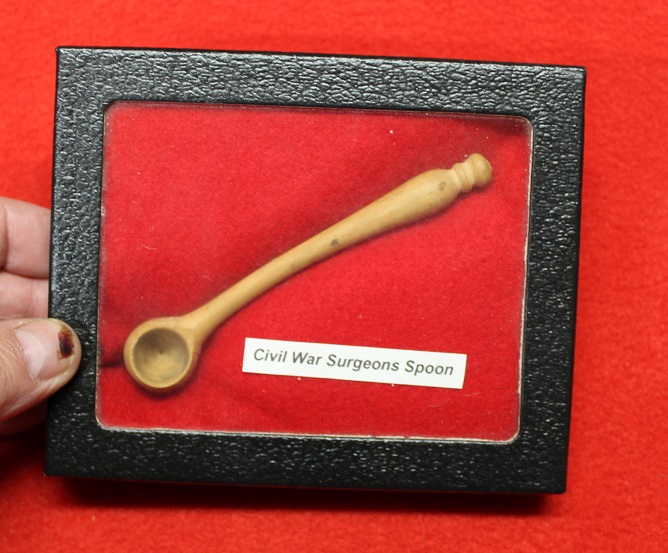
__________________________________________________________________________________________
TC Med Items 12
Here we have a case set of two Medical Fleams. Medical Fleams were used to "bleed" the patient to rid the blood of any toxins or poisons. Bloodletting (or blood-letting) is the withdrawal of blood from a patient to prevent or cure illness and disease. Bloodletting, whether by a physician or by leeches, was based on an ancient system of medicine in which blood and other bodily fluids were regarded as "humours" that had to remain in proper balance to maintain health. It is claimed to have been the most common medical practice performed by surgeons from antiquity until the late 19th century, a span of over 2,000 years. In Europe, the practice continued to be relatively common until the end of the 19th century. The practice has now been abandoned by modern-style medicine for all except a few very specific medical conditions. In the overwhelming majority of cases, the historical use of bloodletting was harmful to patients. George Washington was killed by such a bleeding in 1799. This set is in a leather case with brass trim and has the Doctor's name in initials stamped in the front. The initials are Dr. G.F. and I have no idea who that is. The inside of the case has the date 1892 written on one flap. Both sets of fleams have been cleaned but the one on the top shows lots more use. Take a look at the pics! $195.00
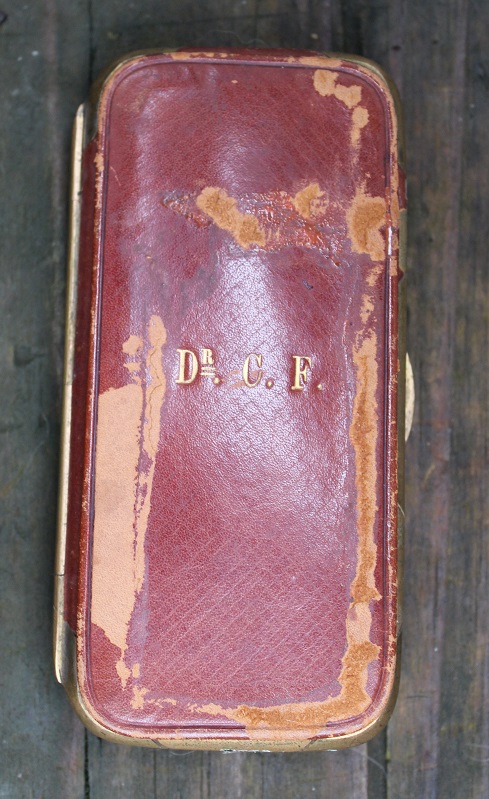
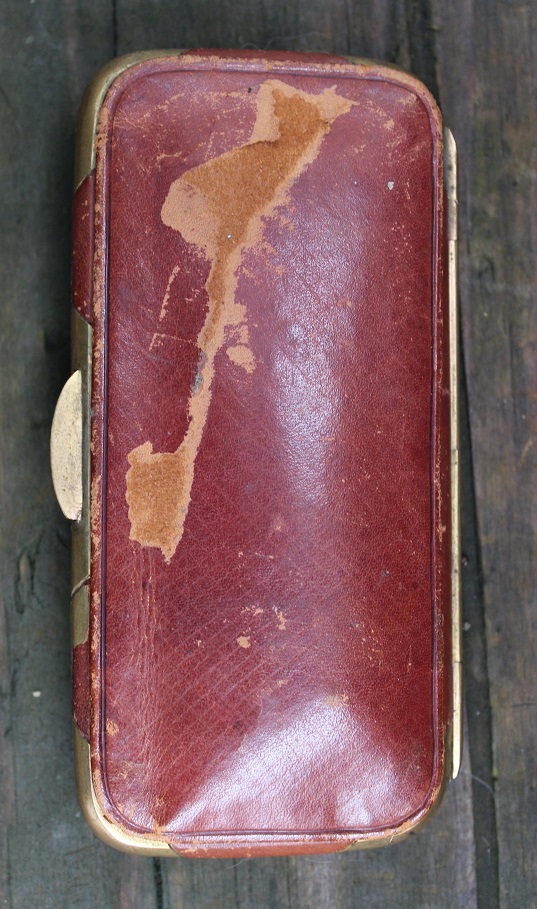
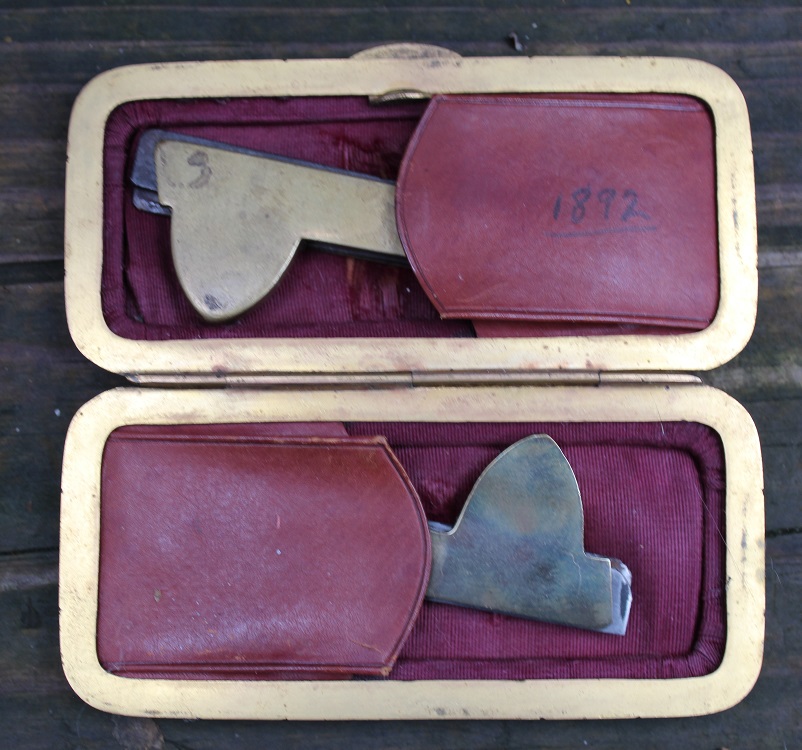
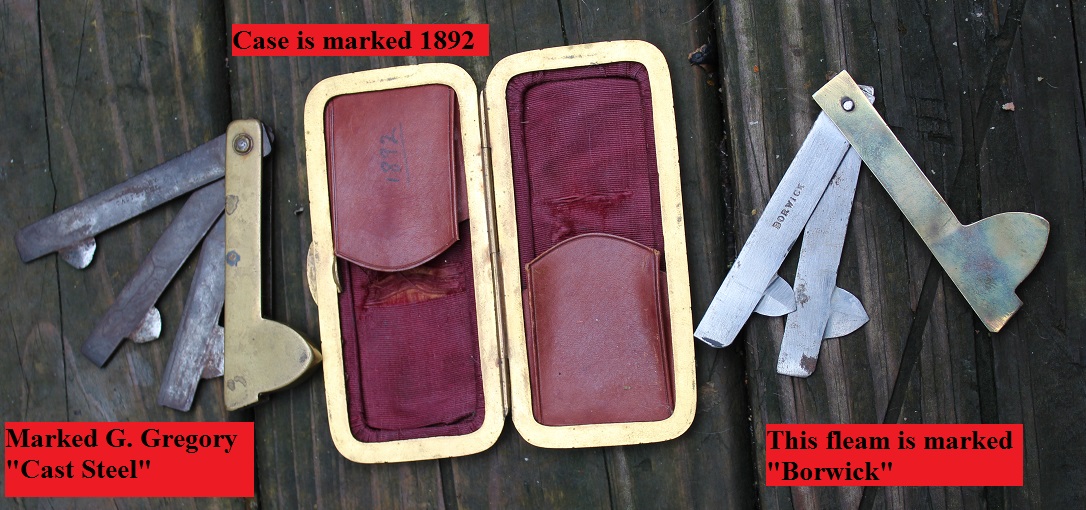
__________________________________________________________________________________________
tc Med Items 13-NY Civil War Amputation Saw-Pending
Here we have a fairly nice Civil War Surgeon's Amputation Saw for the removing of limbs from the injured soldier. Extremely Rare Surgical Amputation Saw by V.W. Brinckerhoff of New York who was in business from 1858 to 1867. The saw has a brass frame and a gutta percha hand grip which has a little damage on both sides and shown in the pics. The blade is in good shape and could still do the job today. This saw is substantially heavy and made for heavy use. Nearly 14 inches long overall. Look at the pics! $000.00

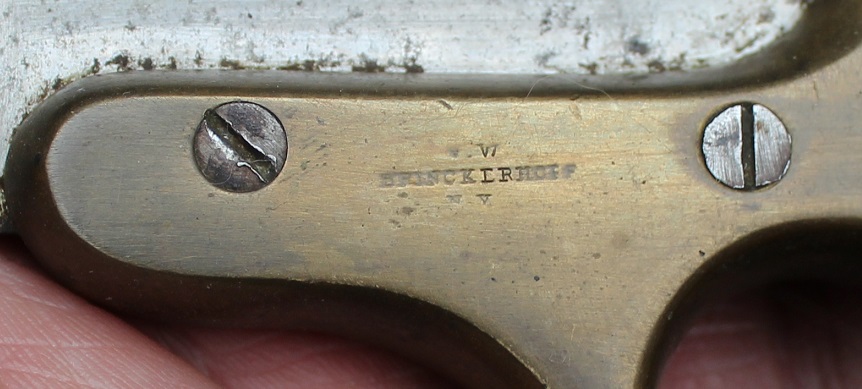
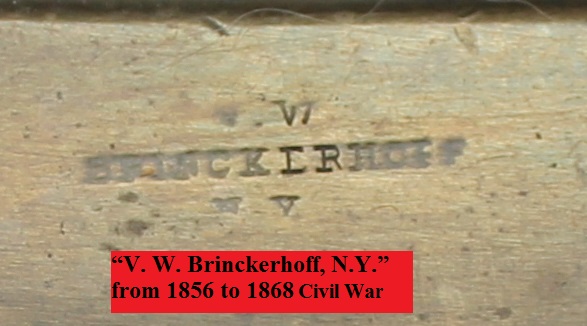
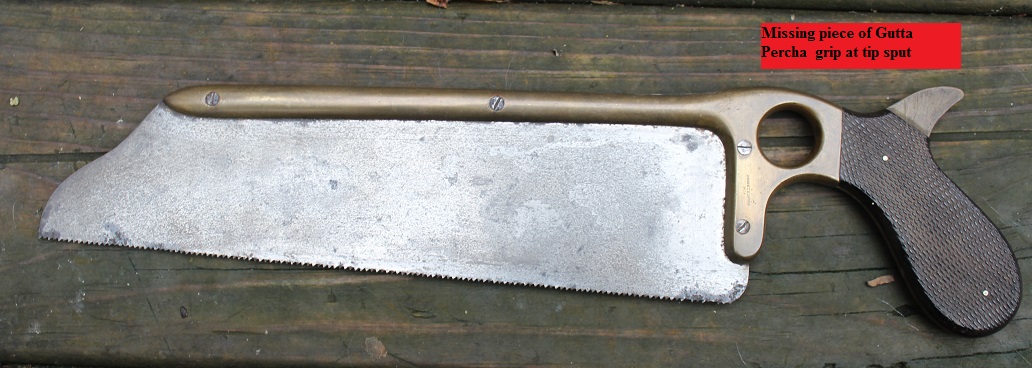

__________________________________________________________________________________________
tc Med Items 14
Sold
Here we have another amputation saw which is lighter than the one above. It's made by W Autenrieth of Cincinnatti, Ohio . William Autenrieth was a Cincinnati, OH manufacturer of surgical and dental instruments, etc. His firm is listed as a supplier during the American Civil War. This saw has his makers mark on the quill over the blade. The blade has some damage to the end and some rust. The grip is complete and without damage. The saw measures 14 inches long overall. Take a look at the pics! $225.00

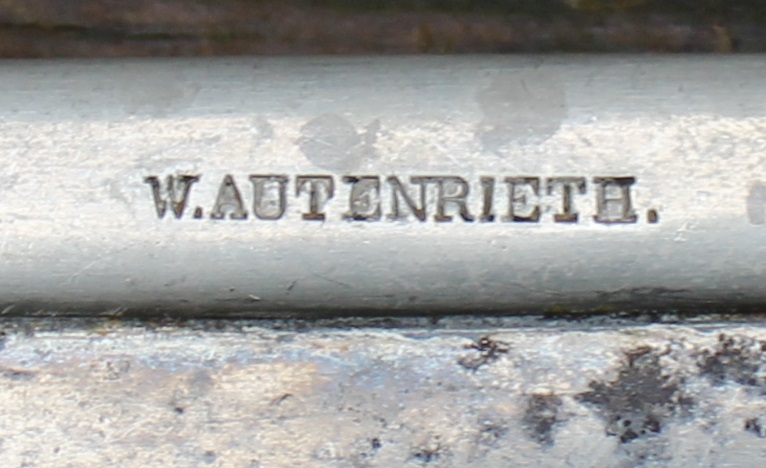

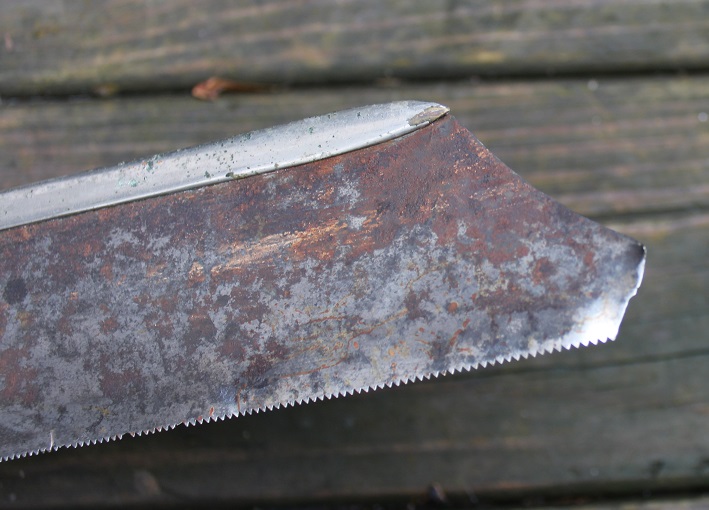
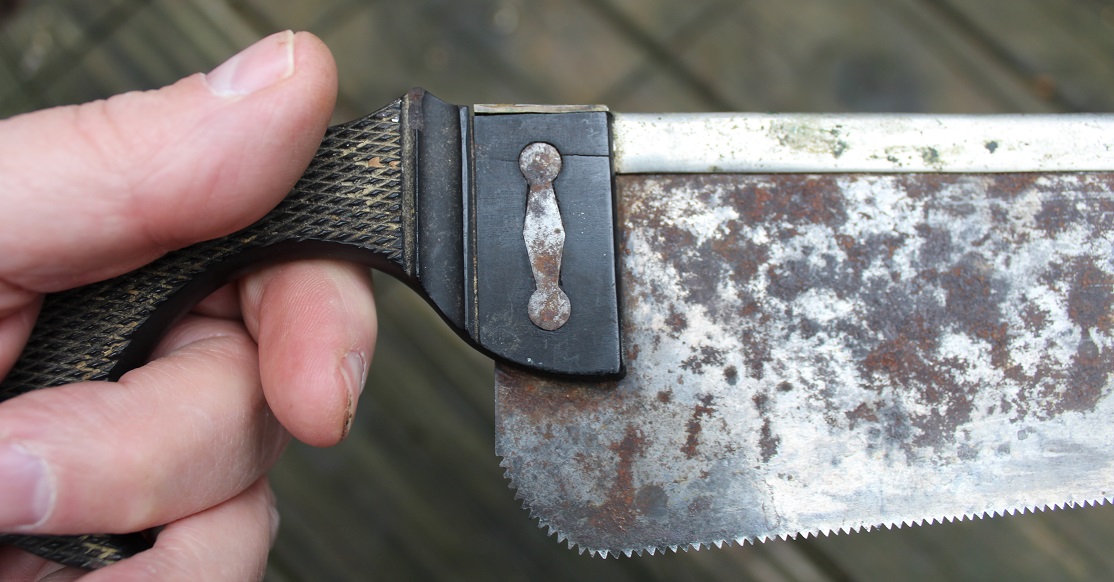
__________________________________________________________________________________________
TC Mortars and Pestles
New Arrivals 219
Here we have a small collection of porcelain and 1 glass mortar and pestles used in medicine manufacturer. These 4 were used by a Civil War Reenactment Doctor in his performances. A is porcelain/stoneware and measures nearly 5 inches across with a 4 3/4 inch long pestle. B is also heavy porcelain/stoneware being about 4 3/4 inches across with a 5 3/4 inch pestle. C is a glass mortar being 3 3/4 inches across with some roughness in the bottom of the glass and a 5 1/4 inch molded pestle and last D is an old porcelain/stoneware mortar with some damage to the rim and no pestle. D measures about 4 inches across and is stamped on the bottom ACID PROOF. A Mortar and pestle is a set of two simple tools used from the Stone Age to the present day to prepare ingredients or substances by crushing and grinding them into a fine paste or powder in the kitchen, laboratory, and pharmacy. The mortar is characteristically a bowl, typically made of hard wood, metal, ceramic, or hard stone such as granite. The pestle is a blunt, club-shaped object. The substance to be ground, which may be wet or dry, is placed in the mortar where the pestle is pounded, pressed, and rotated into the substance until the desired texture is achieved. Native Americans used mortars and pestles to grind grain for cooking. $30 each for the larger ones, $20 for the glass one and $10 for the one marked Acid Proof.






__________________________________________________________________________________________
TC invalid feeders
New Arrivals 218
Here we have 3 of these porcelin invalid feeders. These fine porcelain feeders are all in good condition. They were filled with soup or broth and then could be feed to a person laying down. This would allow to feed a wounded , sick person with out them having to lean up or get up and without spill food over the patient. These were also used to feed young children, infants and elderly folks. These have been seen with military stamping and Red Cross markings on them. Great for a medical display or even a early military / medical display. Invalid feeders were used from the 17th century until the 1930s to feed both invalids and infants when they were unable to feed themselves. A mixture called pap was made using bread, honey, and milk and used to feed the sick. Feeders such as these were also used to administer liquid medicines. The smaller feeders are about 6 inches long and 2 1/4 inches across while the larger one is 4 inches across not counting the handle and 5 2/4 inches long including the spout. $30 each for the smaller ones and $45.00 for the larger one. Take a look at the pics! No breaks, cracks or chips!!




__________________________________________________________________________________________
TC pain
New Arrivals 216
Here is what we call a "pain" bullet. I suppose bullets could be used to bite down on when there was no anesthetic but it's not likely. The myth about “biting the bullet” may have come from the fact that only a low dose of anesthetic was used during the Civil War, just enough to make the patient insensitive to pain. Surgeons worked quickly and could complete a major operation in a matter of minutes. Many men moaned and moved about due to the agitating effects of a light dose of anesthetic and some had to be held down by assistants, but they were unconscious and could not feel pain. Outside observers may have assumed that the men were being operated upon with no anesthetic, not understanding that the groans and thrashing movements were caused by the chloroform or ether. Never the less we have a bullet here that looks to have been chewed on. Many were chewed on by animals but this has spots that definitely look like a molar chomped down on it. You decide for yourself. Comes in a glass medical vial with screw on lid. $35.00





__________________________________________________________________________________________
New Arrivals 215 Here we have an Antique Cast Iron Apothecary Pharmacy Cork Press. Doctors and pharmacists used these presses to resize corks so that they would fit in the bottles
and vials that they needed them to fit in. This one is in excellent condition! $85.00
__________________________________________________________________________________________
TC New Arrivals 214 Here we have a 6" Portable Brass Field Microscope- Antique Vintage Style reproduction that was used by a Civil War Physician Reenactor in his performances on the battlefield.
This piece comes in an authentic "antiqued" case and is in perfect condition with glass slide and tweezers. For this set $39.00 Check out the pics!
__________________________________________________________________________________________
TC 1 New Arrivals 213 Here is a Late 19th century Doctor's medical powders/pill kit with glass vials. This kit dates from 1886 to after the first of the 20th century. There are 3 larger glass containers
and 6 smaller round vials that contain some powders and pills. The vials have mostly pewter tops but a few have steel screw on tops. Check out the pics! The leather case for
these vials is not too bad but definitely not perfect. Has a shield embossed in the leather. $95.00
__________________________________________________________________________________________
TC 2 New Arrivals 212 Here is another Late 19th century Doctor's medical powders/pill kit with glass vials. This kit dates from 1886 to after the first of the 20th century. There are 10
larger glass containers and all have labels on them. The vials have steel screw on tops but not pewter. Check out the pics! The leather case for these vials is worn but
definitely still serviceable. The vials are 3 1/8ths inches tall no counting the caps. $95.00
_________________________________________________________________________________________
TC 3 New Arrivals 211 Here is yet another small Late 19th early 20th Century Doctor's medical powders/pill kit with glass inserts. The taller ones are about 3 1/8th inches tall not counting the
caps. The caps are metal screw caps. The tall round vials are marked with contents while the small glass vial also has the name of the pharmacist on it out of Main. The
leatherette case is not that good for this one but most of it is still there. A nice Medical Display item! $45.00
_________________________________________________________________________________________
TC New Arrivals 210 Here we have a United States Navy Pocket surgical set made by G. Tiemann & Co from New York circa 1890's. Tiemann was one of the major suppliers of surgical sets and instruments during
the Civil War. Tiemann was in business from 1826 to 1900. Tieman was at their New York address from 1886-1900 which was at 107 Park Row. This set was made for the MED.
DEPT. U.S.N. and is in a leather case but the case is not in the best condition for the most part. It looks like that all the instruments are intact however and in pretty
good condition for their age. The handles of the tools are plated. Still complete and still makes a nice display item. These instruments were on display by a Civil War
Physician reenactor. For the set. $95.00
__________________________________________________________________________________________






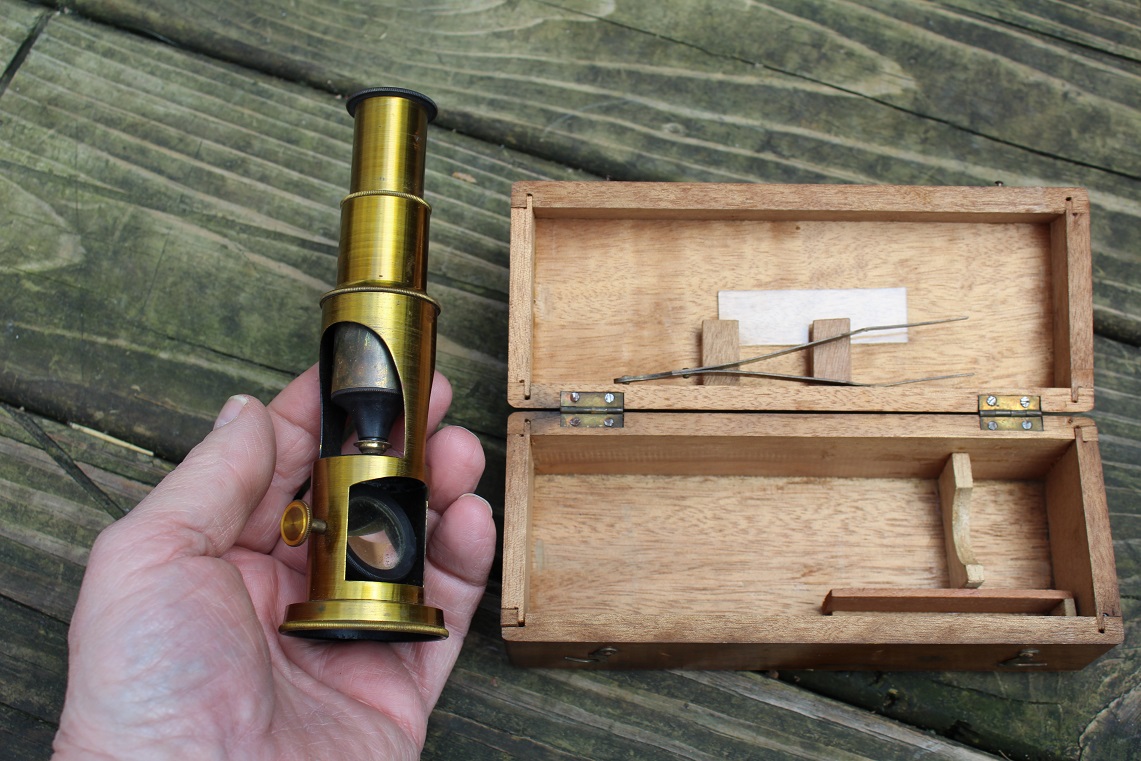






















2